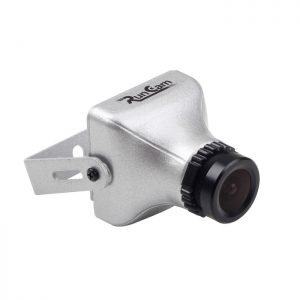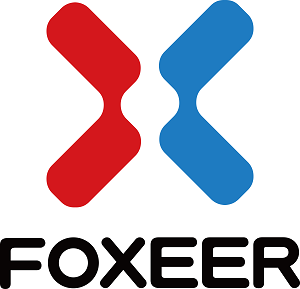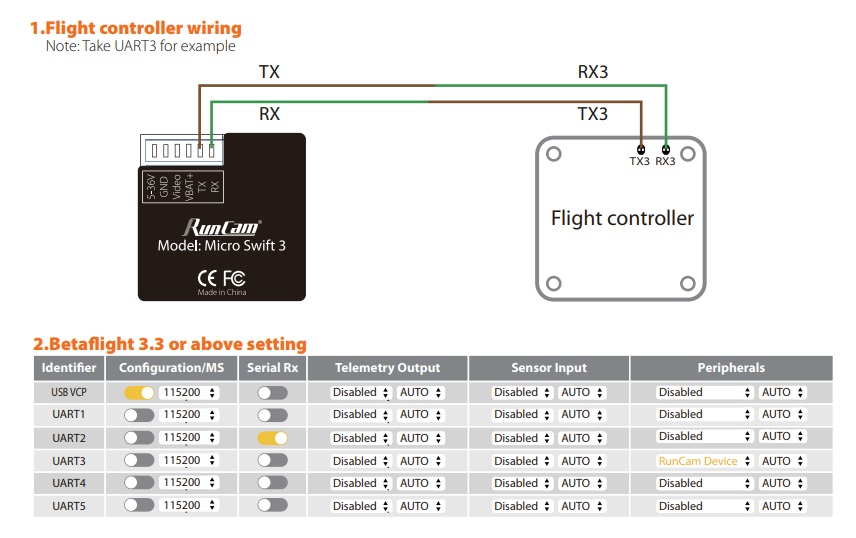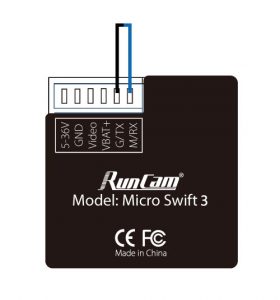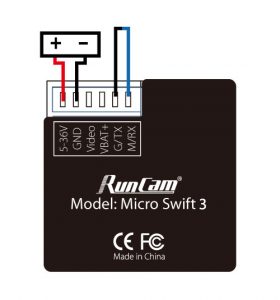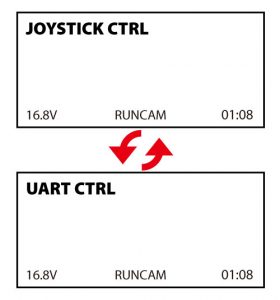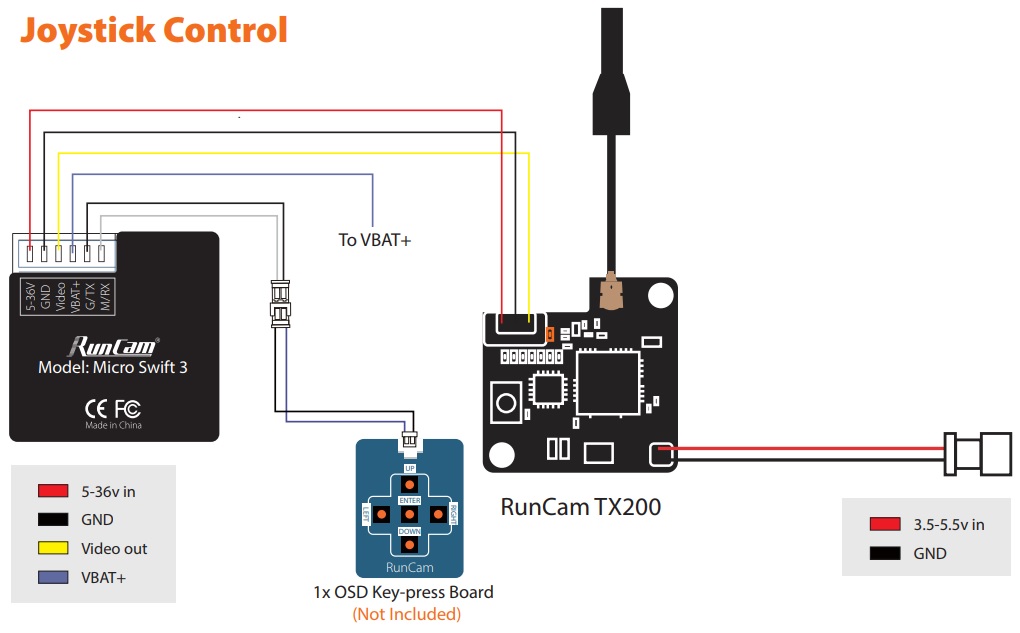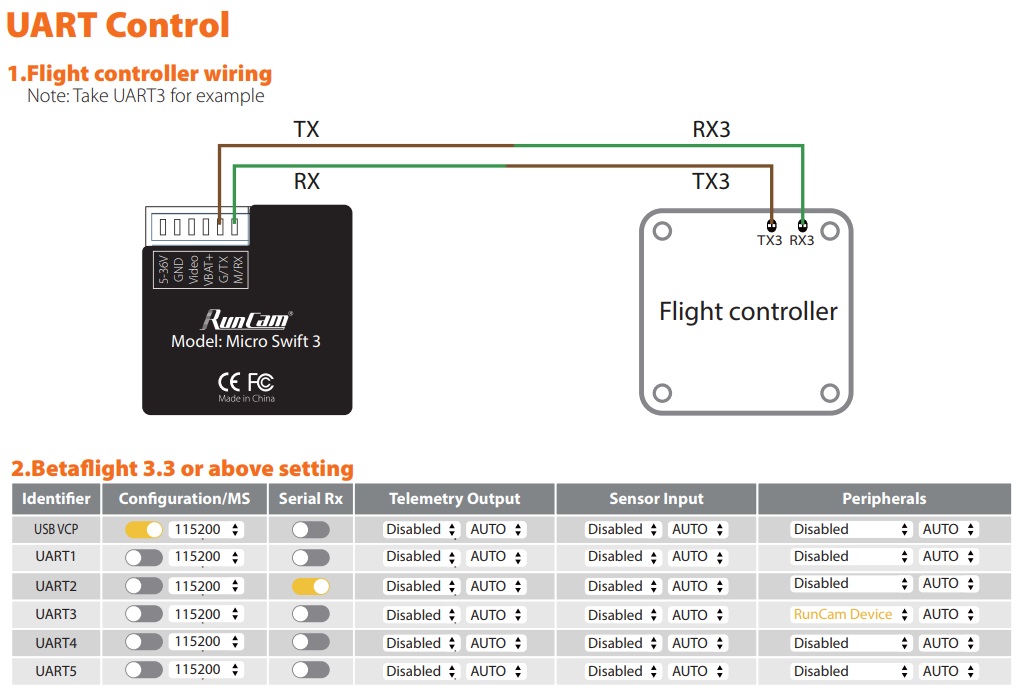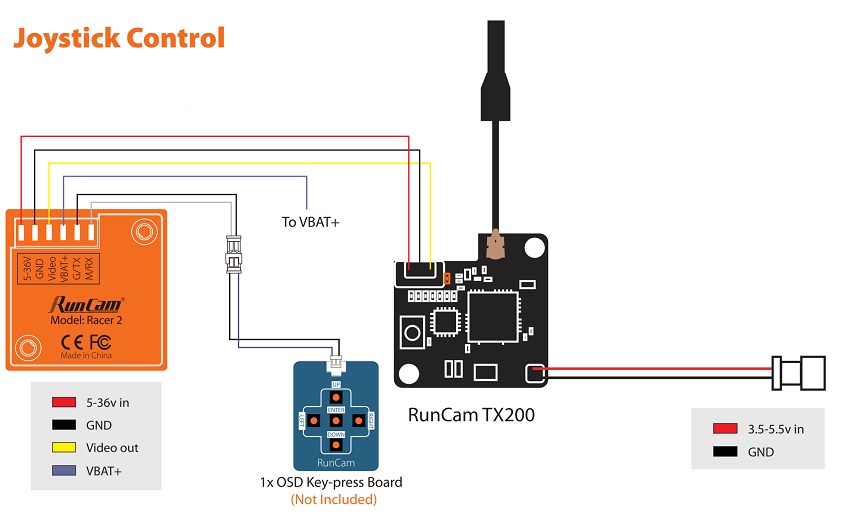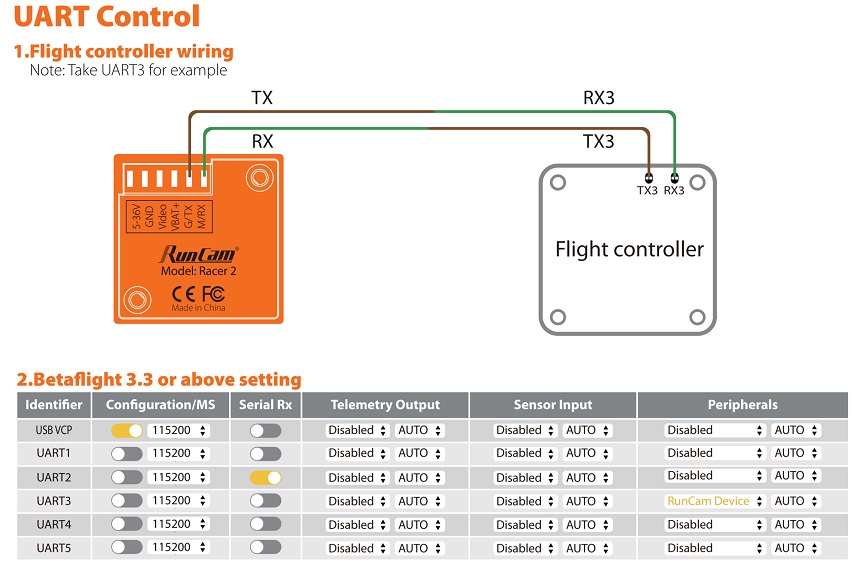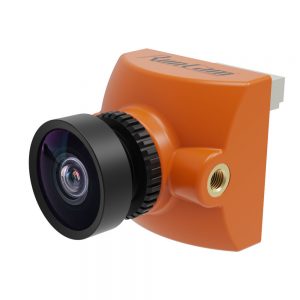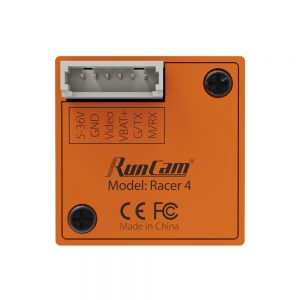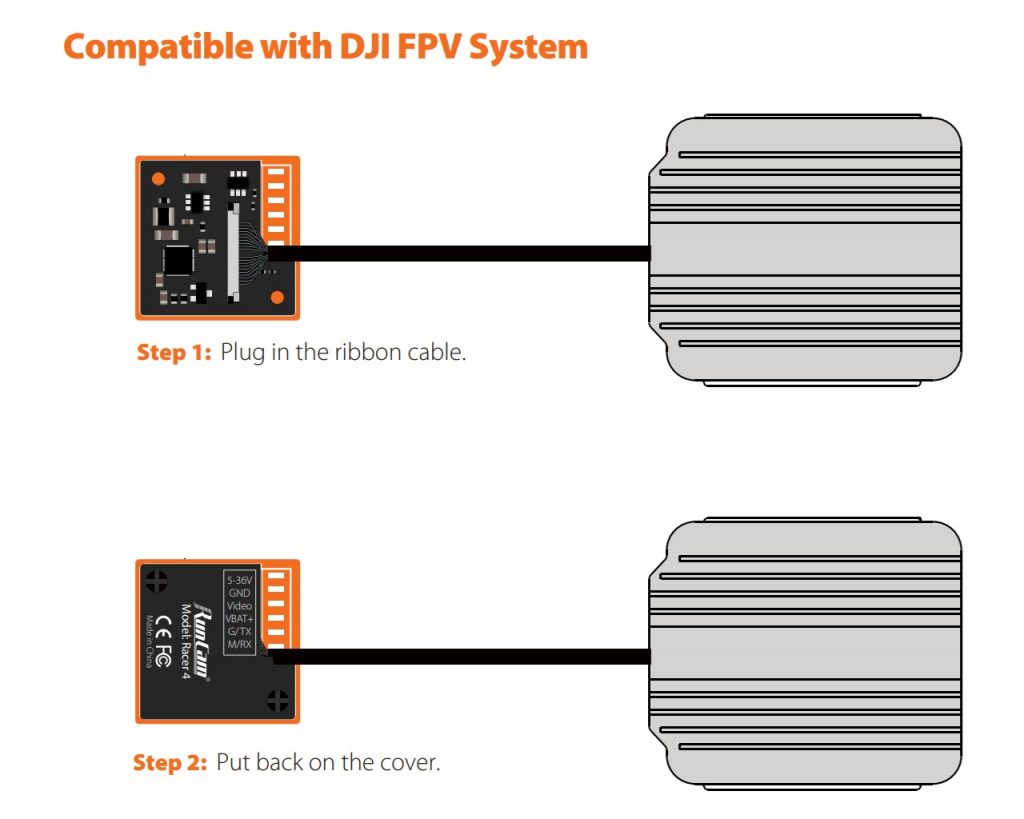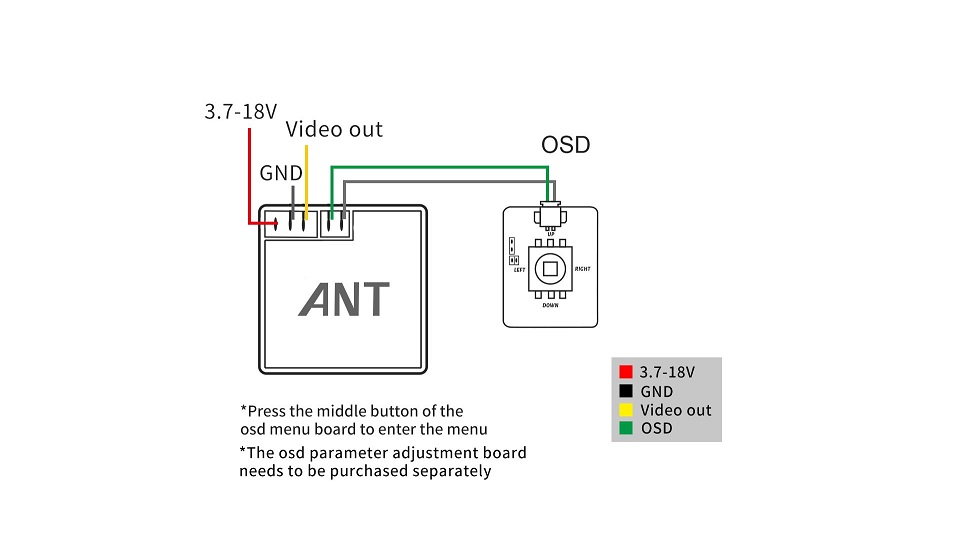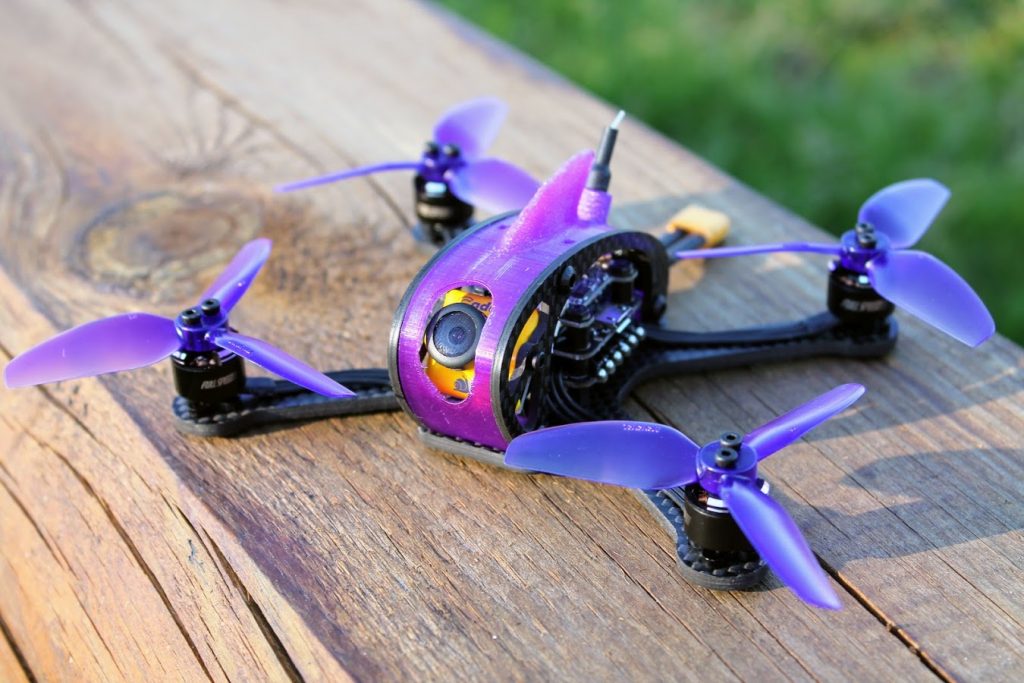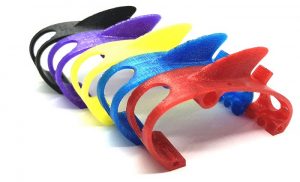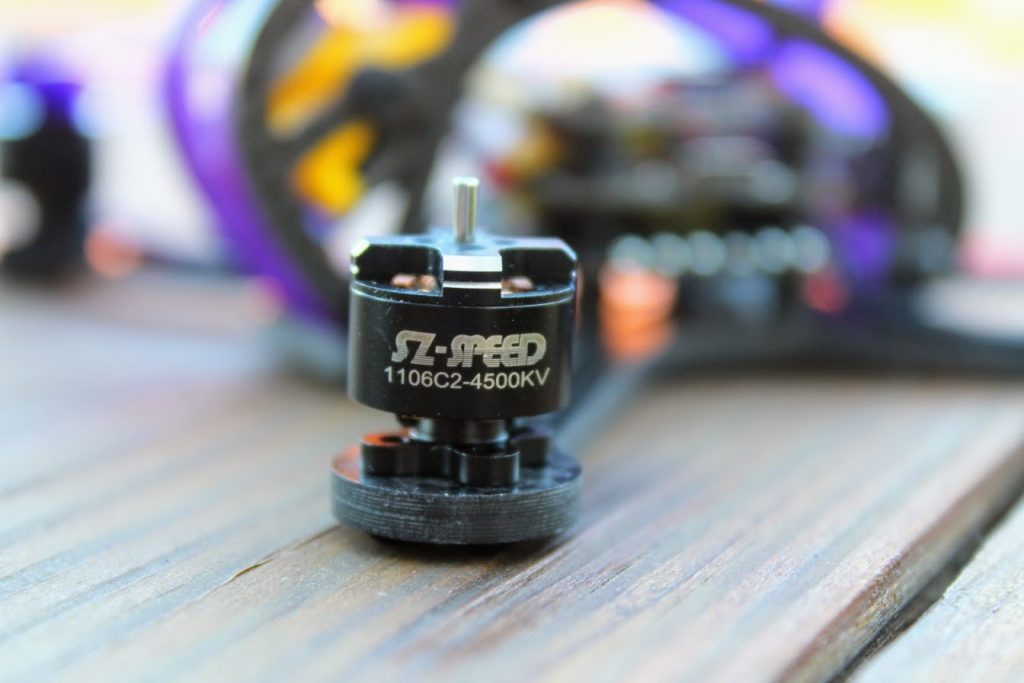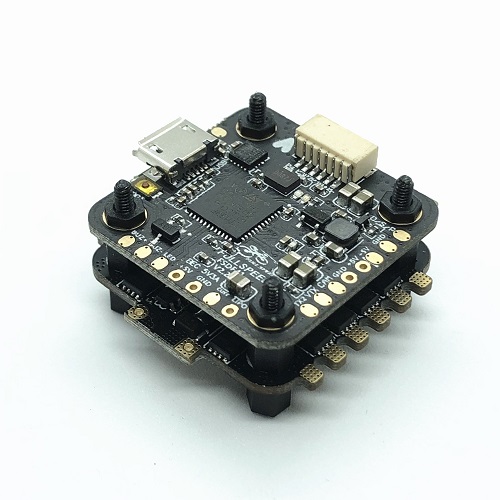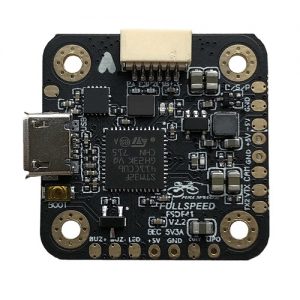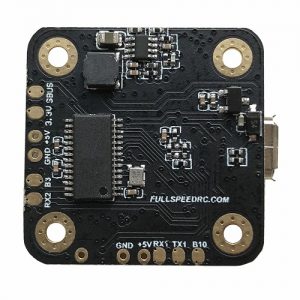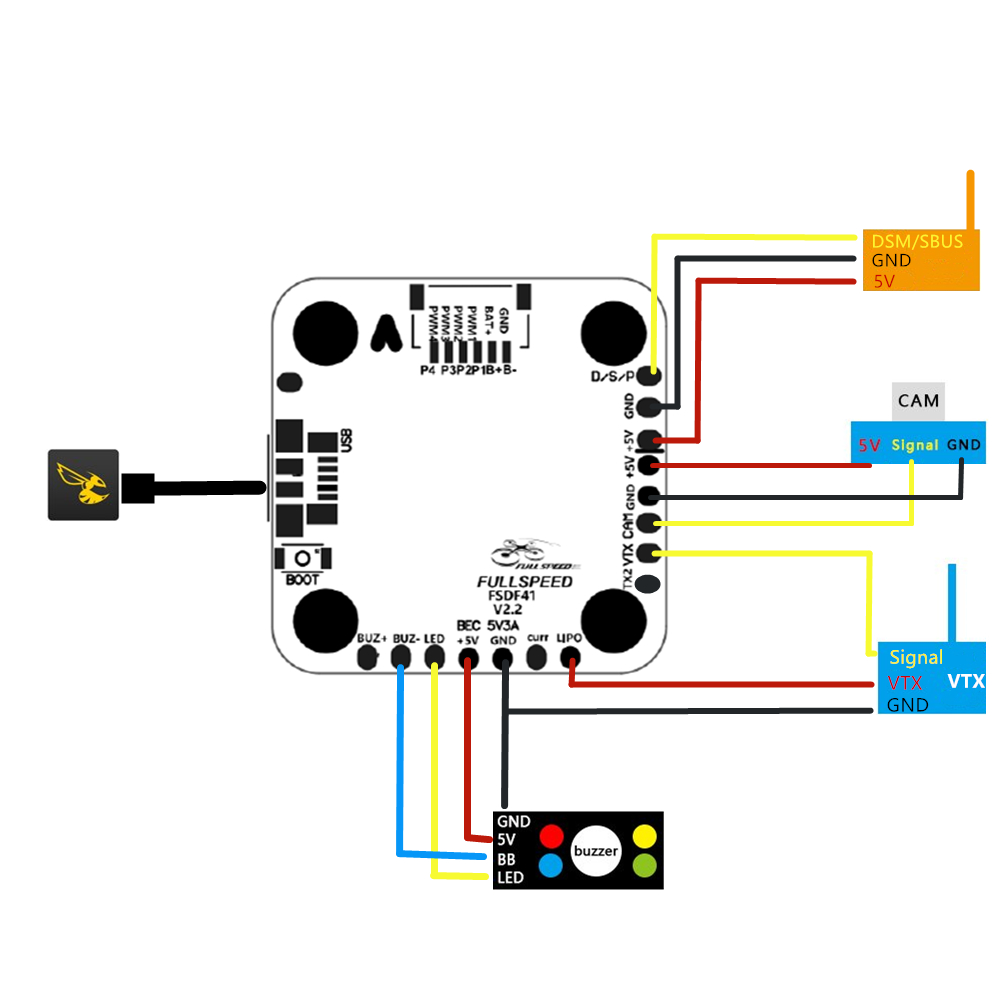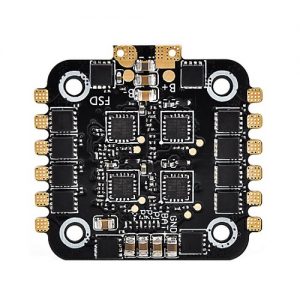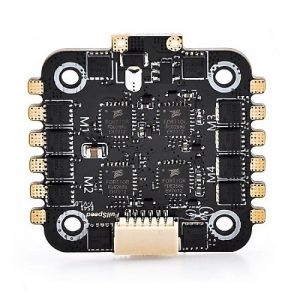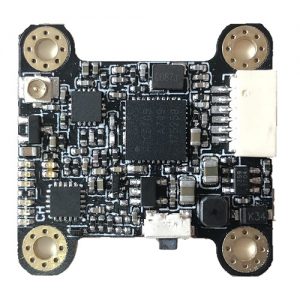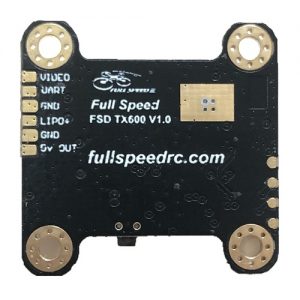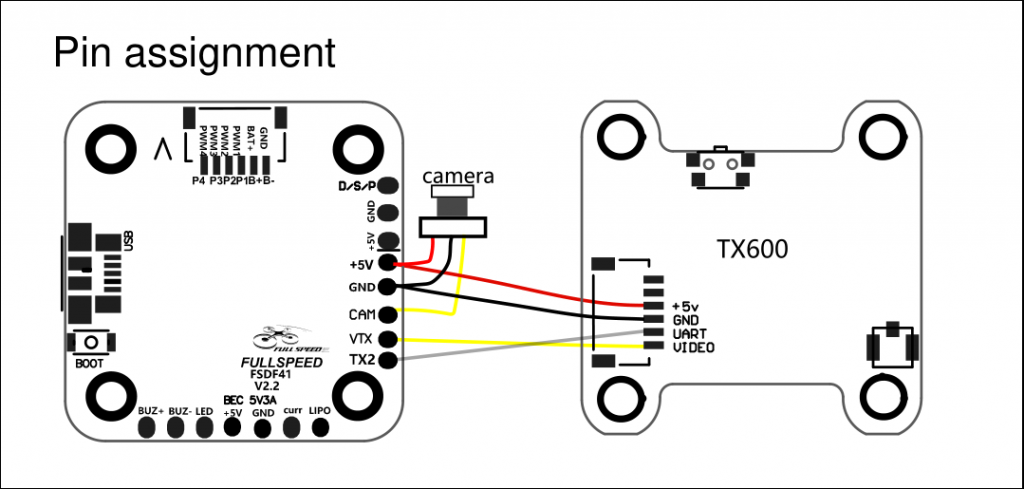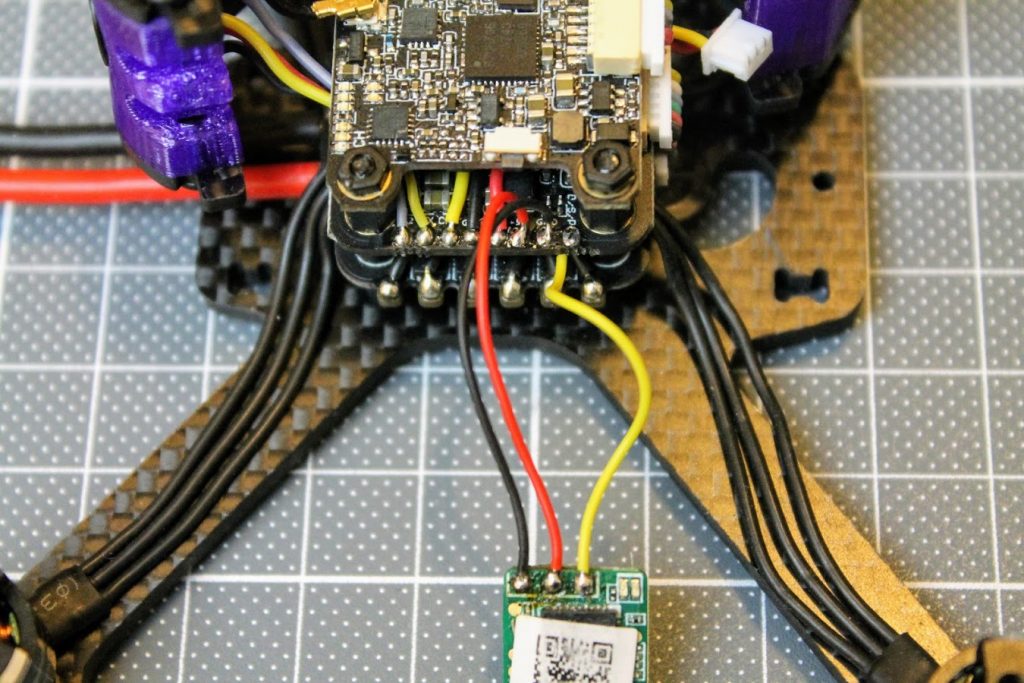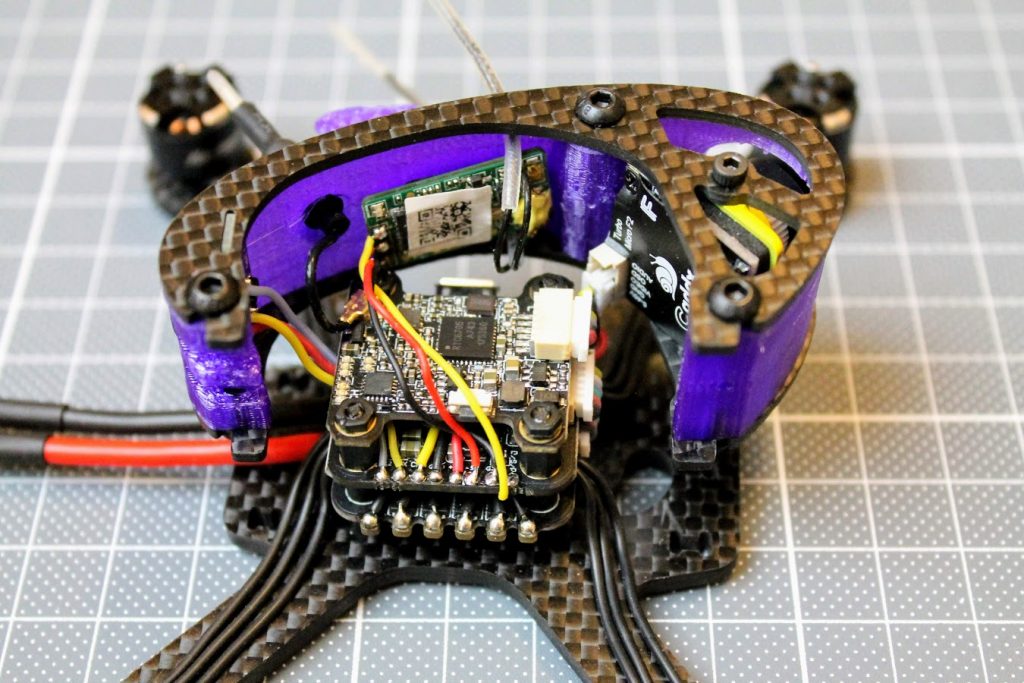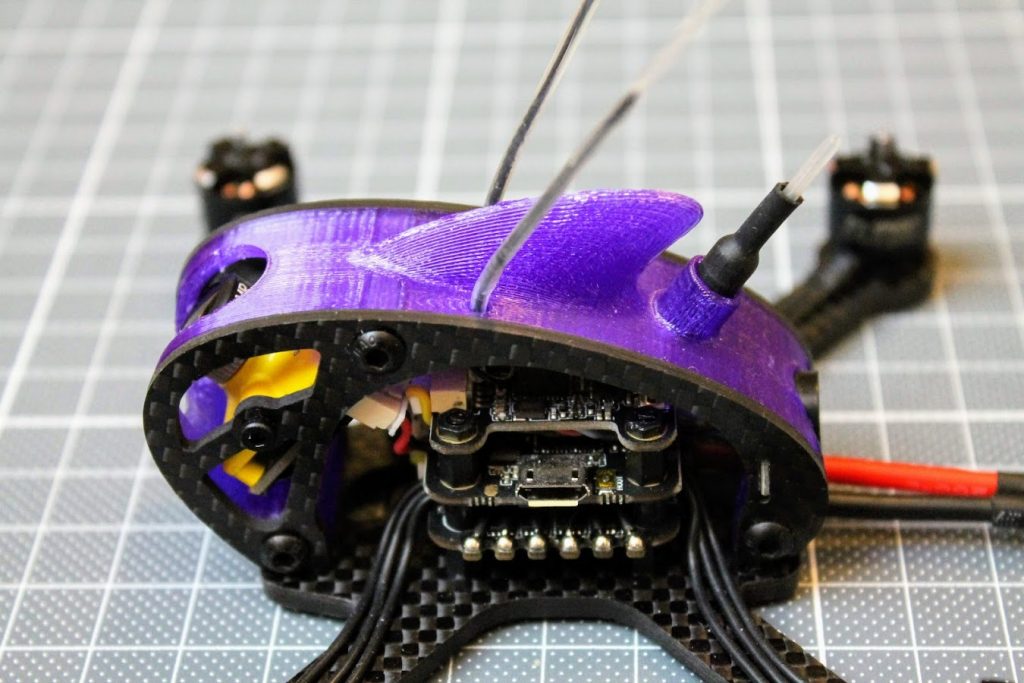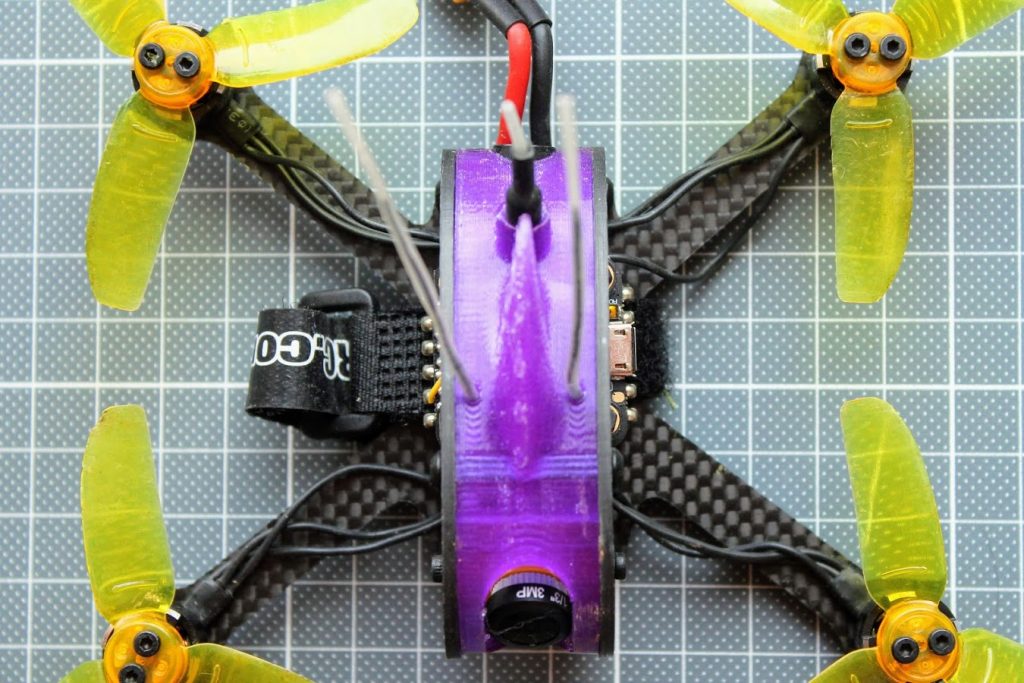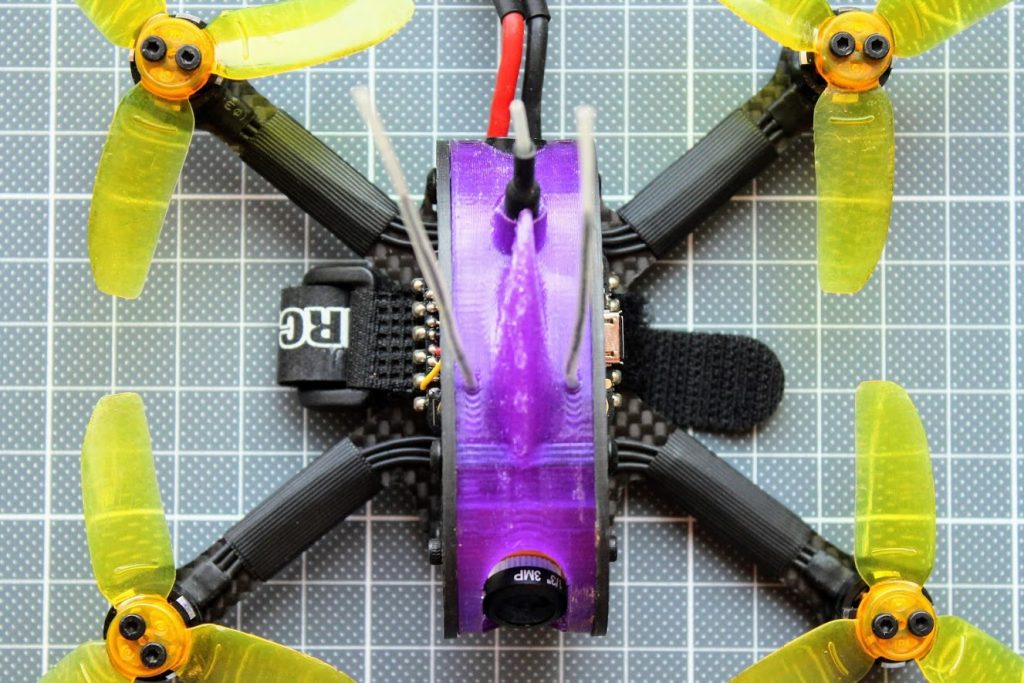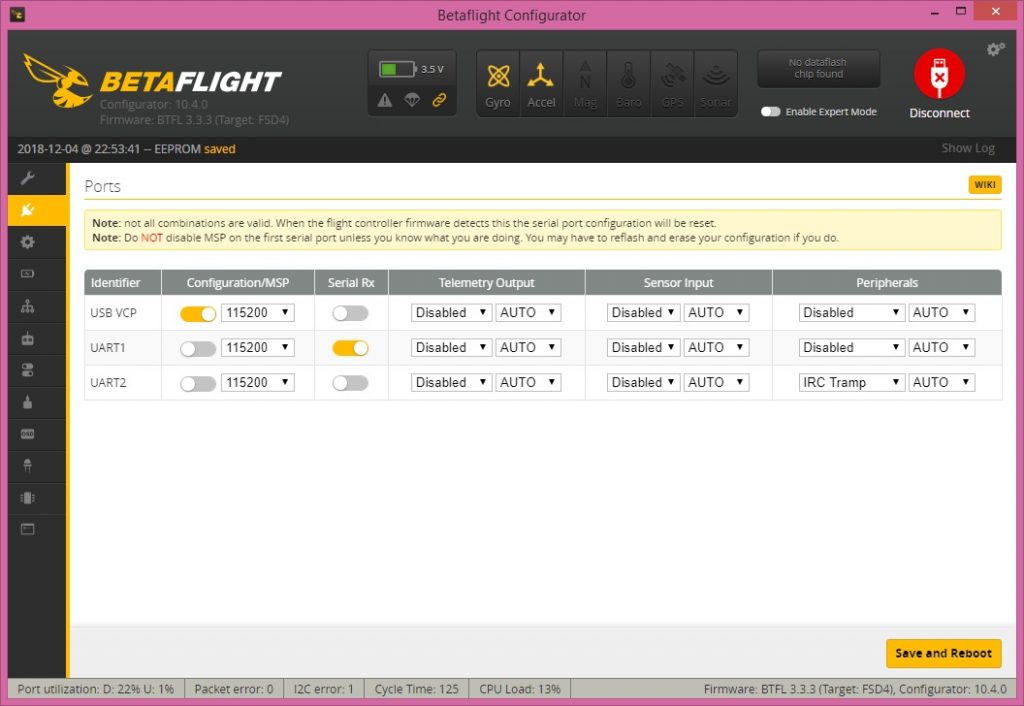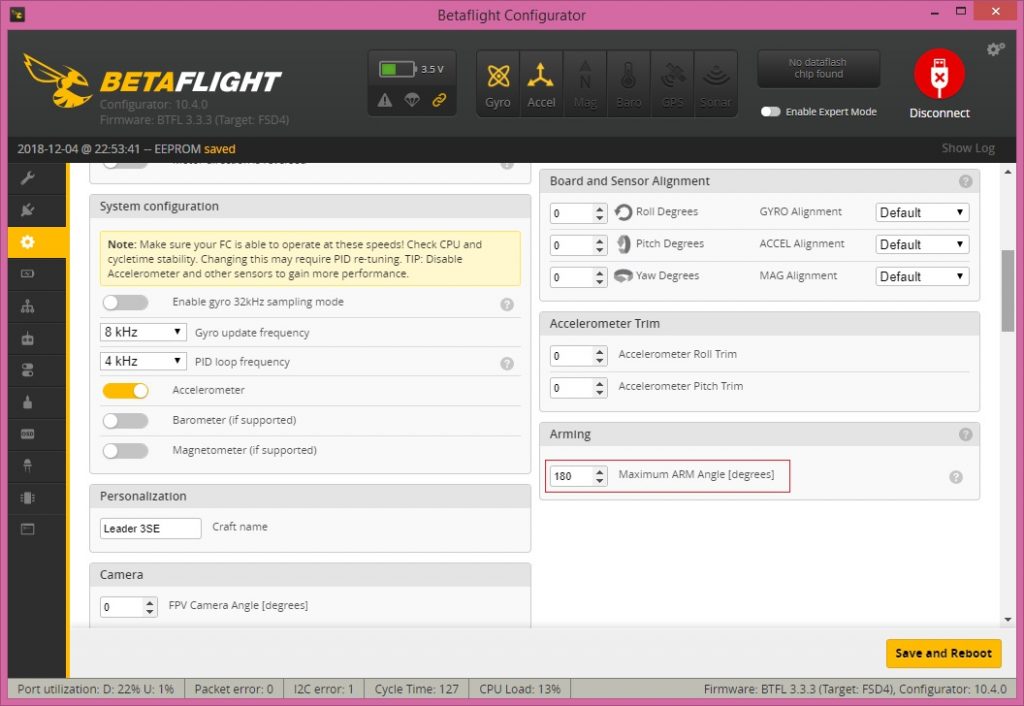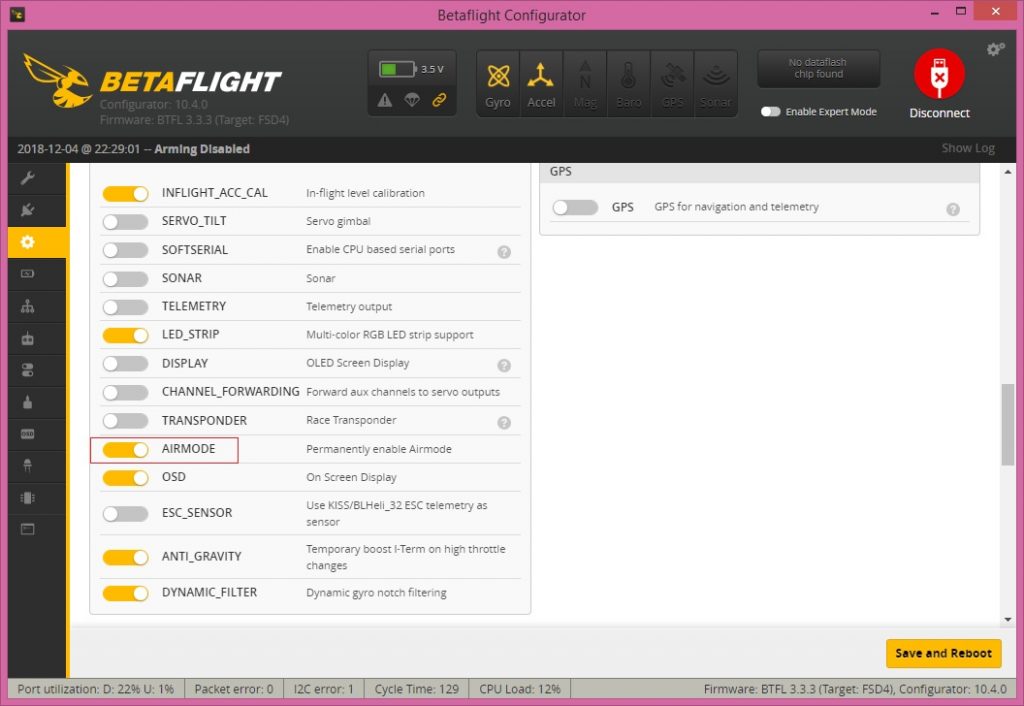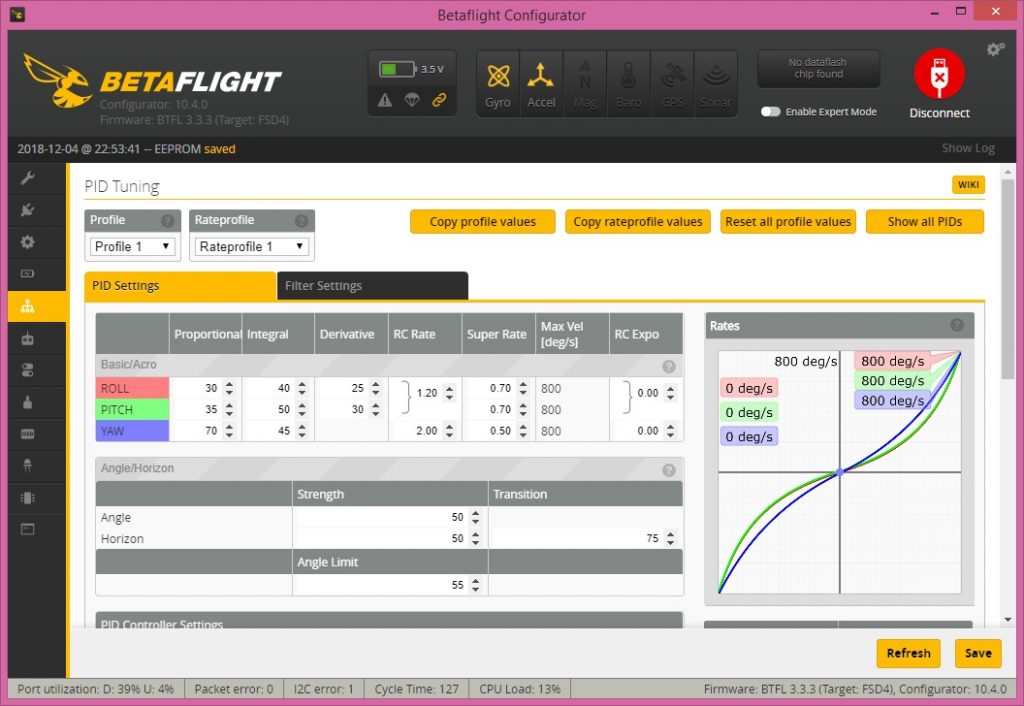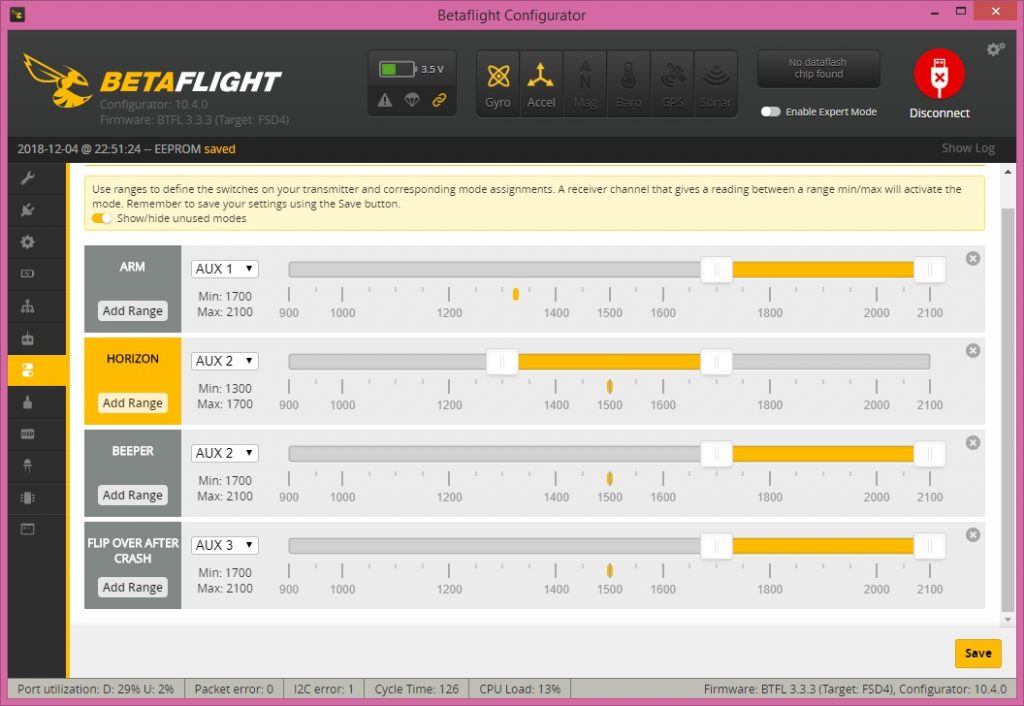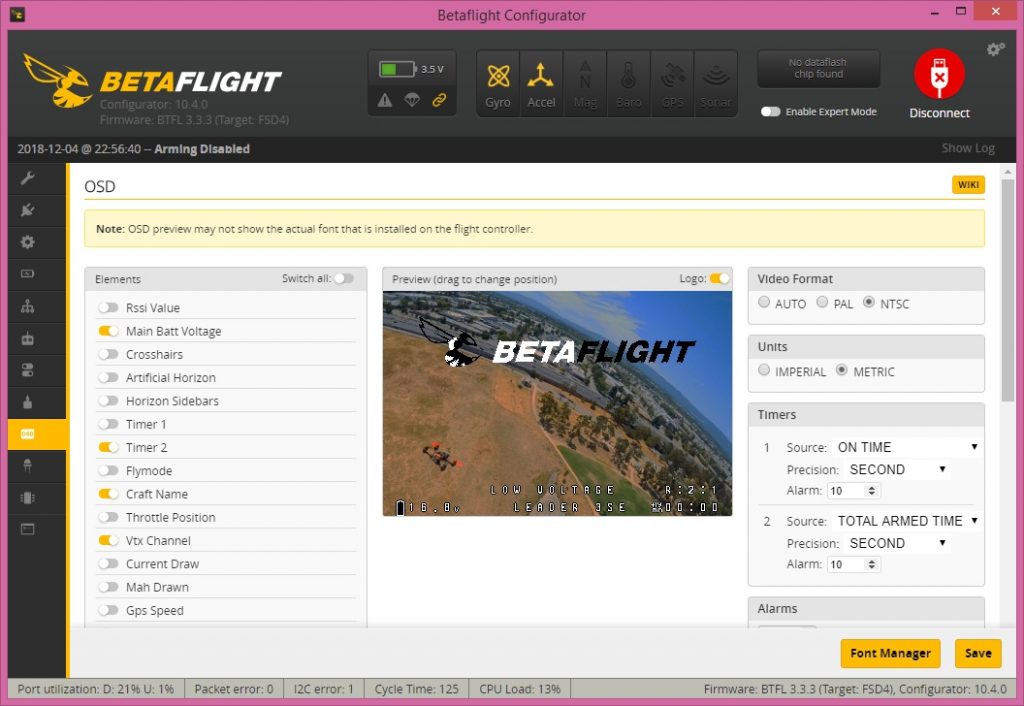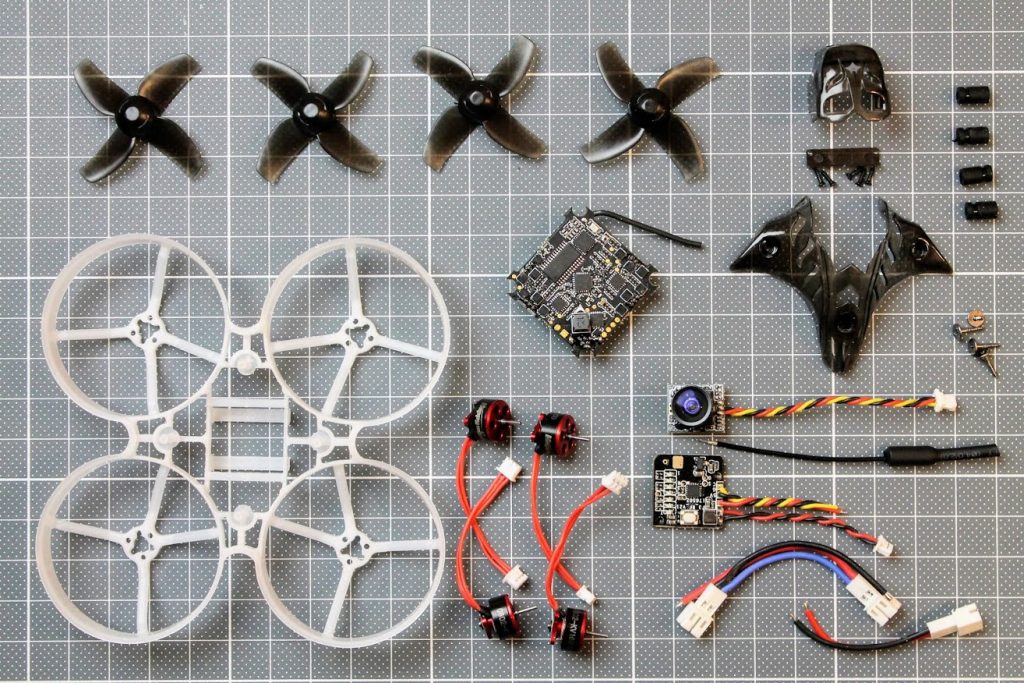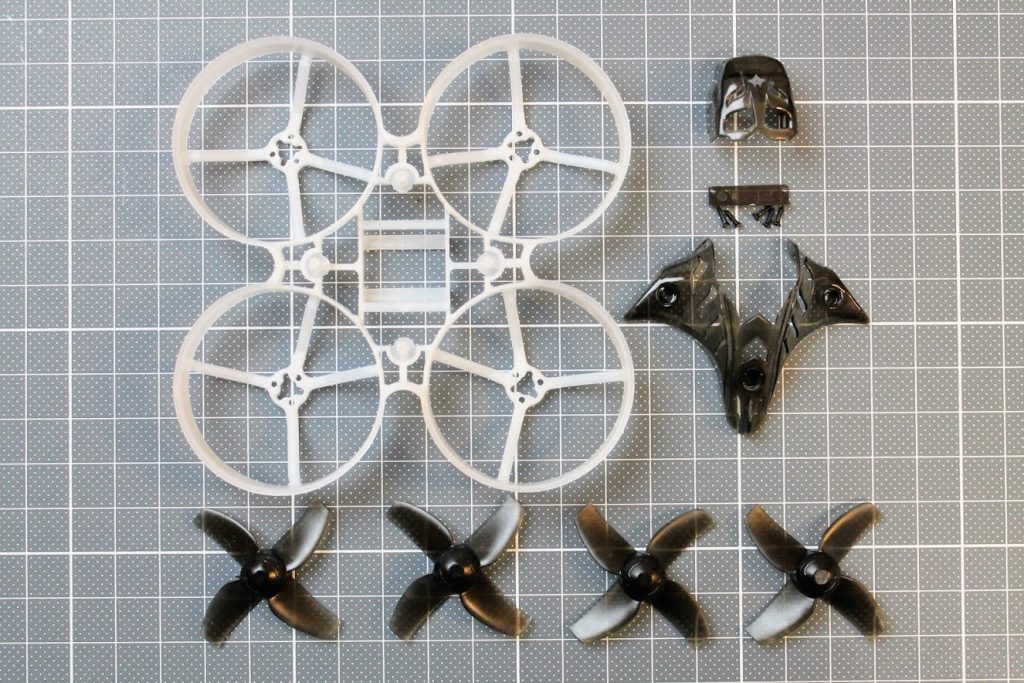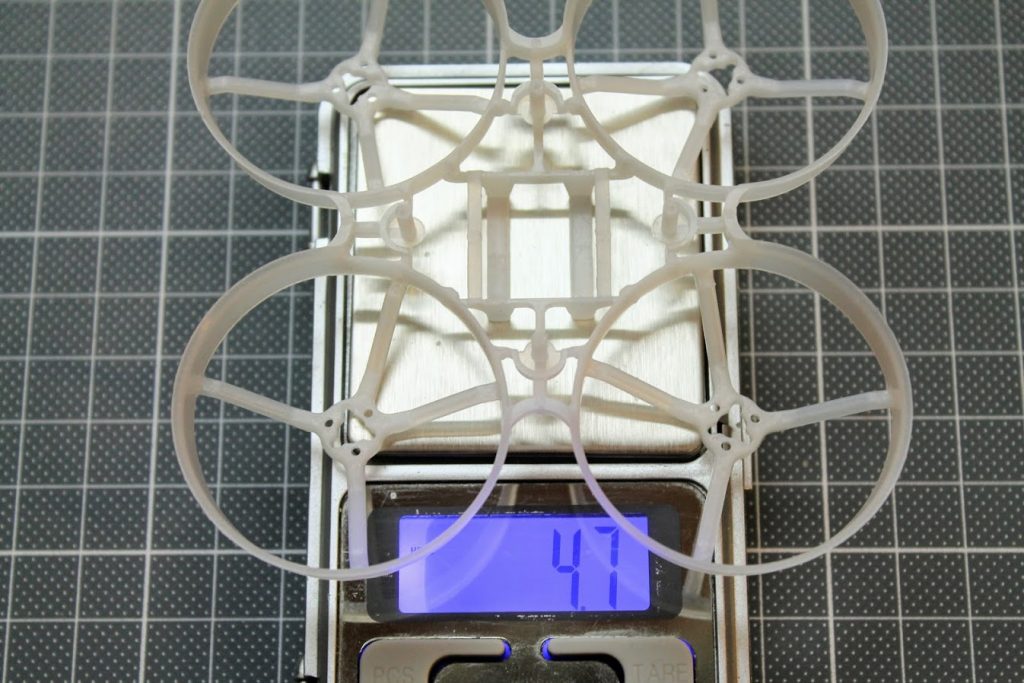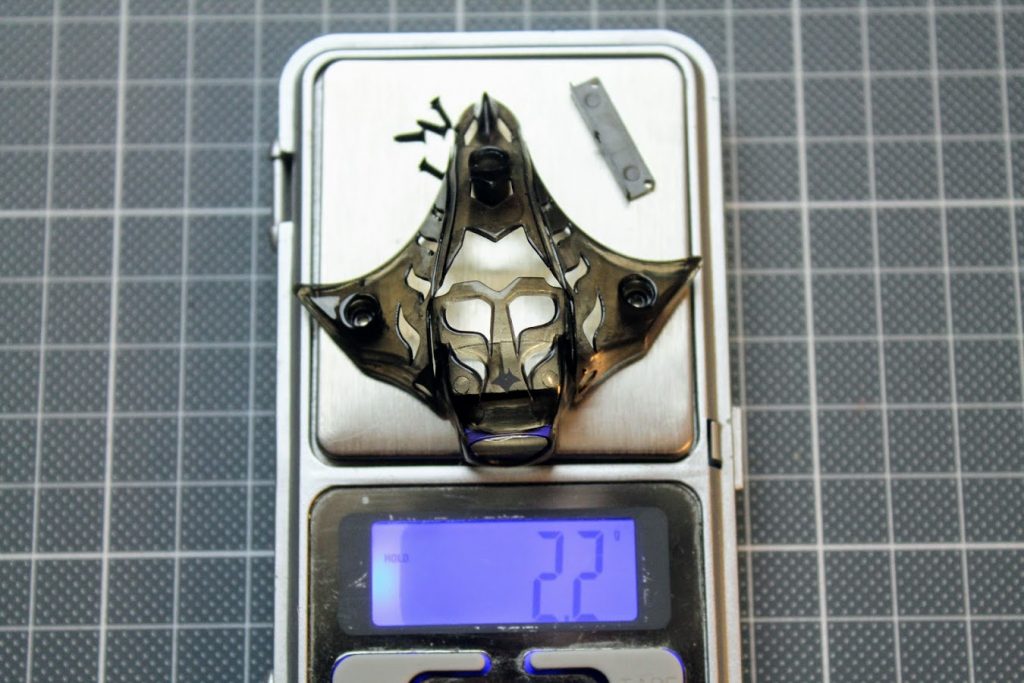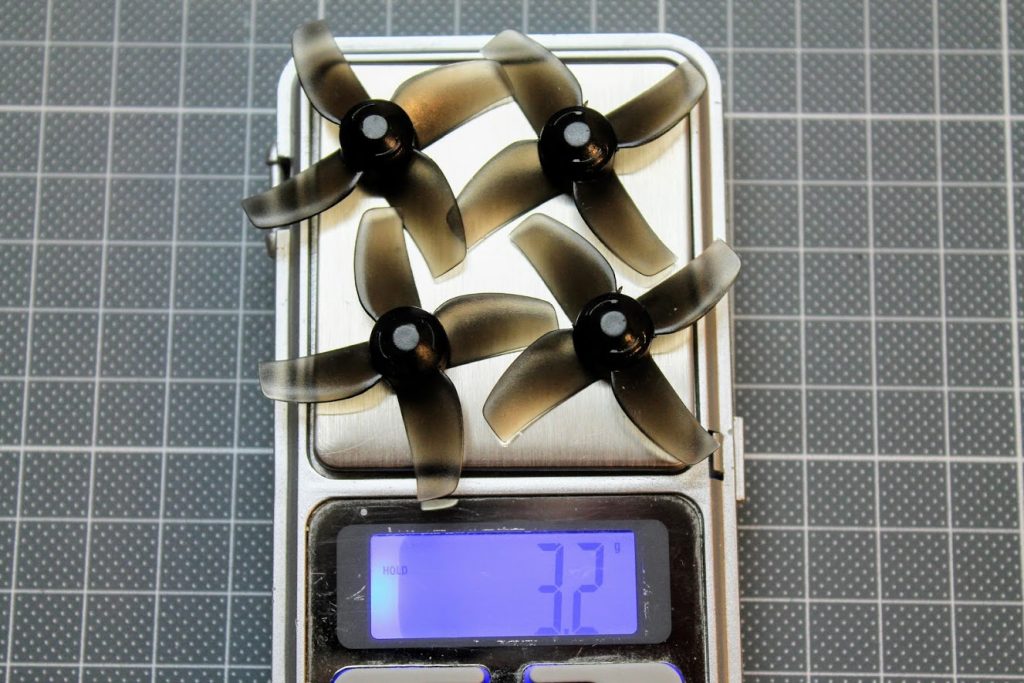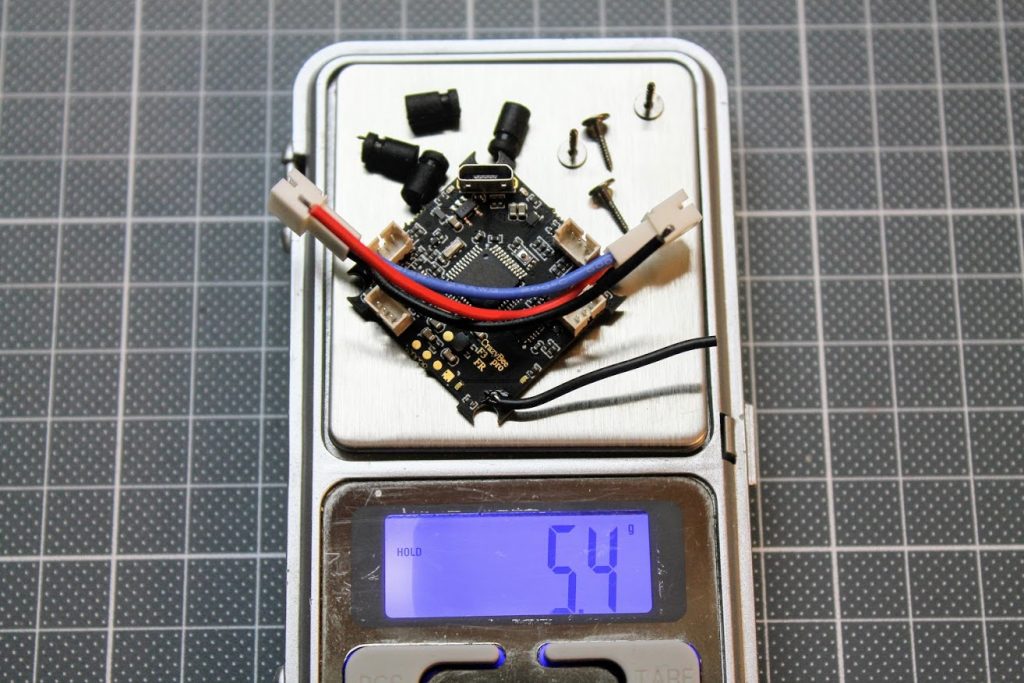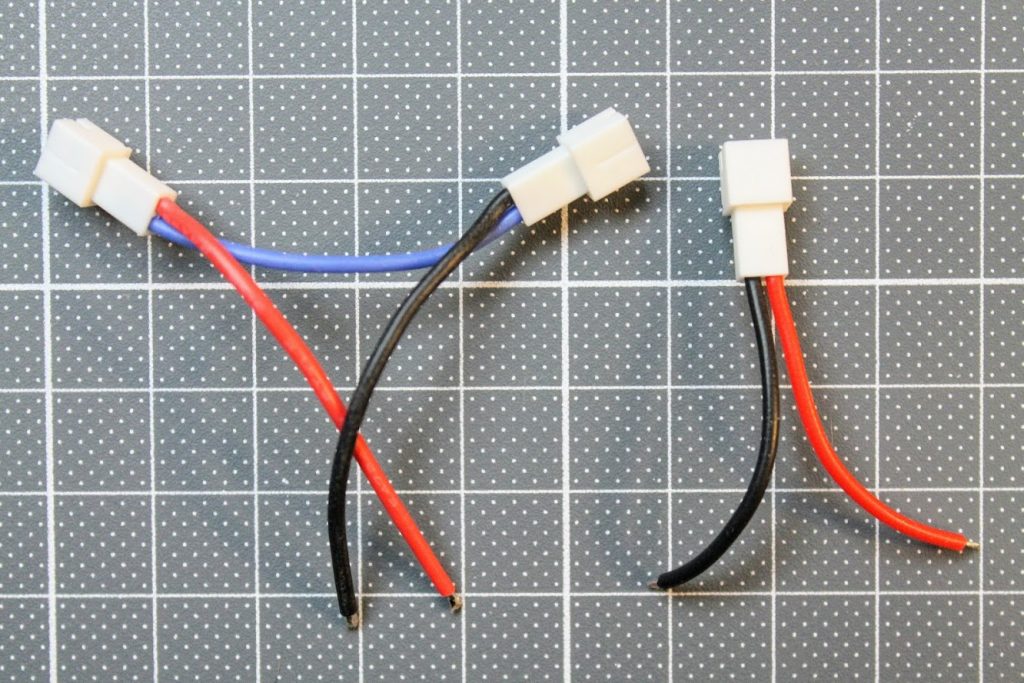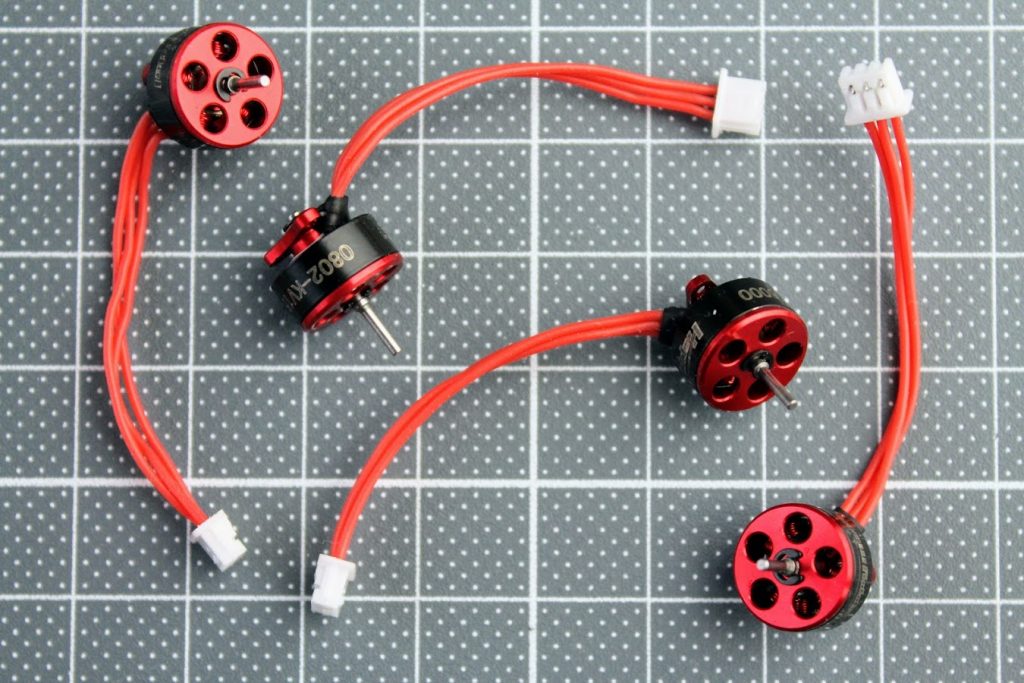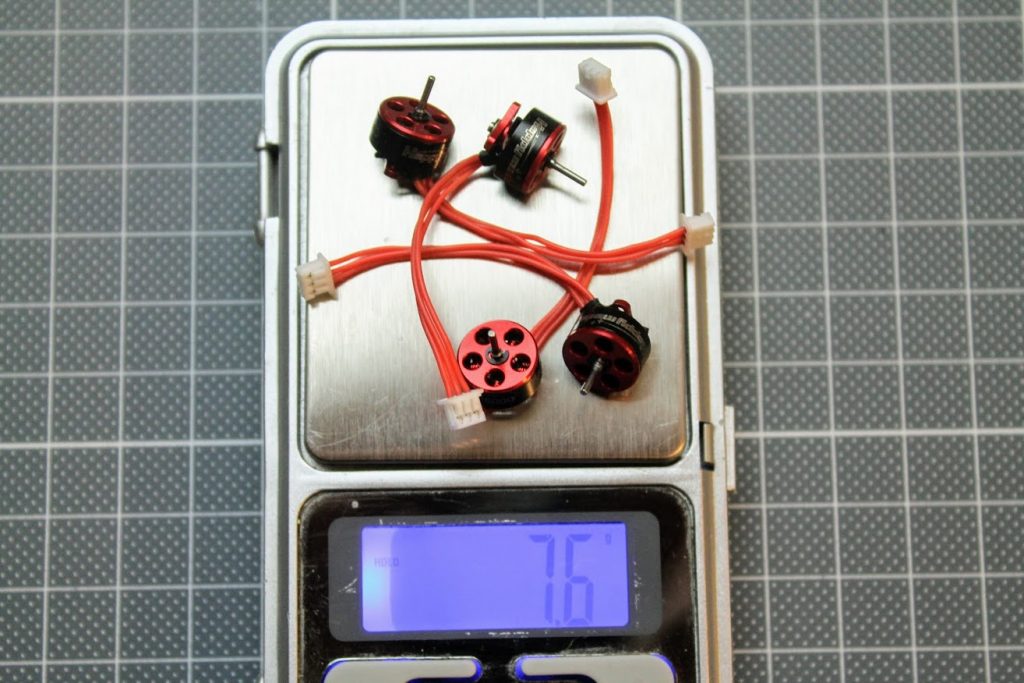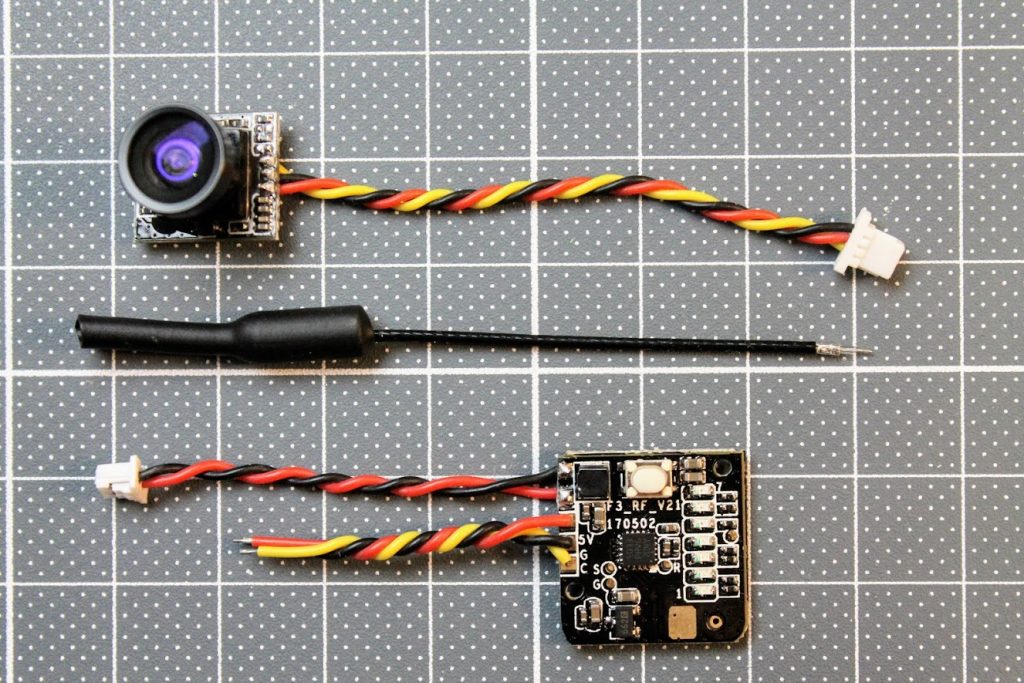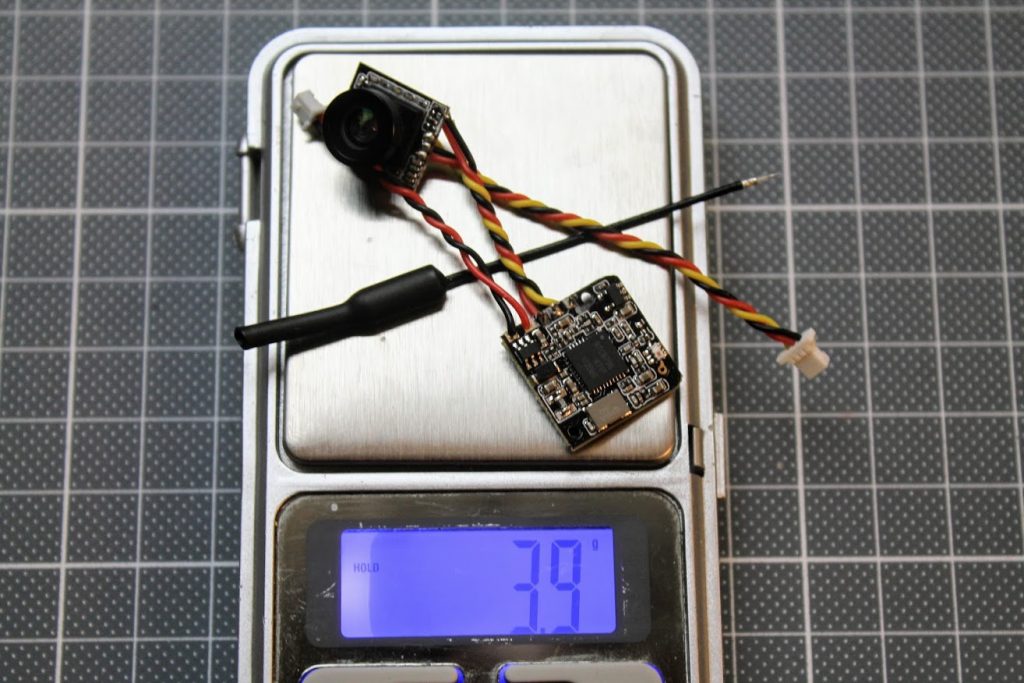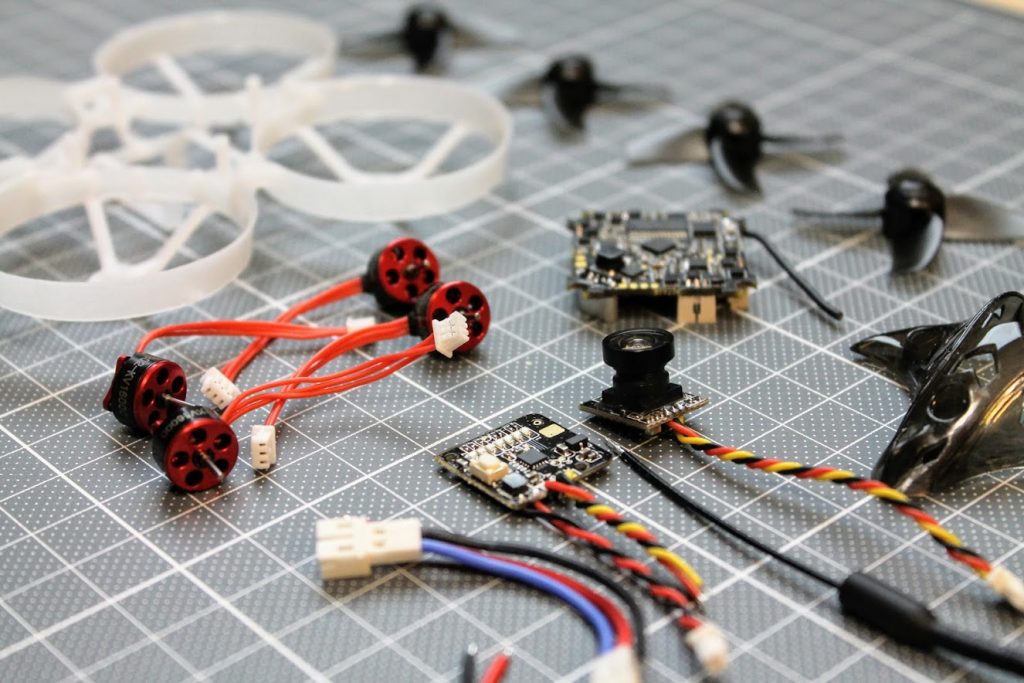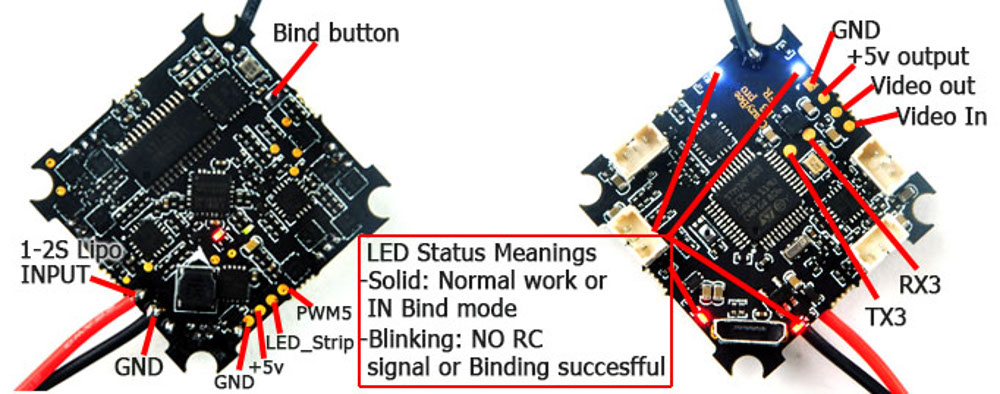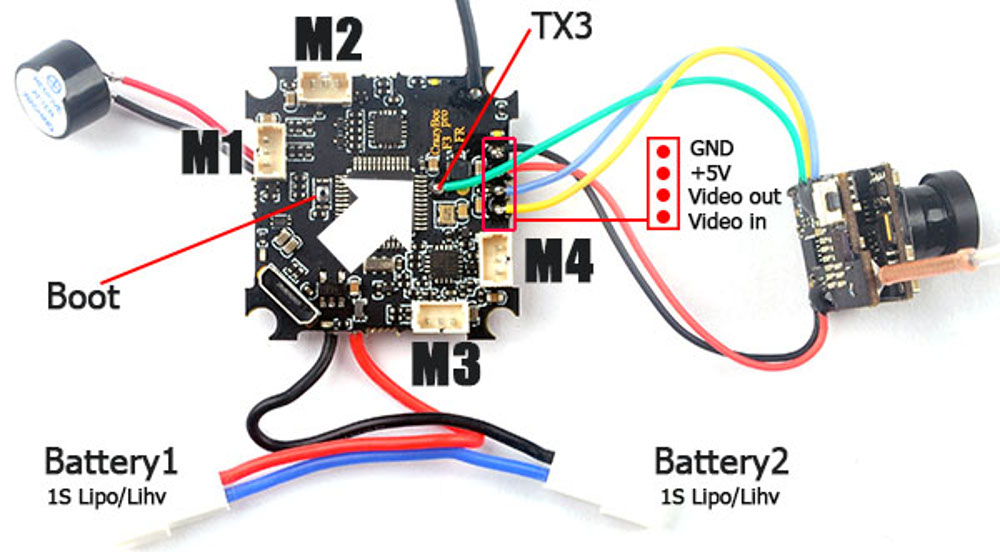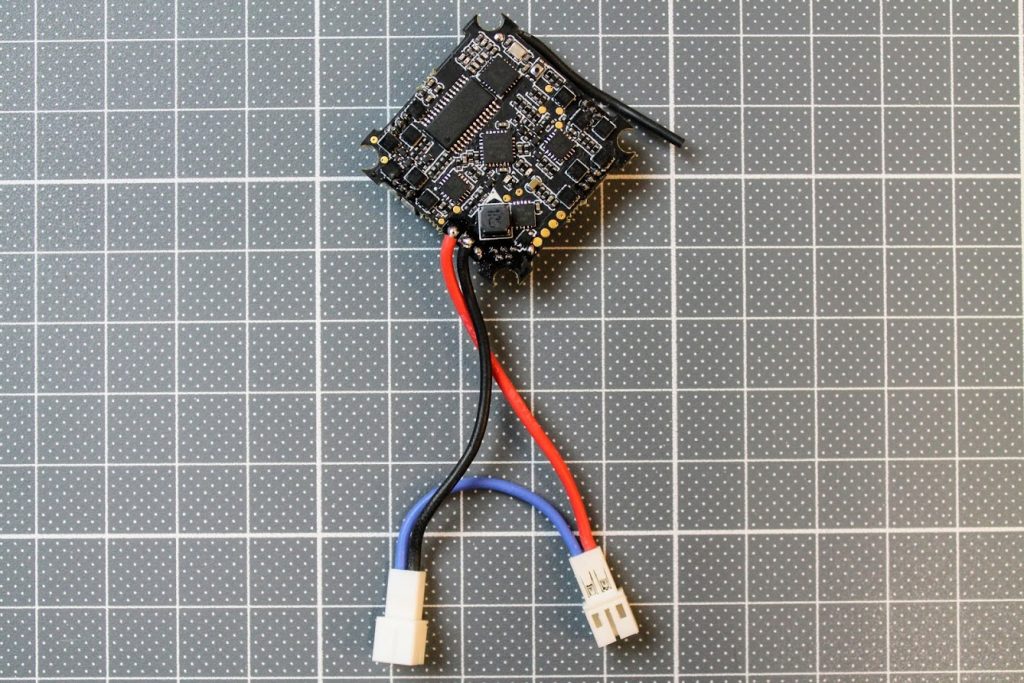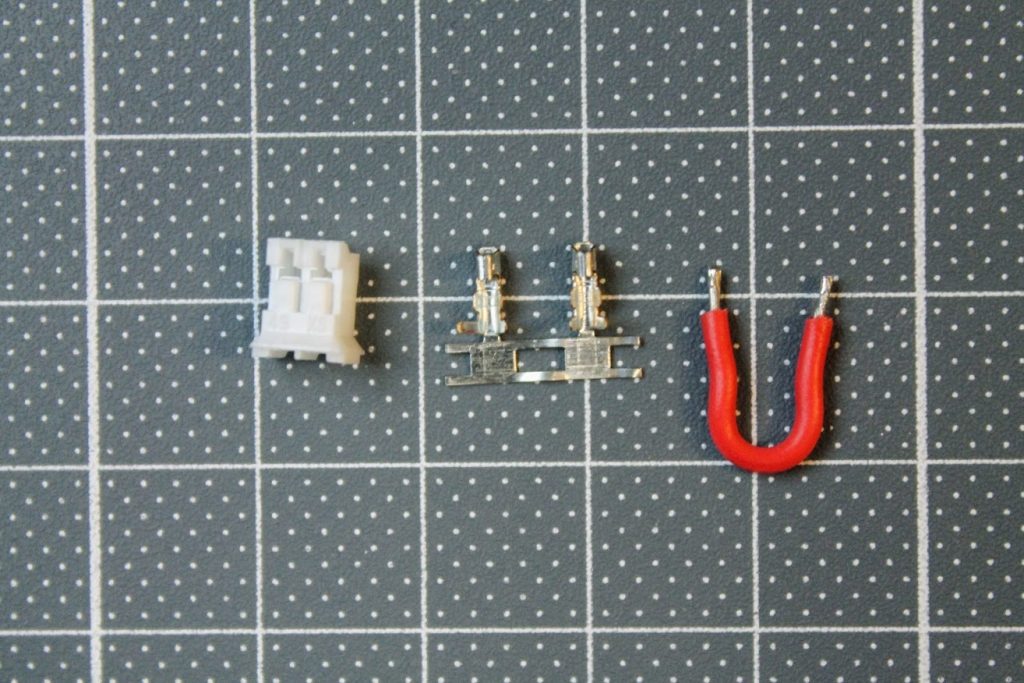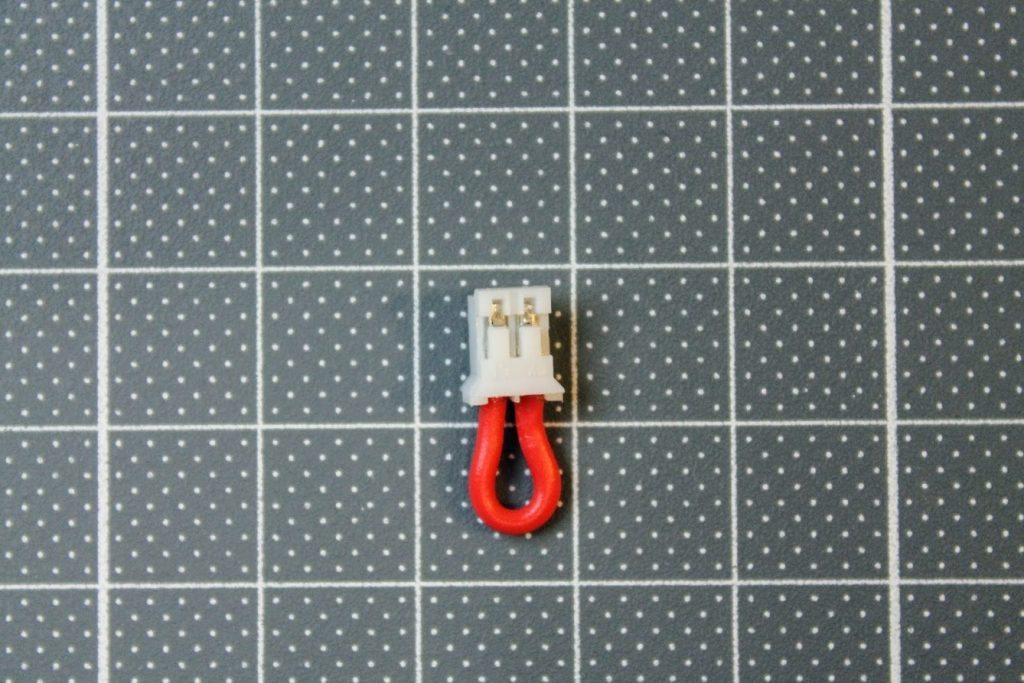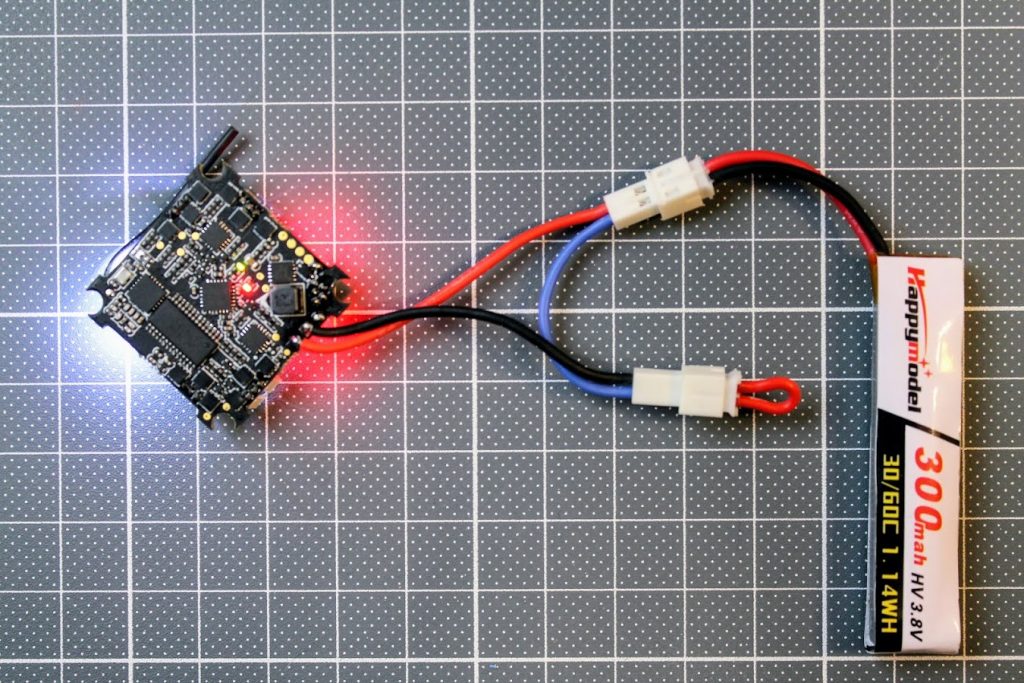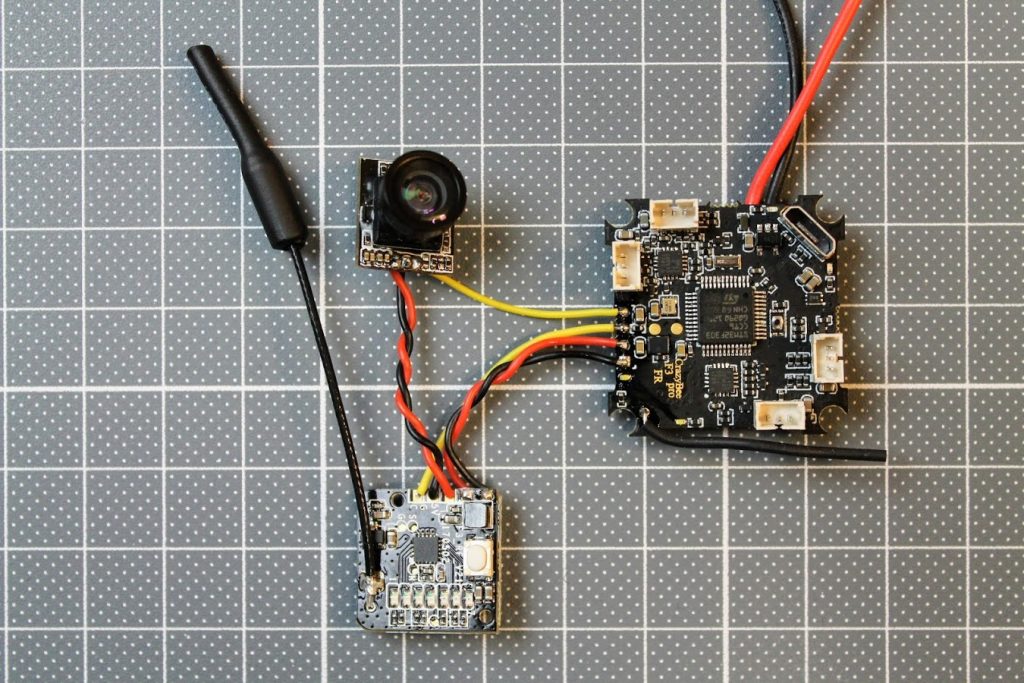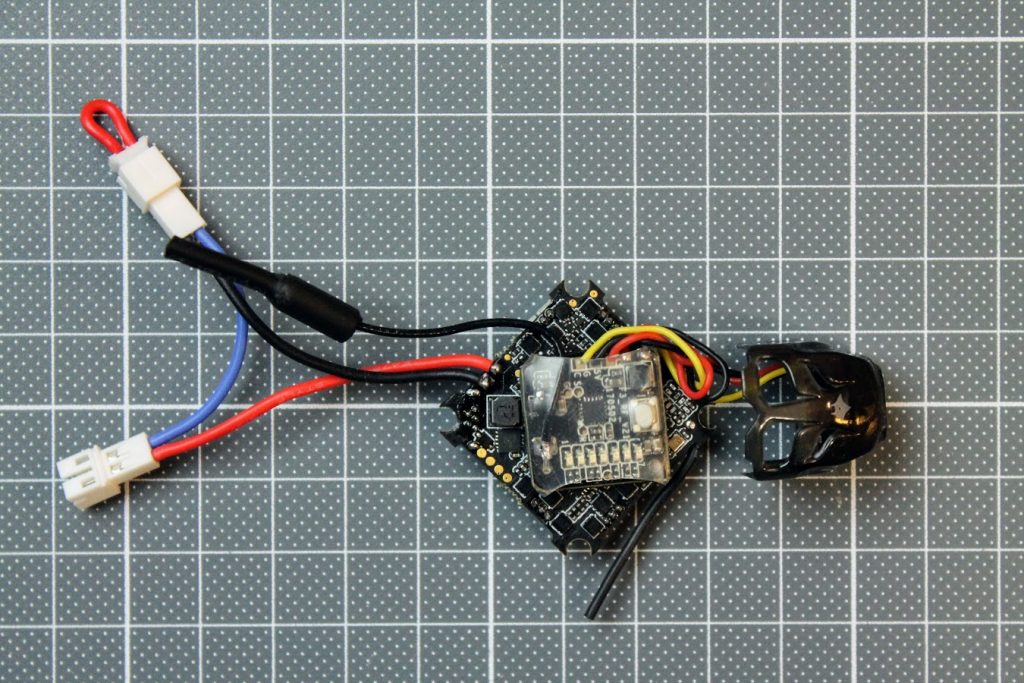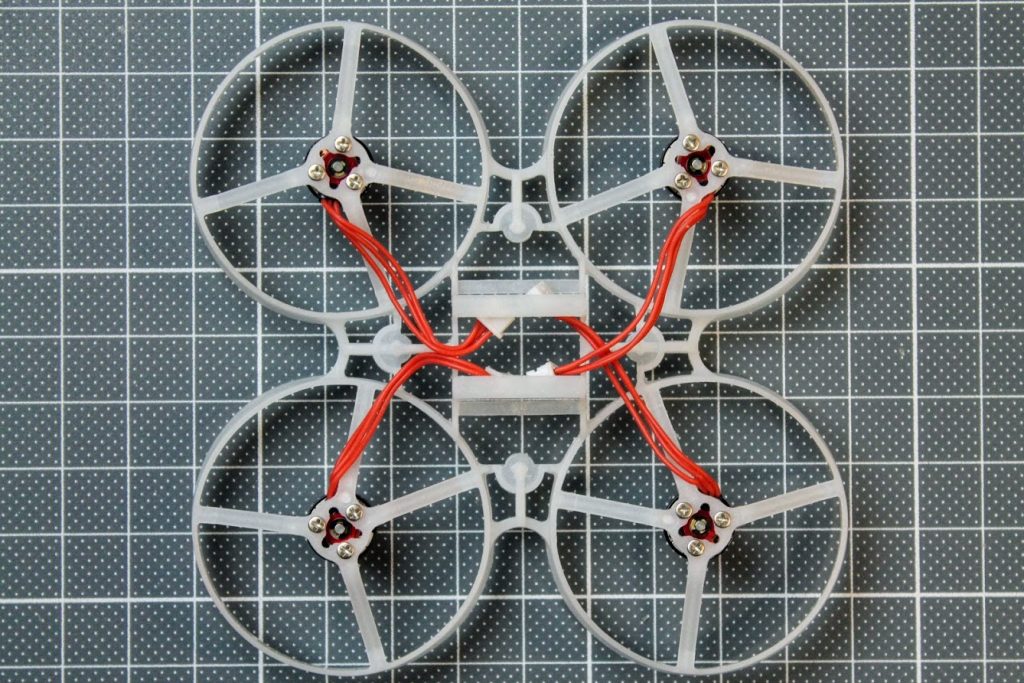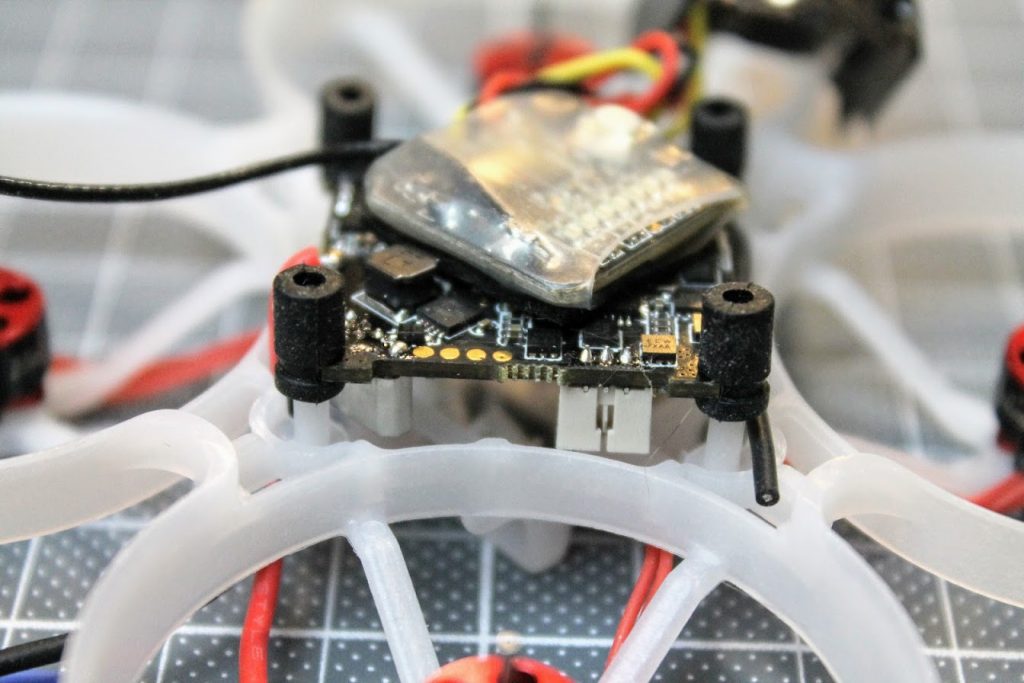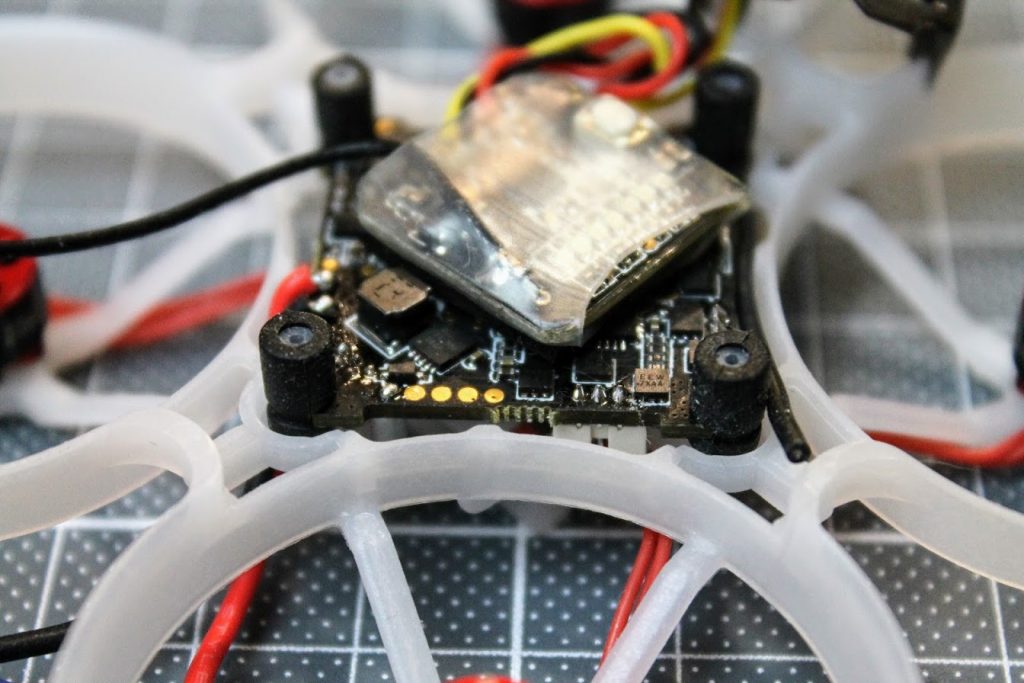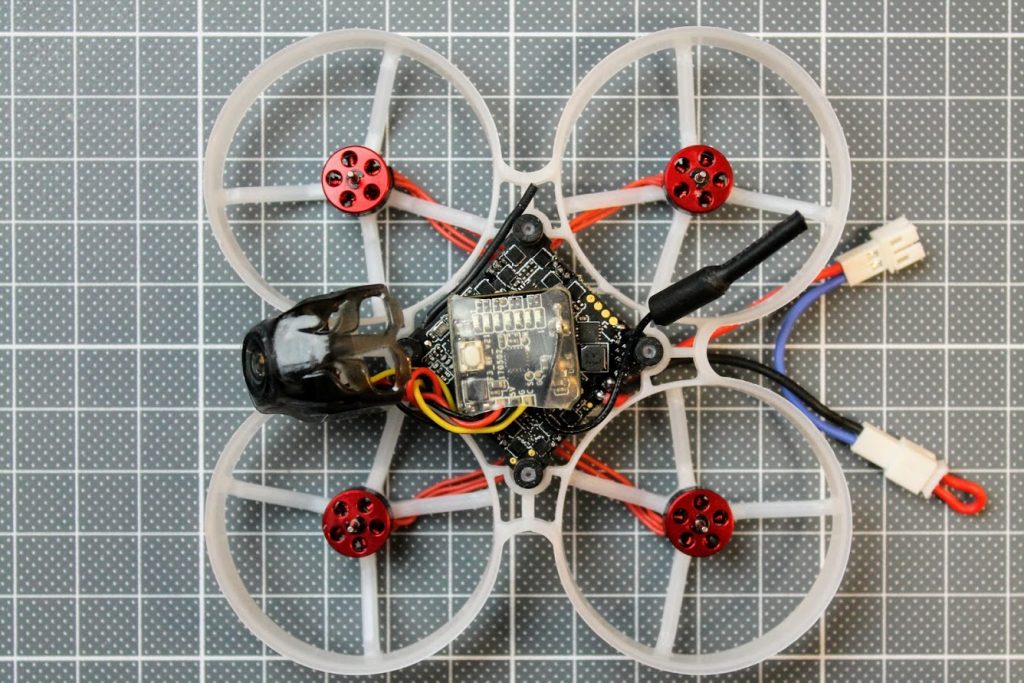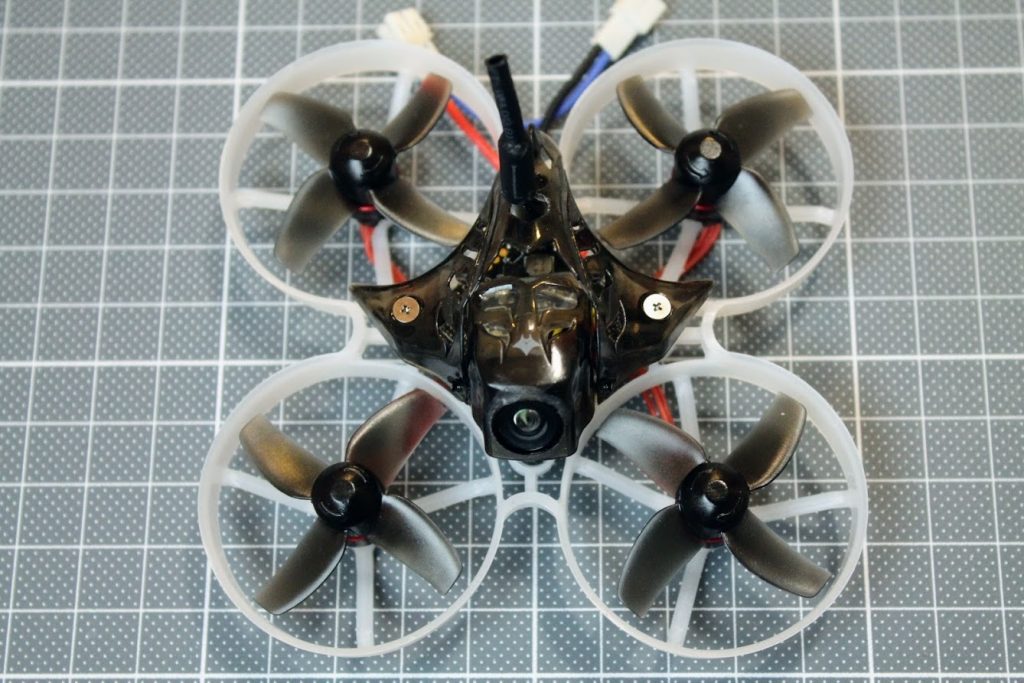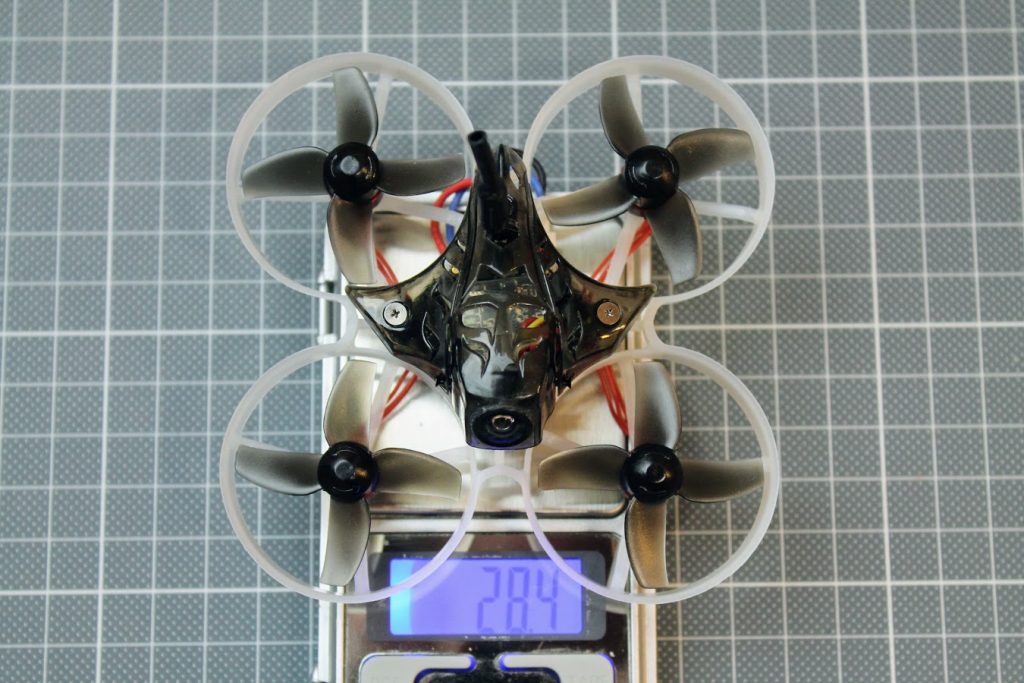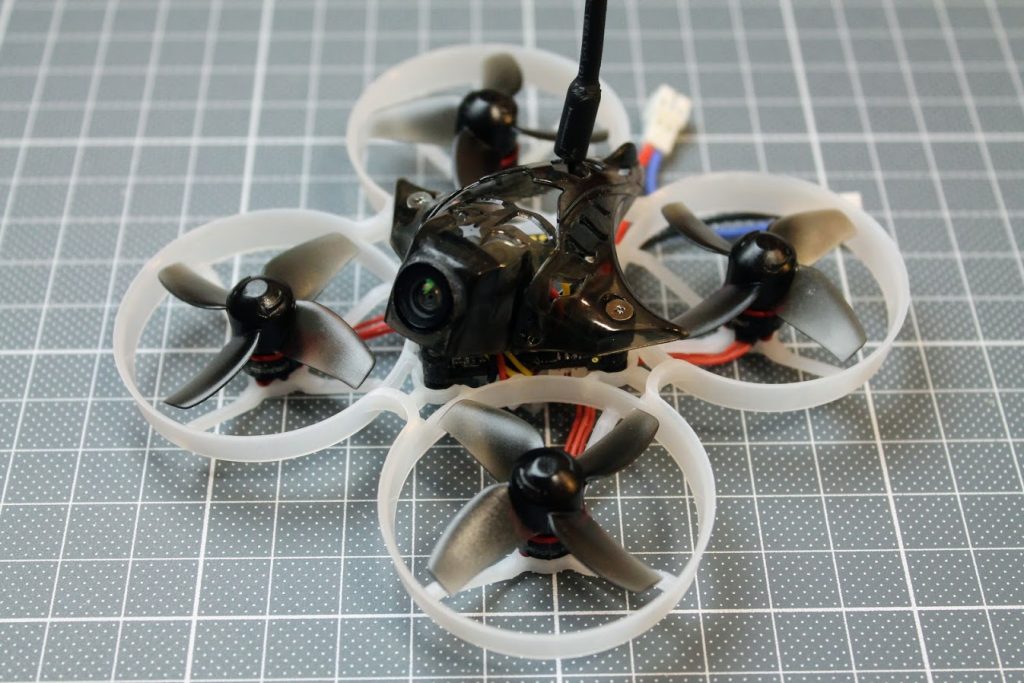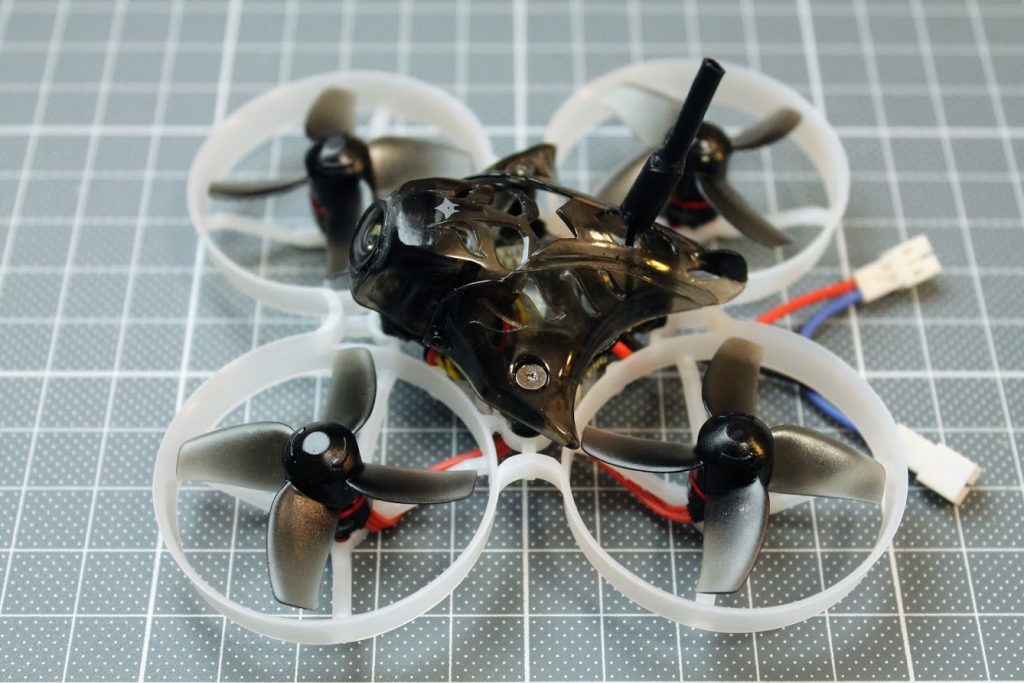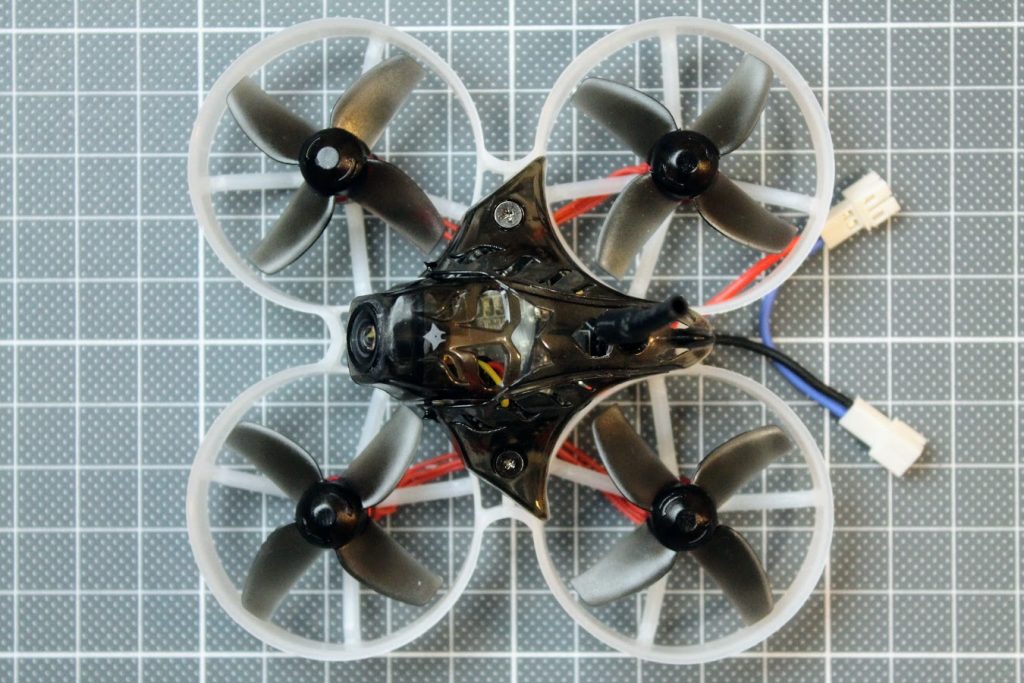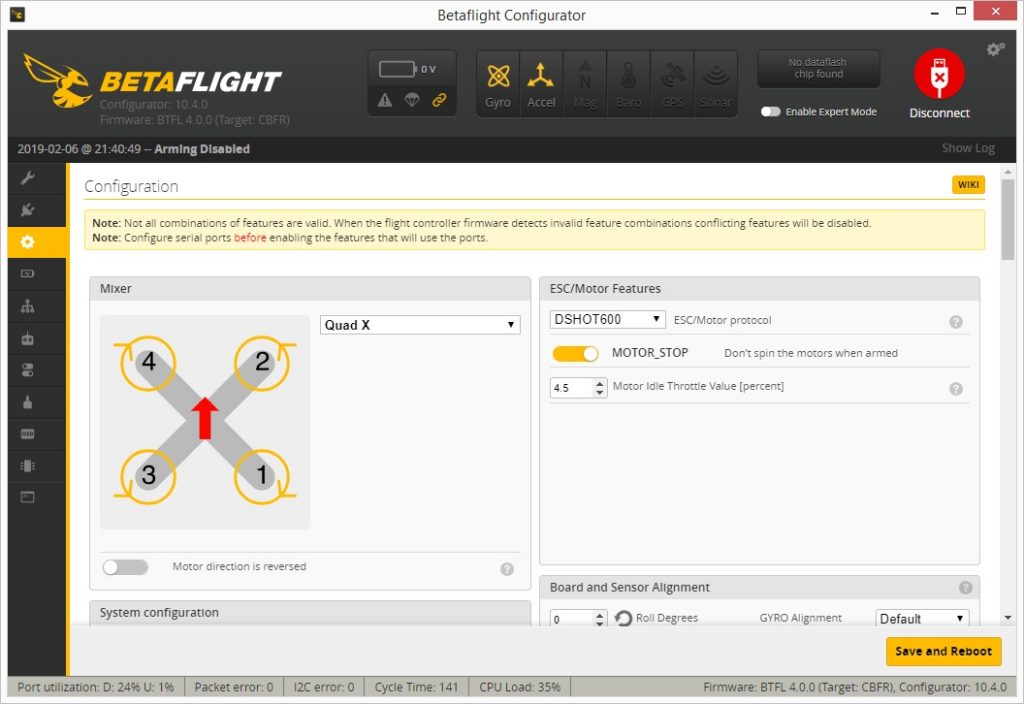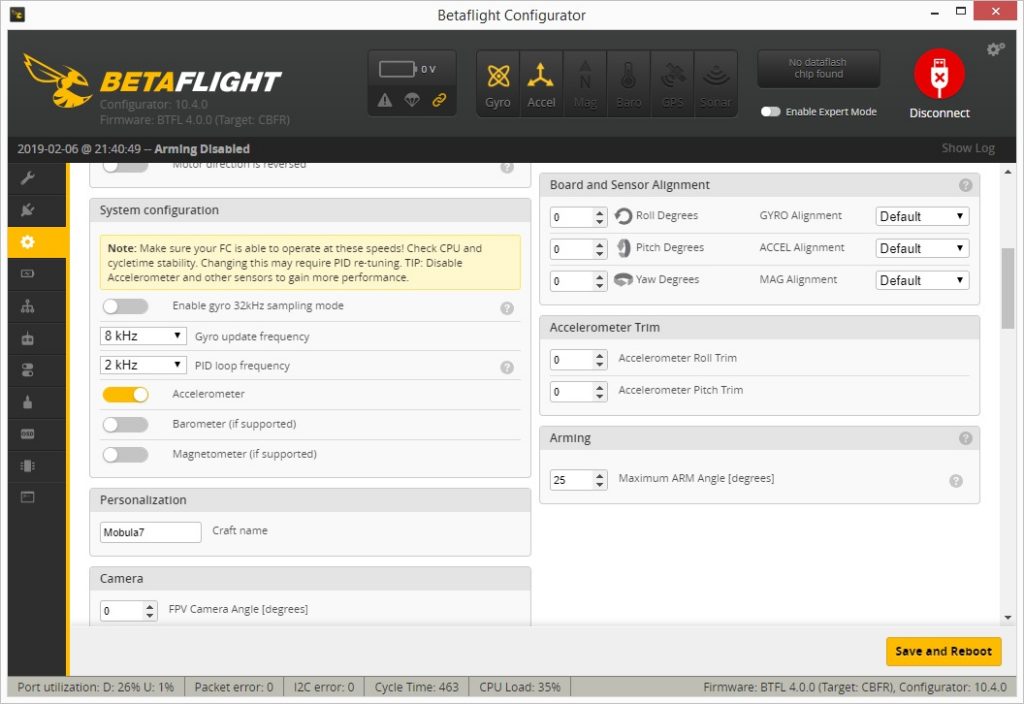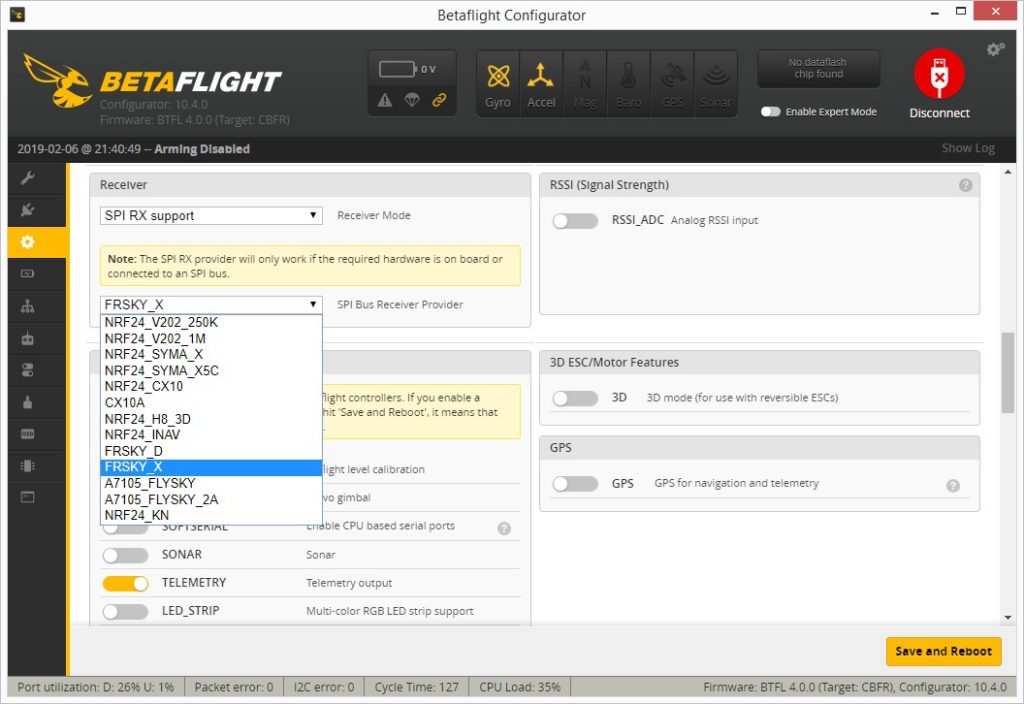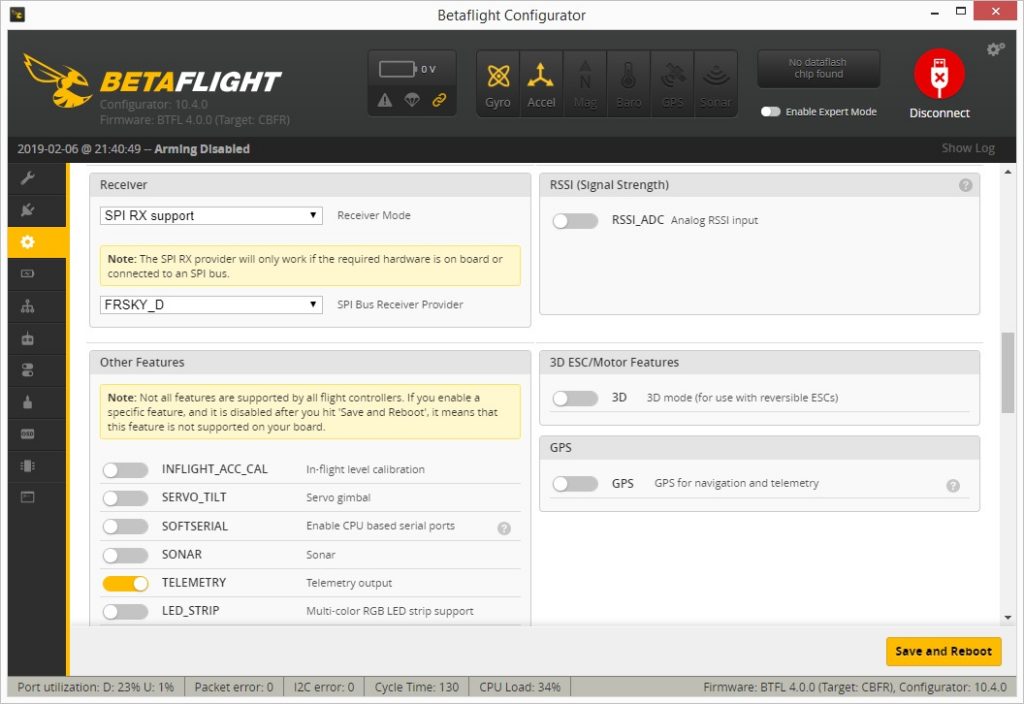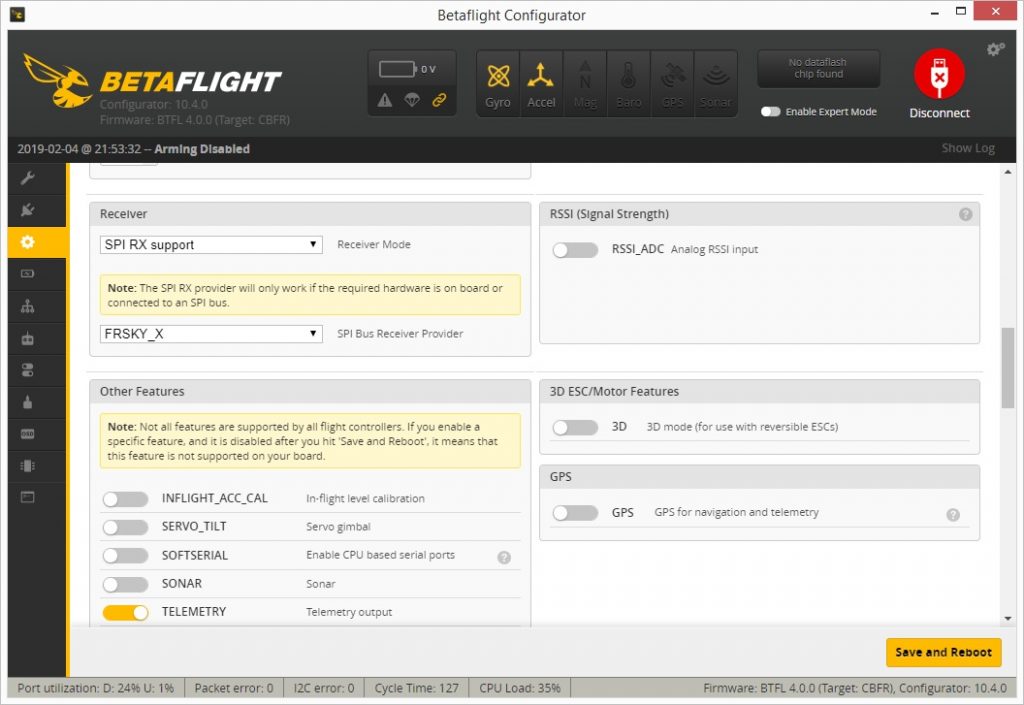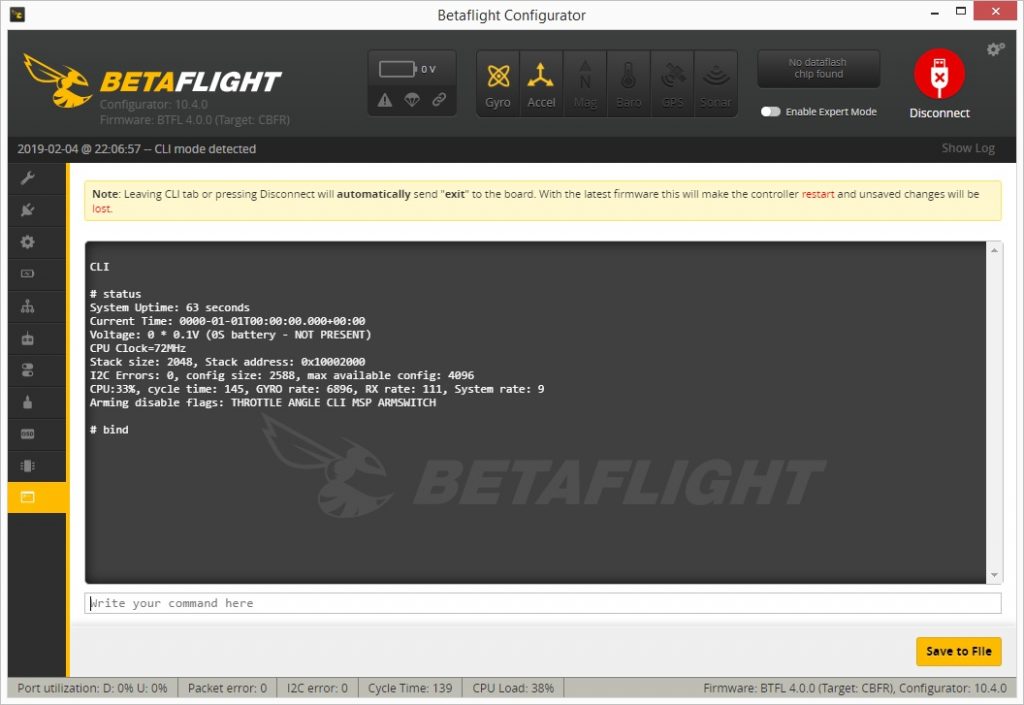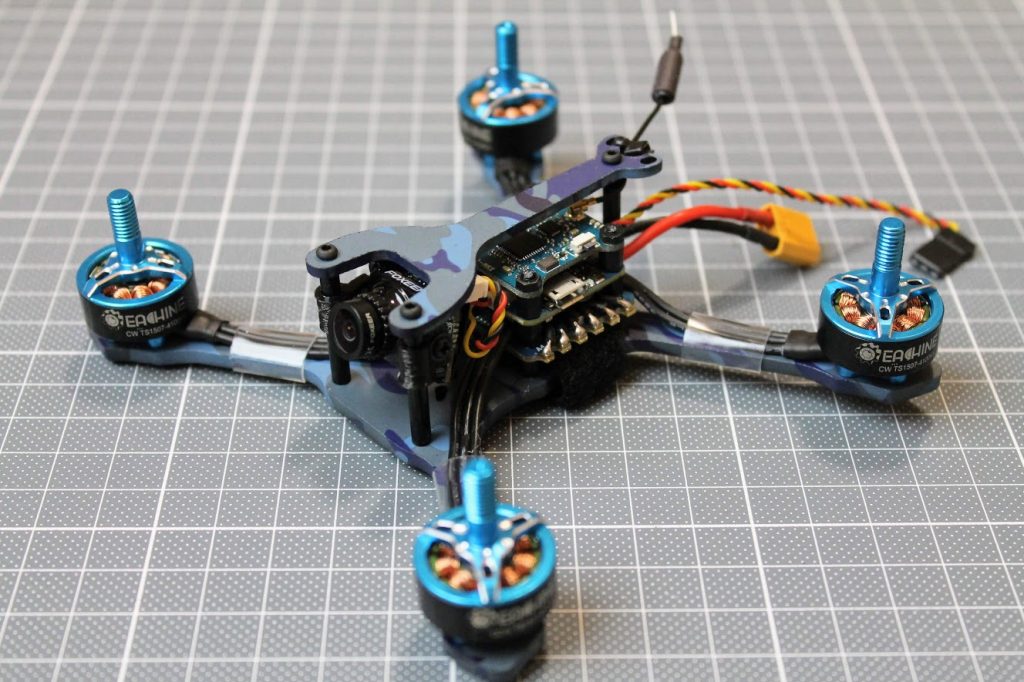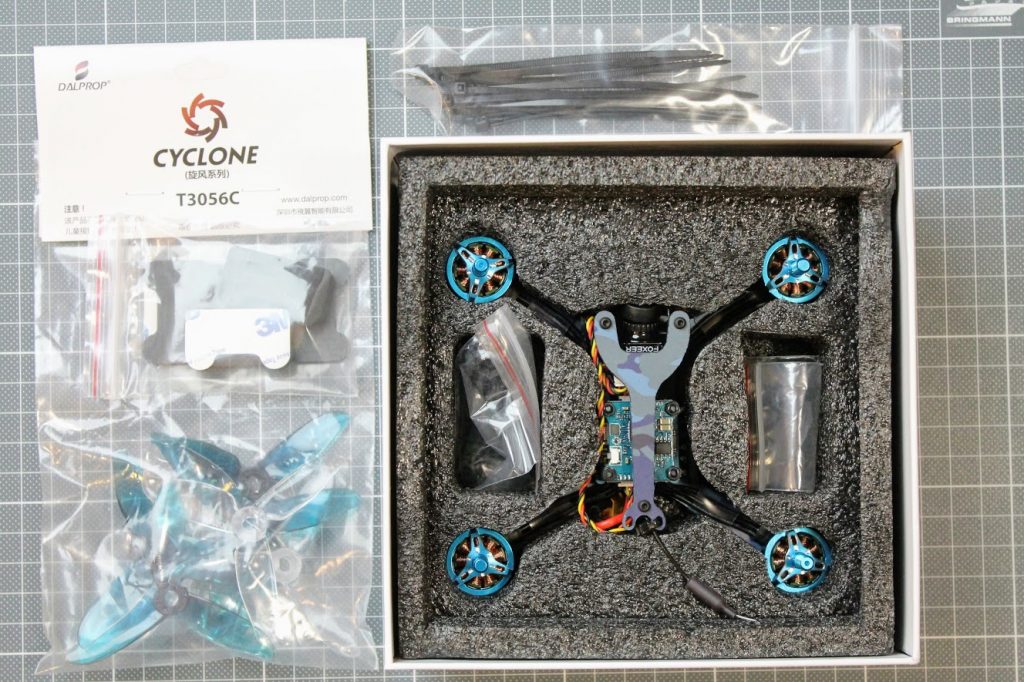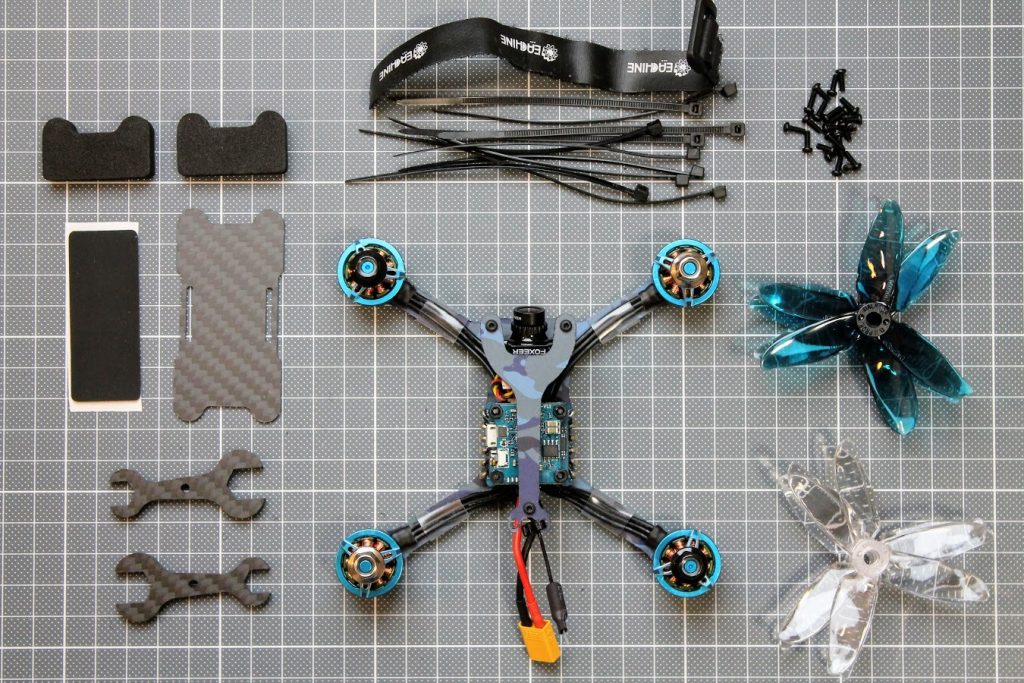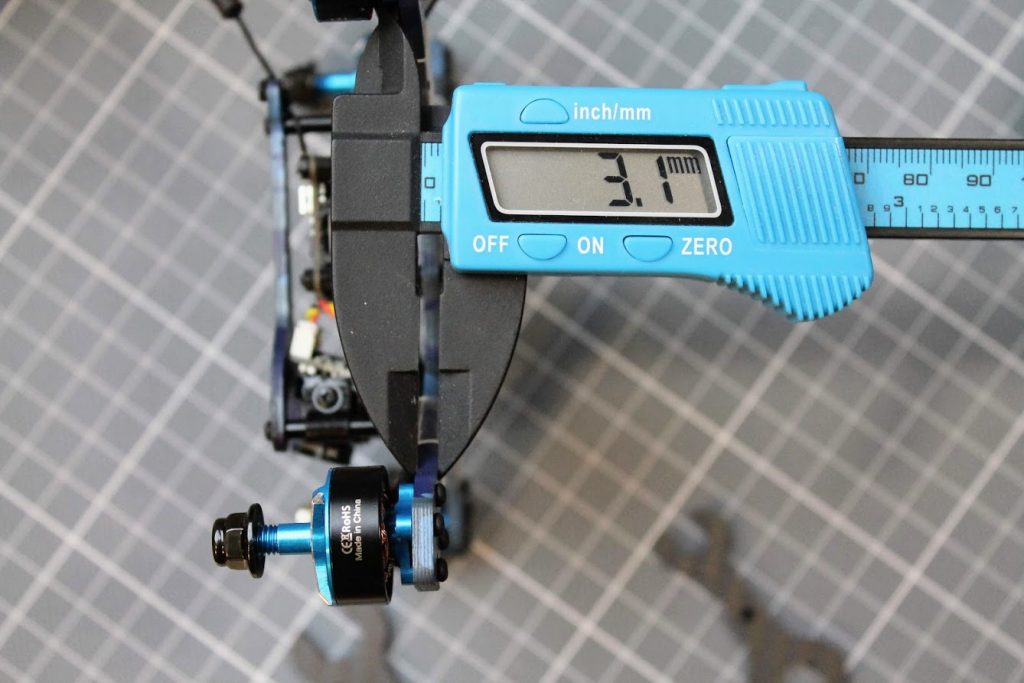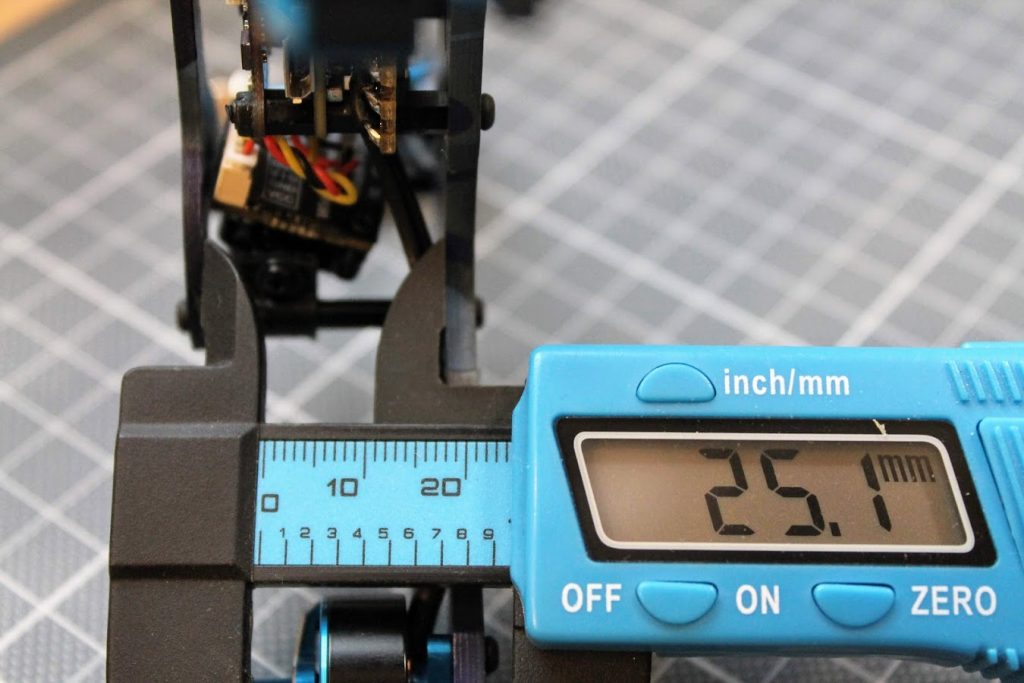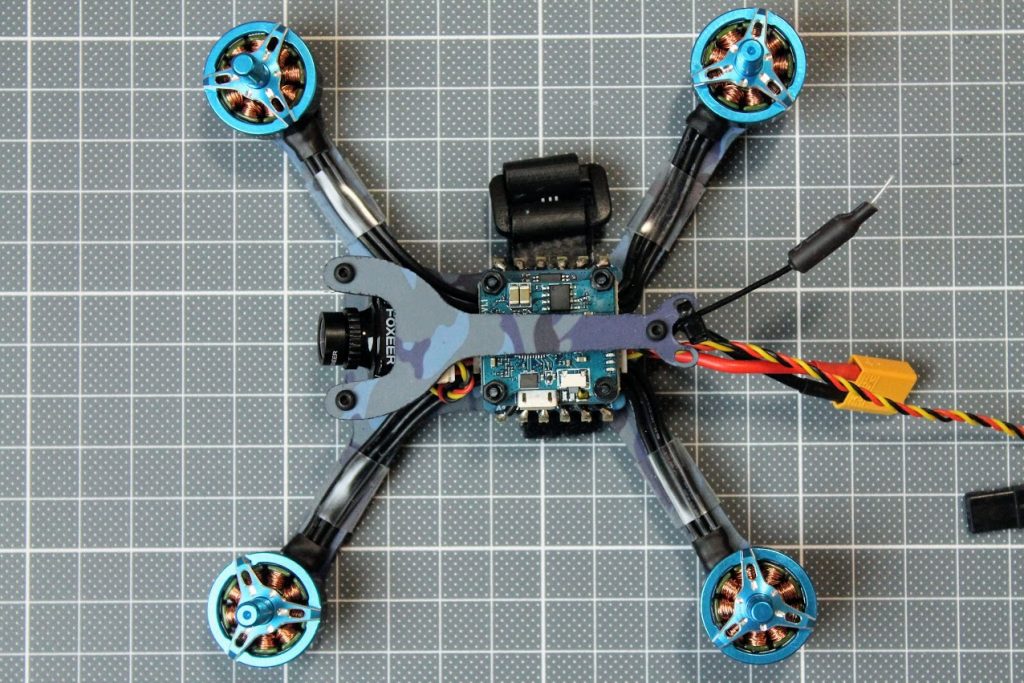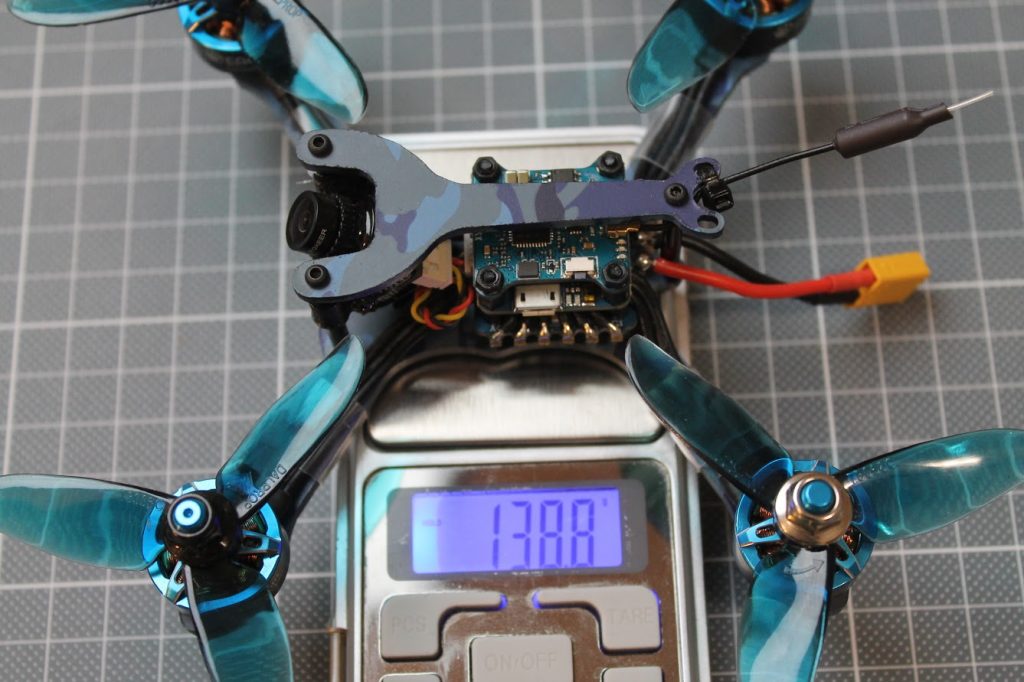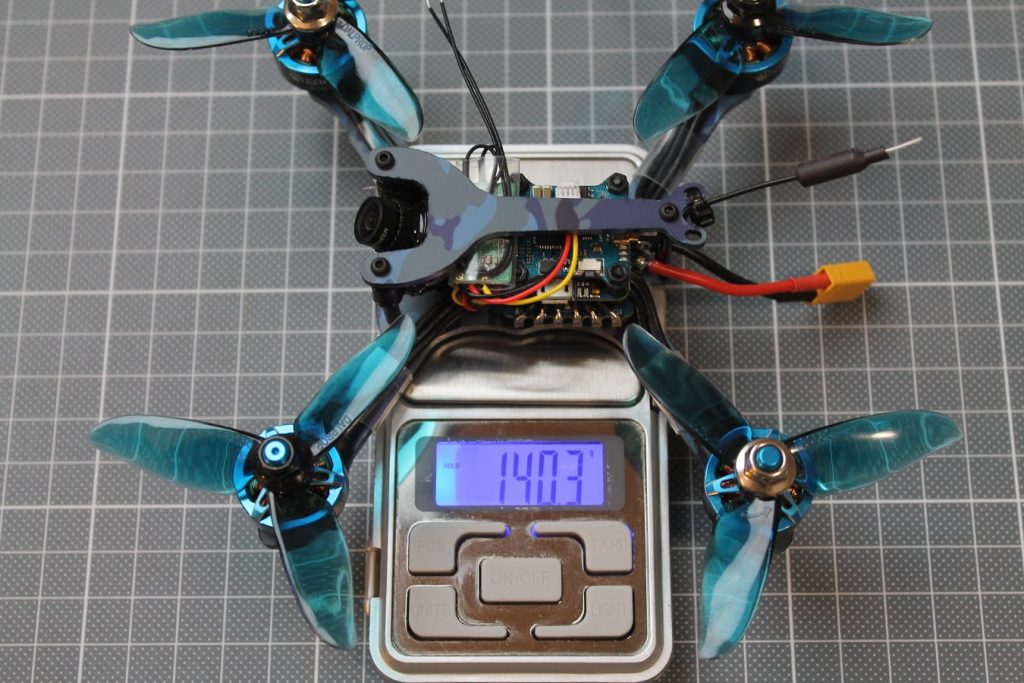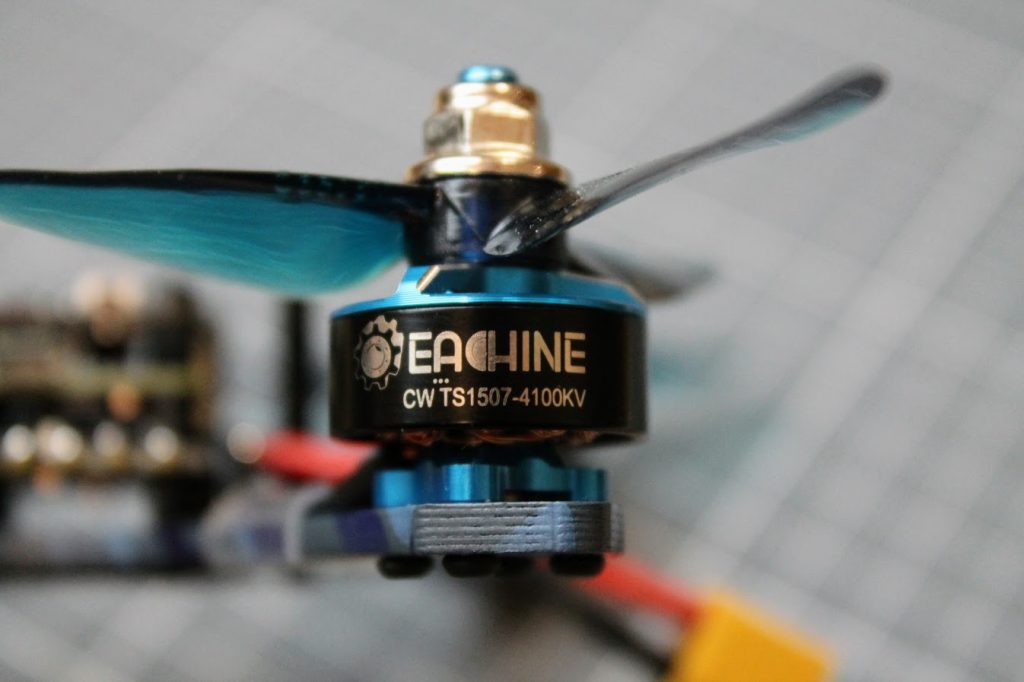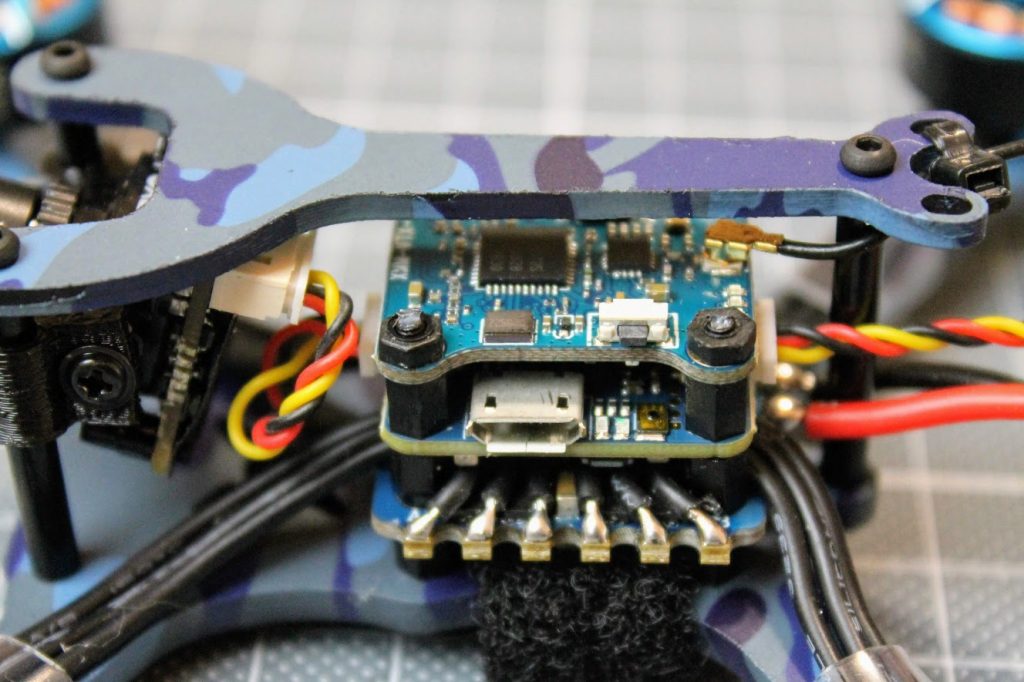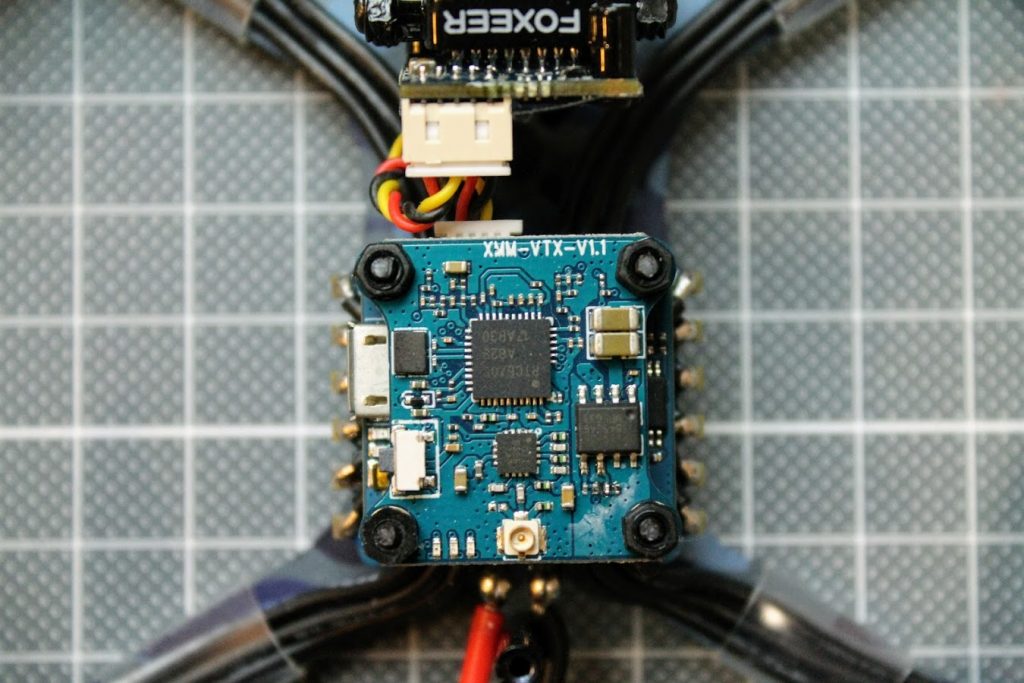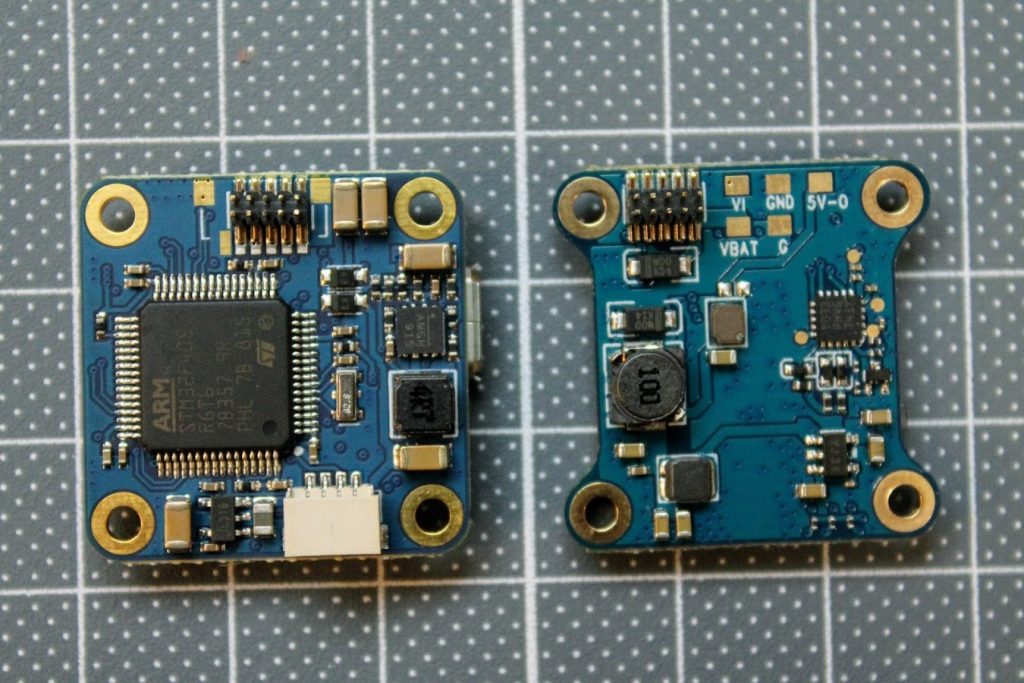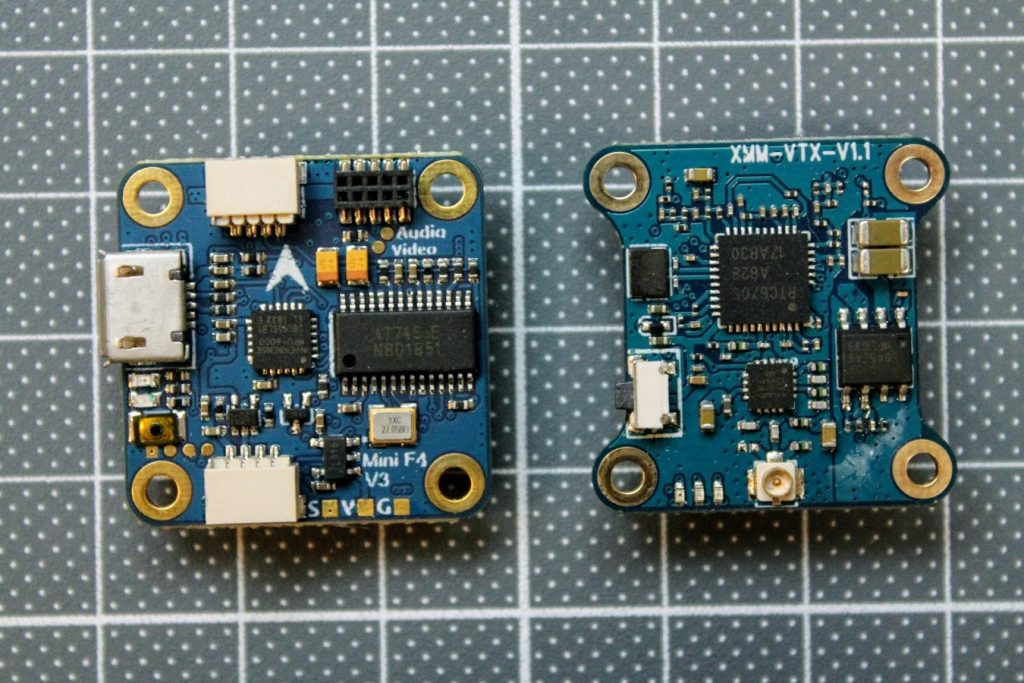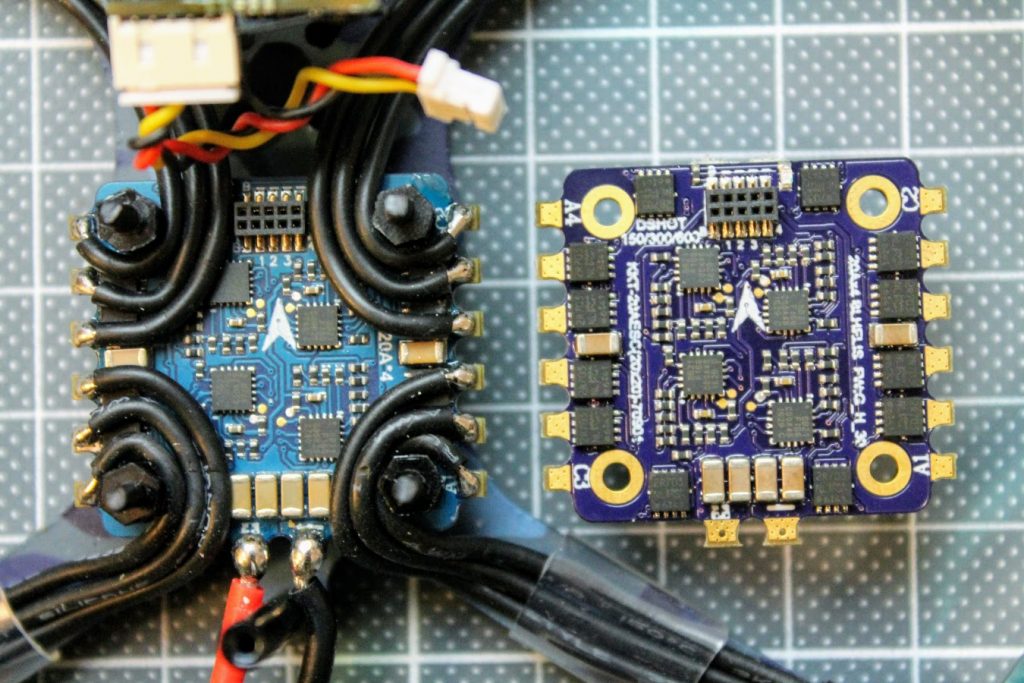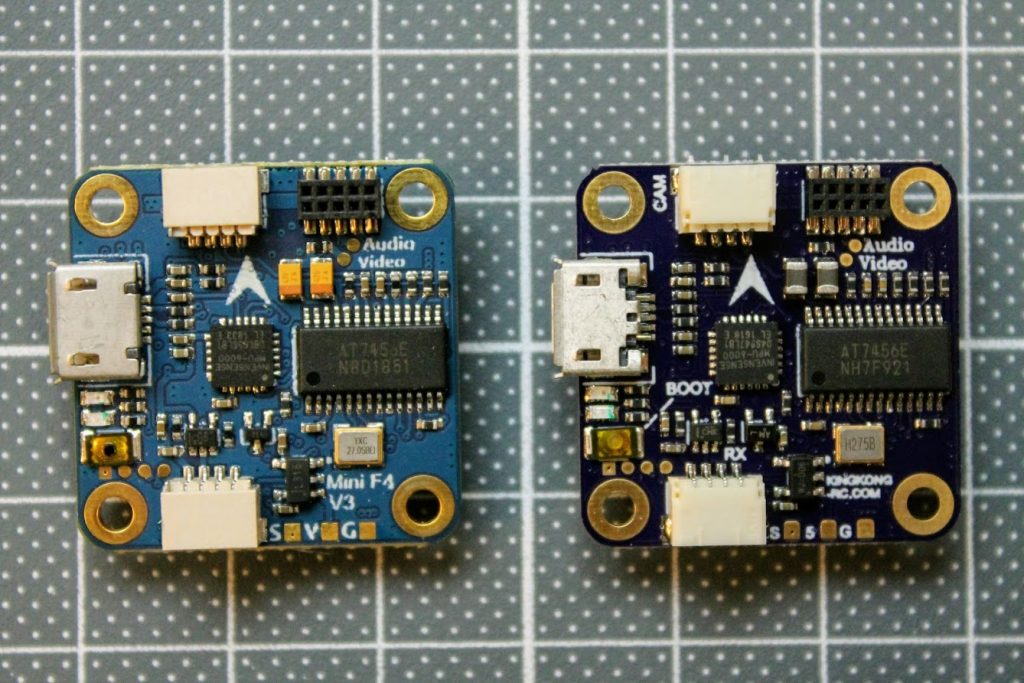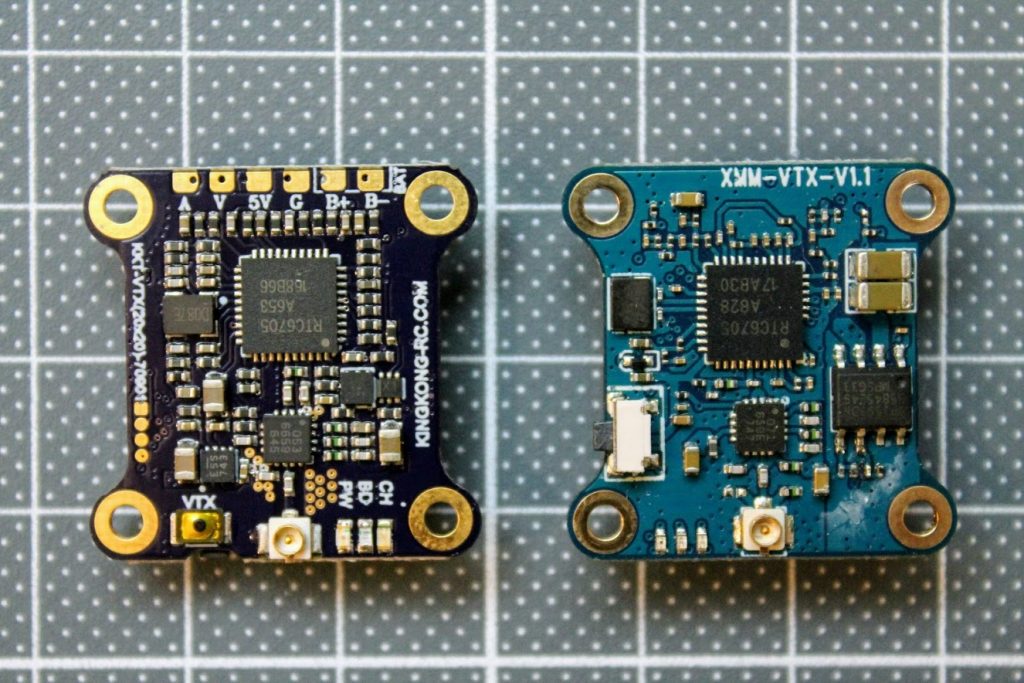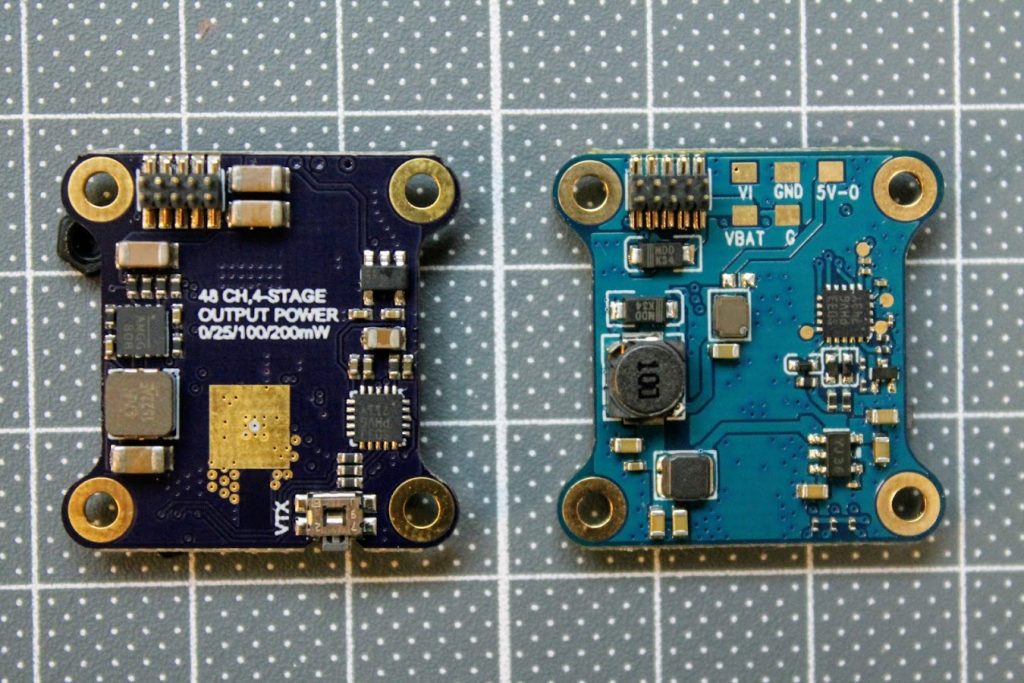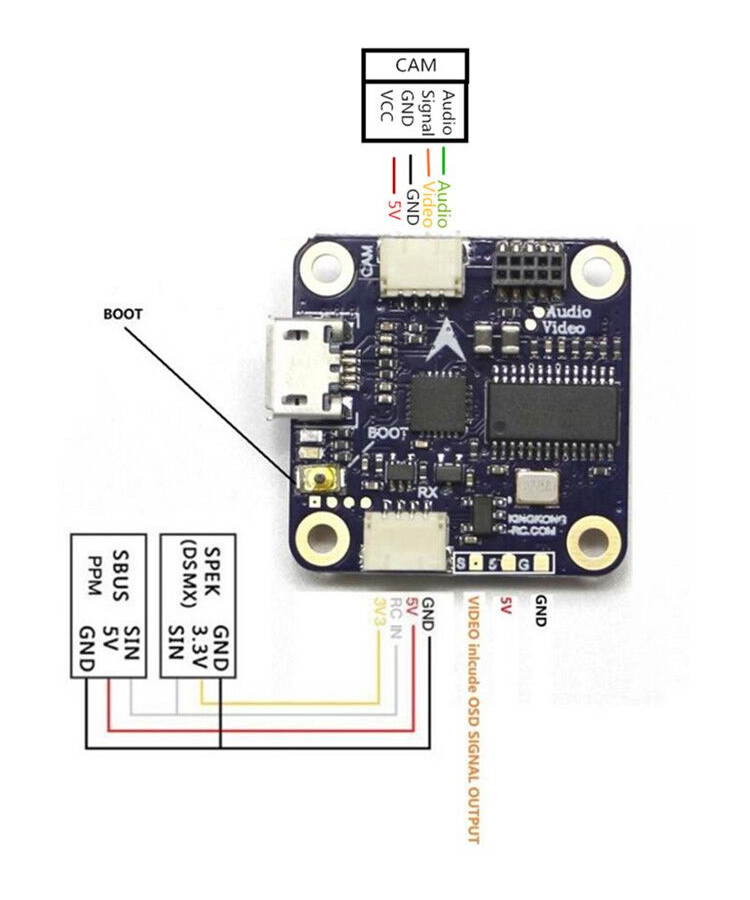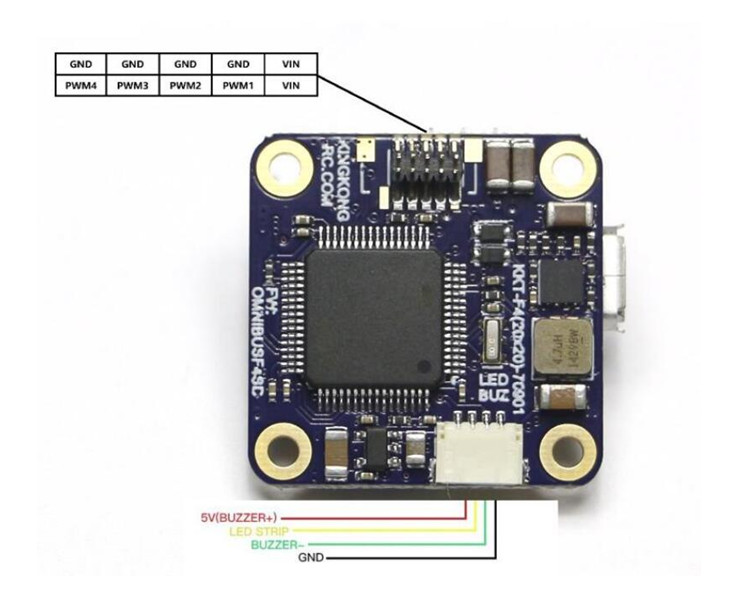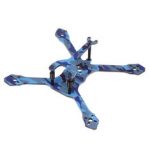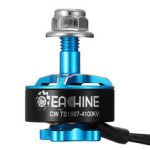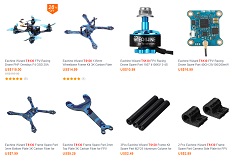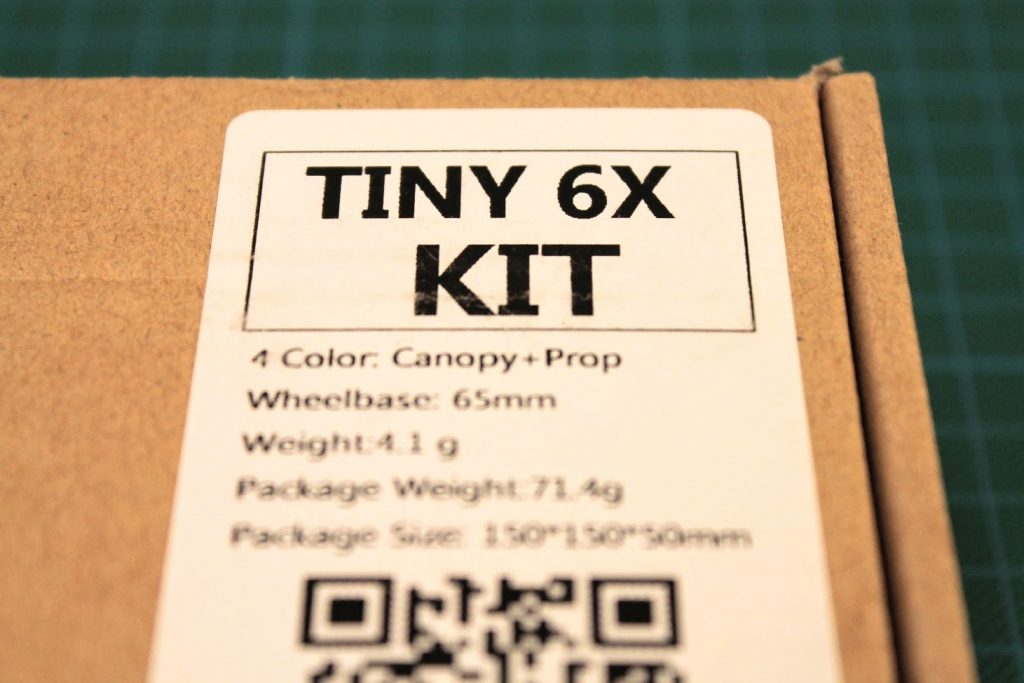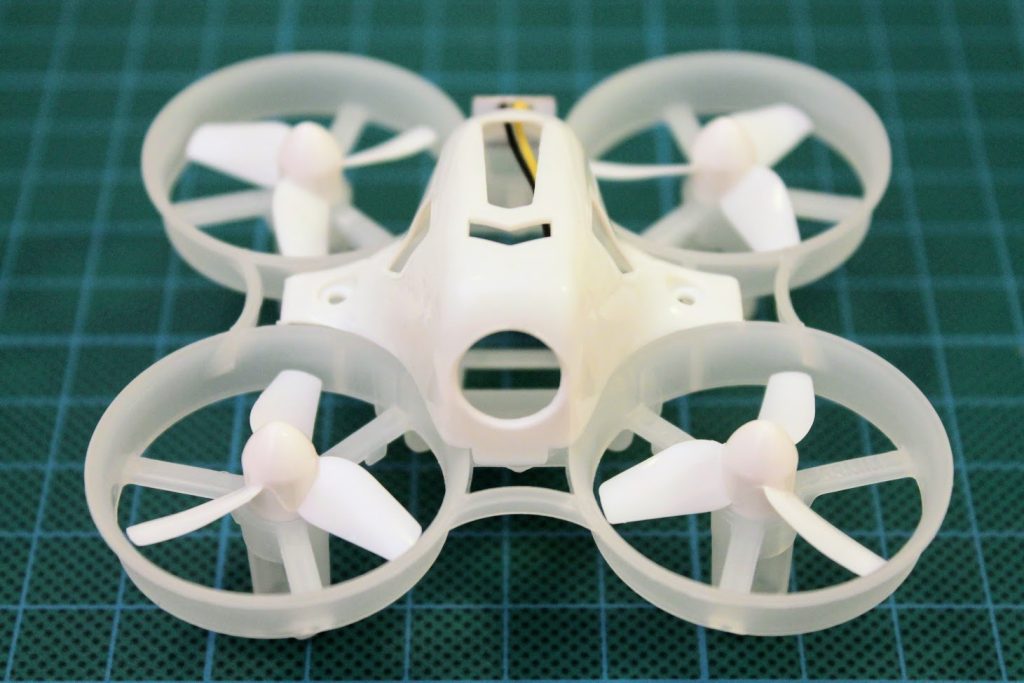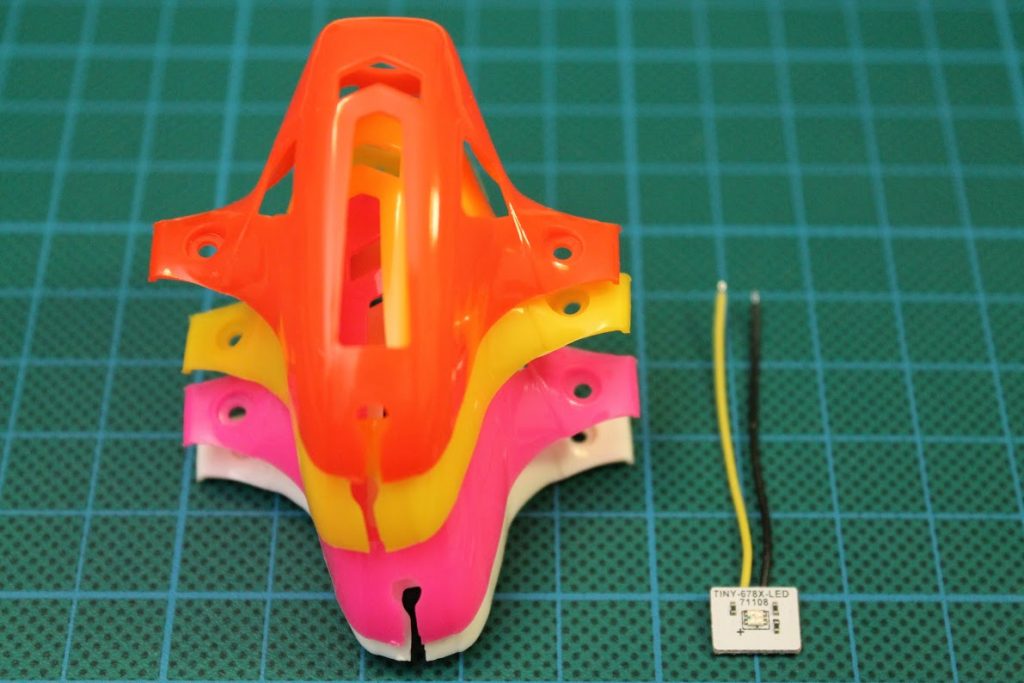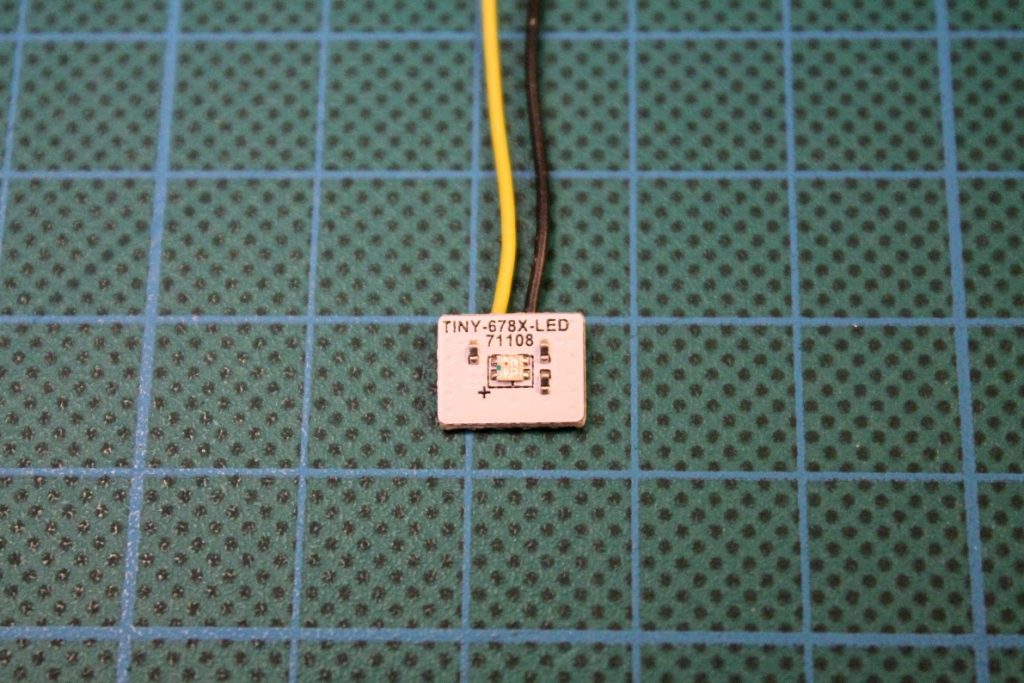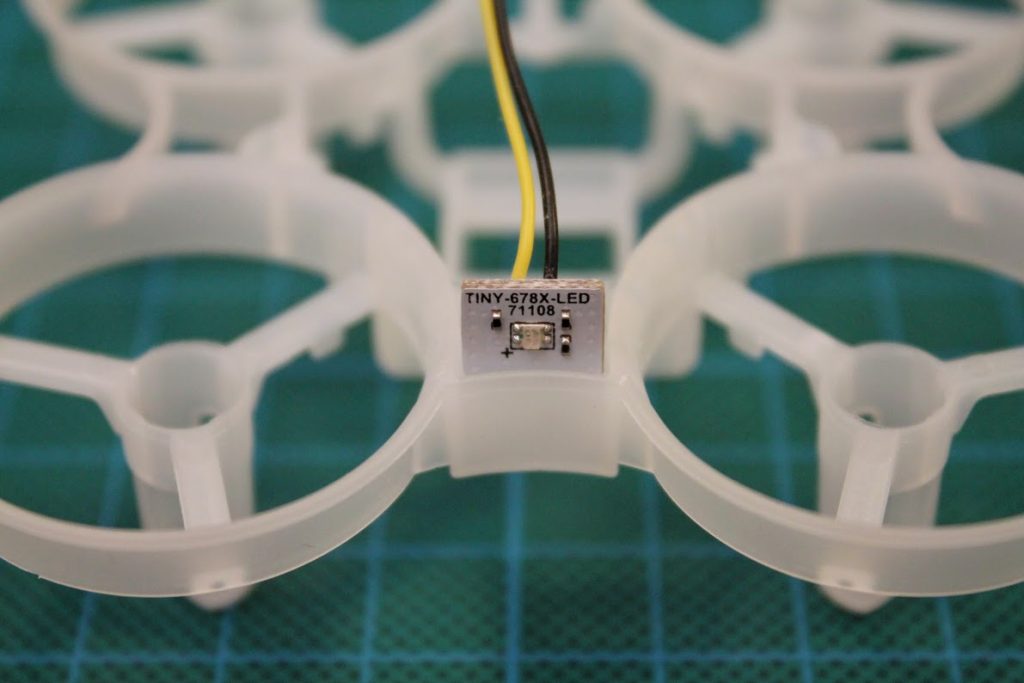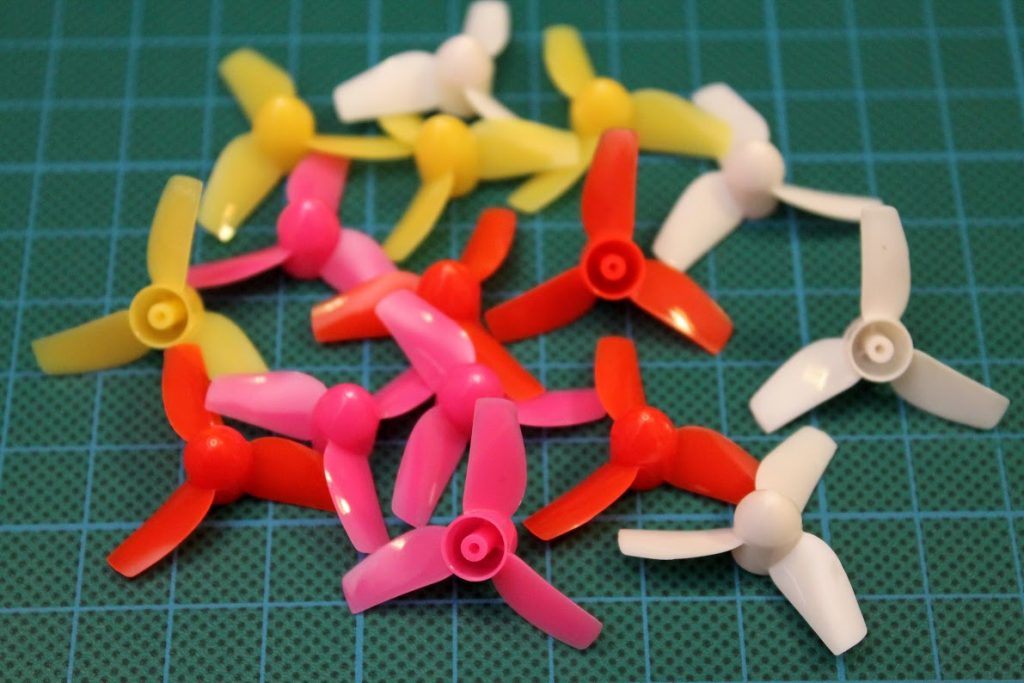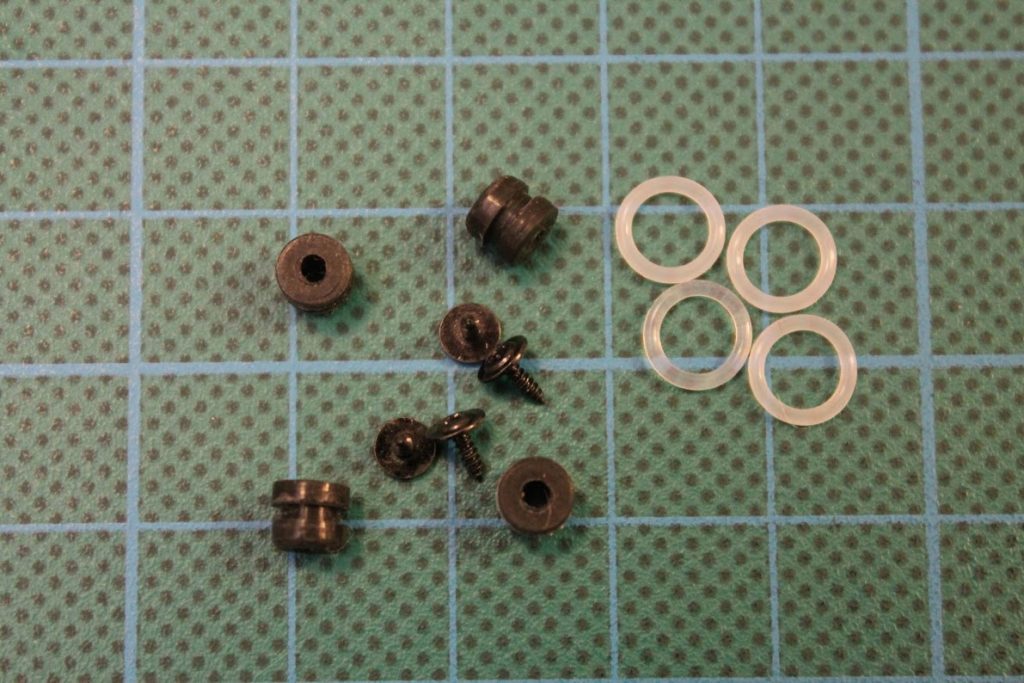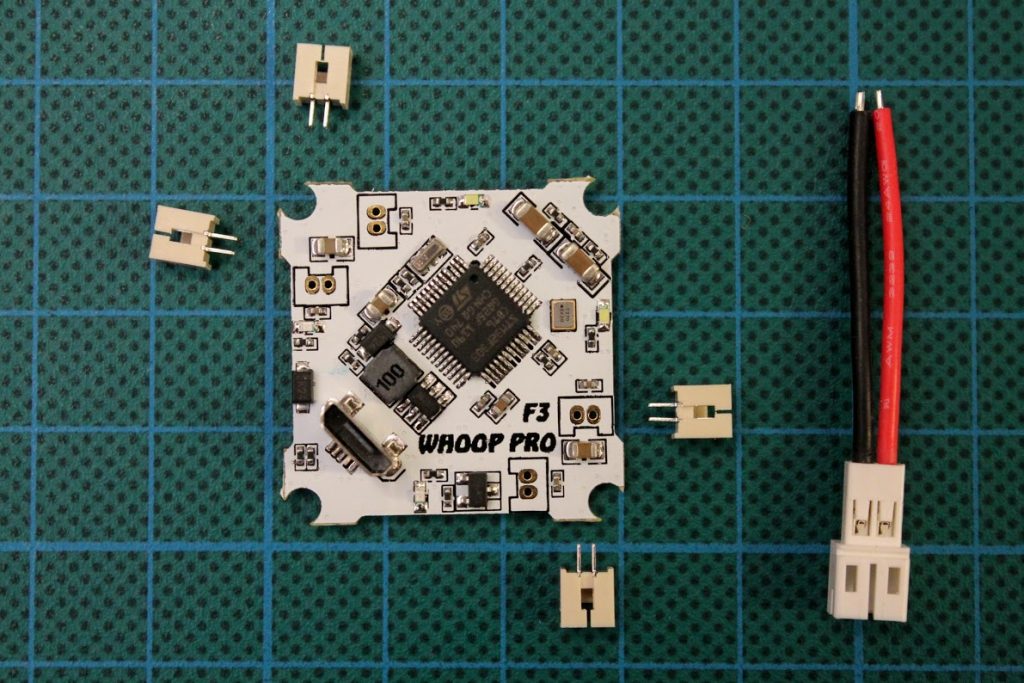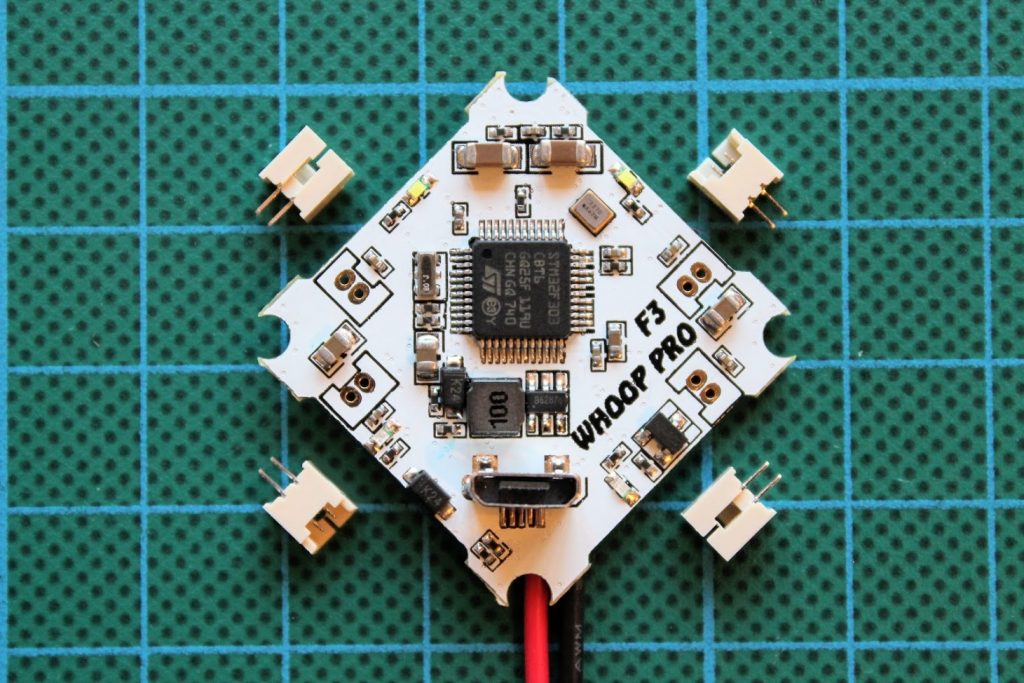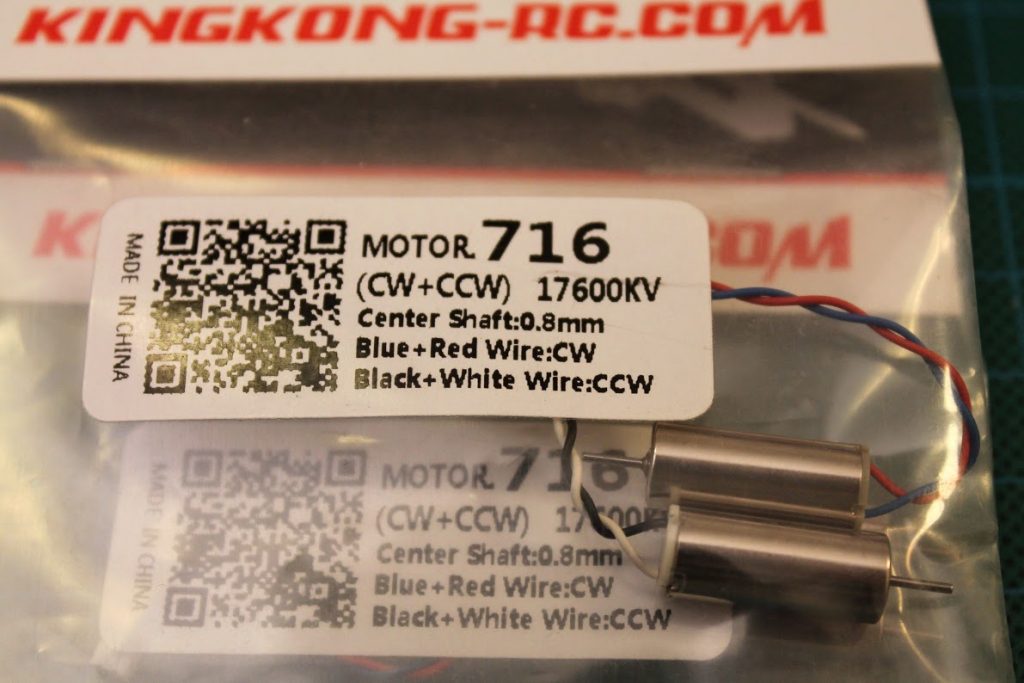Introduction
The long and interesting history of the FPV cameras started from the huge 32x32mm board cameras back in the year 2013. These FPV cameras were without casing, only the PCB with lens.
RunCam introduced Sky camera (about March, 2014). It was their first cased FPV camera. It started the new form factor with the case dimensions of 26×26mm. Case was made of metal and was heavy. Camera weight was about 18grams and it had performance issues.
Then Foxeer released the most sucessful and the most known HS1177 camera with the same casing. It had the same case dimensions of 26×26mm. RunCam then released the Swift (about April, 2016) camera with the same 26x26mm format. So the first camera size standard was finally settled and now is referred as Full Size (or Standard Size).
Camera Sizes
Currently the main four camera sizes were standartized. The main factor is camera width between the mounting points:
Standard (width 26-28mm)
Mini (21mm)
Micro (19mm)
Nano (14mm)
Camera Manufacturers
Foxeer and RunCam are old and well known FPV camera manufacturers. Recently Caddx joined the FPV camera market with good products. There is also another manufacturer of the FPV equipment, company called FXT. Others worth mentioning are Aomway, FatShark, HGLRC.
List of FPV cameras
Foxeer HS1177 (XAT600M)
One of the most known FPV cameras. Most often reffered as “HS1177” camera. It has 1/3” Sony SUPER HAD II CCD sensor. Was produced only in full size form factor. It became very popular as it offered great picture with decent WDR (at that time).
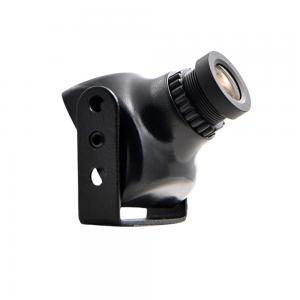 |
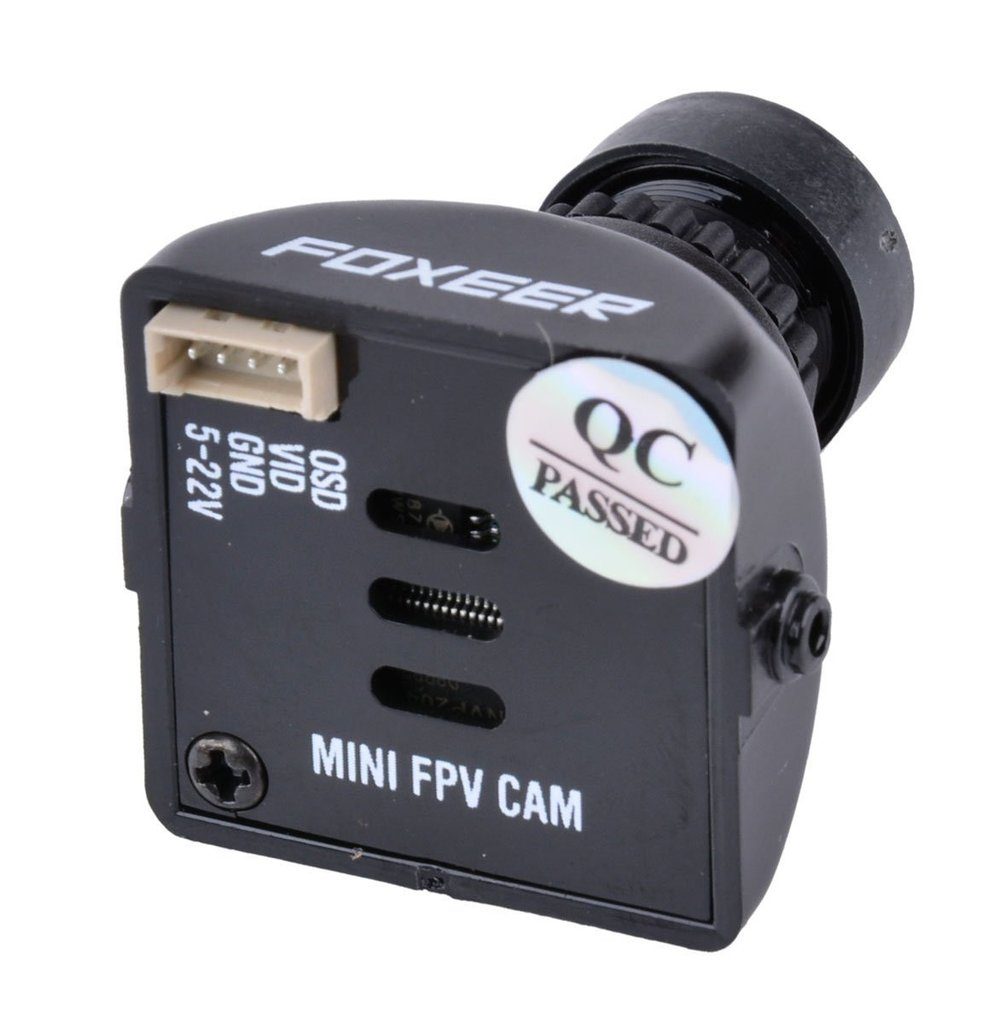 |
Release date – start of 2016
Interesting that it is still available for purchase even in 2019! It is the longest selling FPV camera ever.
Available @
Specifications:
Name: Foxeer XAT600M
Sensor: CCD 1/3” Sony SUPER HAD II CCD
DSP model Nextchip 2040
Pixel: NTSC 768(H)×494(V)
TV System: NTSC
Resolution: 650TVL(b/w), 600TVL(color)
Synchronization: internal synchronize
Shutter Speed (CCD IRIS): NTSC: 1/60~1/100000 sec
Noise: > 60 (AGC OFF)
Video Out: 75ohm, synchronize
Min. Illumination: 0.01Lux
Auto Gain: Off/Low/Mid/High
Back Light Compensation: (BLC) Off /Back light compensation/ Strong light suppression
Private shading: (PRIVACY) 1~8 private shading area
Motion Detection: (MD) On/ Off (Multi level sensitivity settable)
Auto White Balance: Manual / Auto / Auto track
Mirror: Horizontal Mirror optional
Negative: Positive / Negative optional
Color to B&W: Auto
DNR: 2DNR
WDR: D-WDR
Day / Night Shift: Auto/ Color/ B&W
Menu (OSD): English menu
White Dot Repair: Support
Image Adjustment: Support
Camera Title: Support
Power Requirement: DC5V~22V
Dimensions(mm): 25X25(W*L)
Weight: 14.6g (with bracket)
Power Consumption: 70mA
Foxeer Arrow V2
FOXEER ARROW V2 (also called HS1190) is the advanced version of FOXEER XAT600M (HS1177), which featured by wide dynamic range function and brilliant image performance. The main upgrade Arrow V1 It supports DC5-40V wide voltage range, also has inbuilt OSD and MIC. The camera case is made of aluminium and camera weights 14g. Built-in OSD can display name, power, flying time. Inbuilt MIC enables audio in FPV feed.
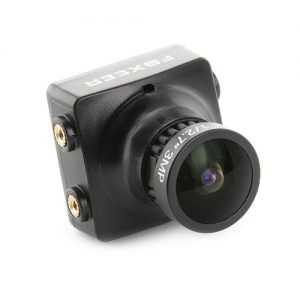 |
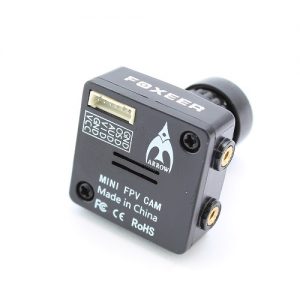 |
Discontinued. Was replaced by Foxeer Arrow V3
Foxeer Arrow V3
Upgraded Arrow V3 got Batery Voltage sensing pin input. Camera plug has been updated to 7pin plug. Battery voltage can be calibrated by OSD control.
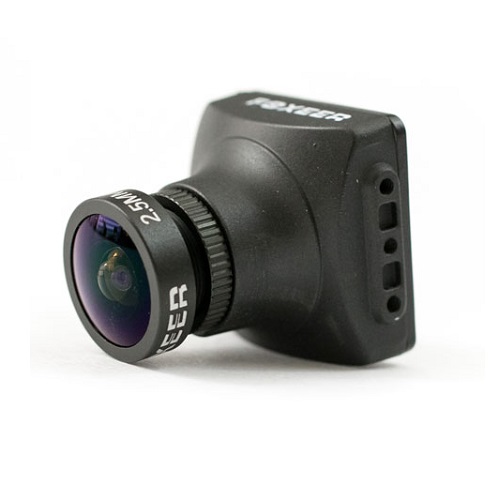 |
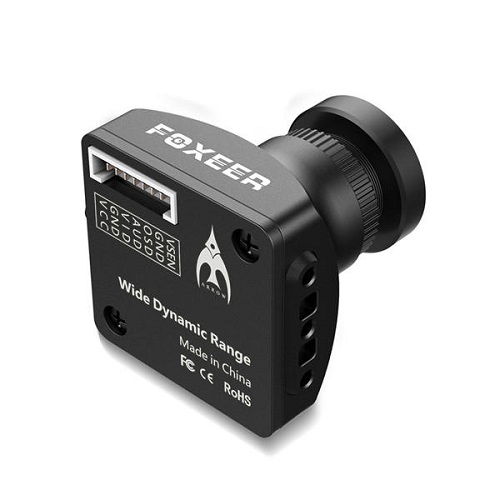 |
Discontinued. Was replaced by Arrow Mini.
Foxeer Falkor
One of the best Foxeer FPV camera, featuring G-WDR (global wide dynamic range), 1/3 CMOS sensor with 1200TVL resolution. This camera offers great detail level with natural colors an extremely wide dynamic range. Falkor can work in various lighting conditions as bright sun, cloudy, low light or artificial lights.
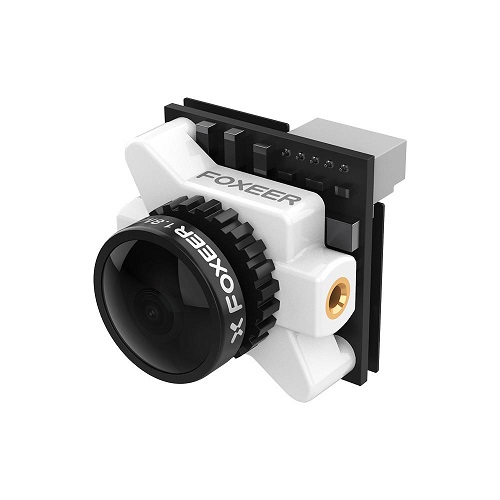 |
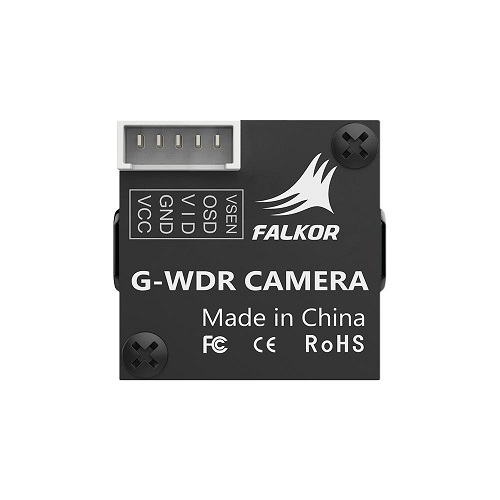 |
Foxeer Falkor camera is the only camera available in white color.
Release date – August, 2018. Discontinued and replaced by Falkor 2
Available @
http://surveilzone.com/Foxeer-Micro-Falkor-1200TVL-Camera-16-4-3-PALNTSC-Switchable-GWDR-g-2258
Foxeer Falkor 2
Second version of the probably the best Foxeer FPV camera. Falkor 2 has the same specs as the previous version, but Foxeer has made some changes in the camera firmware improving image quality like higher definition, improved natural colors, auto-adaptive global WDR and fixing some issues with the previous version, such as blackouts when the light suddenly changes and frame freezing. Also latency of the camera was reduced.
Available in full size and micro sizes.
 |
 |
Release date – August, 2019
Available @
http://surveilzone.com/Foxeer-Falkor-Micro-2-FPV-Camera-Freestyle-Long-Range-Global-WDR-g-2318
Foxeer Razer Micro & Mini
Fozeer Razer is budget and probably the cheapest Foxeer FPV camera. Despite the low price this camera has pretty decent image quality. Foxeer Razer is 1/3 CMOS sensor 1200TVL camera. It comes in two aspect ratio options 4:3 or 16:9.
Available in mini and micro sizes.
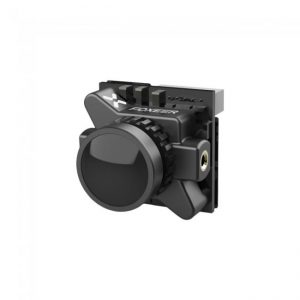 |
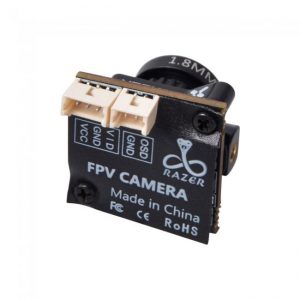 |
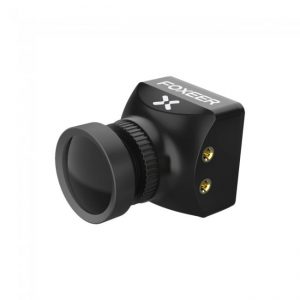 |
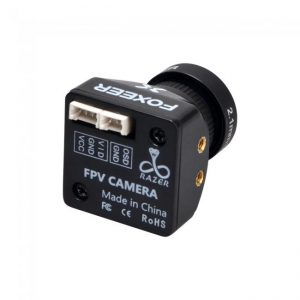 |
Release date – October, 2019
Razer Micro available @
http://www.surveilzone.com/Foxeer-Micro-Razer-FPV-Camera-PAL-NTSC-Switchable-g-2326
Color: Black, Red (optional)
Scale: 4:3 / 16:9 (optional)
Sensor Type: 1/3 CMOS
TV System: PAL / NTSC Switchable
Resolution: 1200TVL
FOV: 4:3 FOV-H 125°, FOV-D 150° / 16:9 FOV-H 125°, FOV-D 140°
Shutter Speed: PAL: 1/25~1/10000 sec; NTSC: 1/30~1/10000 sec
Min. Illumination: 0.01Lux
White Balance: Auto
DNR: 3DNR
WDR: 90db
Day / Night Shift: EXT / Auto / Color / B&W
Power Requirement: DC 4.5V~25V
Language: English / Chinese / Pyccknn / Espanol / Francais / Polski / Italiano / Portugues / Japanese / Korean / Eaahnika
Dimension: 19×18.7mm (without bracket)
Weight: 4.5g
Razer Mini available @
Color: Black, Red (optional)
Scale: 4:3 / 16:9 (optional)
Lens: 1.8mm, 2.1mm (optional)
Sensor Type: 1/3 CMOS
TV System: PAL / NTSC Switchable
Resolution: 1200TVL
FOV: 4:3 FOV-H 125°, FOV-D 155° / 16:9 FOV-H 125°, FOV-D 145°
Shutter Speed: PAL: 1/25~1/10000 sec; NTSC: 1/30~1/10000 sec
Min. Illumination: 0.01Lux
White Balance: Auto
DNR: 3DNR
WDR: 90db
Day / Night Shift: EXT / Auto / Color / B&W
Power Requirement: DC 4.5V~25V
Language: English / Chinese / Pyccknn / Espanol / Francais / Polski / Italiano / Portugues / Japanese / Korean / Eaahnika
Dimension: 21.8×21.8mm (without bracket)
Weight: 12g
Foxeer T-Rex
Foxeer T-Rex FPV camera has the highest 1500TVL vertical resolution in the market. It is the first 1500TVL camera made by Foxeer. Camera lens is 1.7mm with a maximum FOV of 175° for 16:9 aspect ratio.
Available in micro size only.
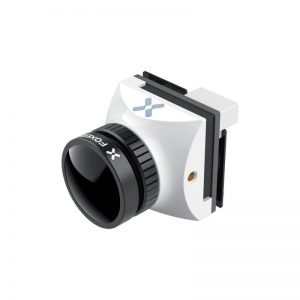 |
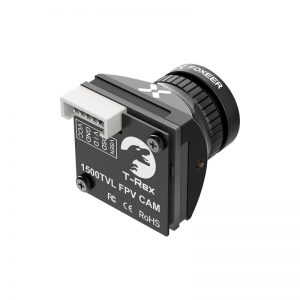 |
Release date – October, 2020
Available @
Banggood: https://www.banggood.com/Foxeer-T-Rex-Micro-1500TVL-Super-Low-Latency-…-1756536.html
Surveilzone: http://surveilzone.com/Foxeer-T-Rex-Micro-1500TVL-FPV-Camera-Low-Latency-Super-WDR-Low-light-g-2368
Foxeer: https://www.foxeer.com/foxeer-t-rex-micro-1500tvl-low-latency-super-wdr-fpv-camera-g-308
Sensor Type: CMOS 2MP
Scale: 4:3/16:9 Switchable
Tv System: PAL/NTSC Switchable
Resolution: 1500TVL
FOV:4:3 FOV-H: 120° FOV-D:150°
16:9 FOV-H: 155° FOV-D:175°
Shutter Speed: Auto
Flip Up, Down, Left and Right
Video Output: CVBS Analog Signal
Minimum Illumination: 0.001Lux
White Balance: Auto
DNR: 3DNR
WDR: 110dB
DAY/NIGHT EXT/Auto/Color/B&W
Flight OSD Voltage/Cam Title/Time
Input Voltage: 4.5V~16V
Power Consumption: 115mA±15%@DC12V,270mA±15%@DC5V
Dimension: 19*19mm
Weight: 8.7g(Exclude cable)
RunCam Micro Eagle
One of the best (if not the best) cameras at the time it was released. Big CMOS sensor (1/1.8″), full size (M12) lens, good WDR with 6 adjustable levels, switchable NTSC/PAL, 16:9 aspect ratio. But the most important – it has superior crisp and detailed video feed, that feels “like HD”.
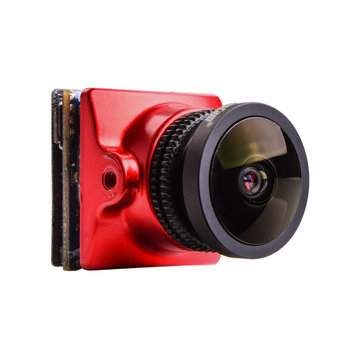 |
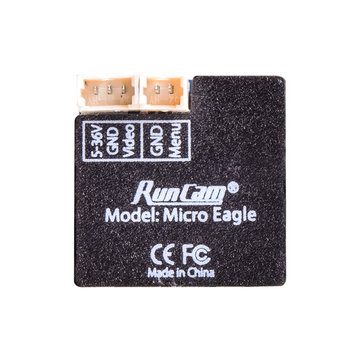 |
Release date – February, 2018
Available @ Banggood: https://www.banggood.com/RunCam-Micro-Eagle-…-FPV-Camera-for-RC-Drone-p-1259121.html
RunCam Shop: https://shop.runcam.com/runcam-micro-eagle/
Micro Eagle User Manual: https://www.runcam.com/download/MICROEAGLE-Manual.pdf
Micro Eagle User Manual with Remote Control: https://www.runcam.com/download/MICROEAGLE-Remote-Control-Version-Manual.pdf
Specification:
Model: RunCam Micro Eagle
Image Sensor: 1/1.8″ CMOS Sensor
Horizontal Resolution: 800TVL
FOV : FOV 170 @ 16:9, FOV 140 @ 4:3?
Screen Format: 16:9 / 4:3 Switchable on OSD menu
Signal System: NTSC / PAL Switchable on OSD menu
Mirror/Flip: Yes
S/N Ratio: >50dB
Electronic Shutter Speed: Auto
Max Gain: 1-9 Level
Min. Illumination: 0.001Lux@1.2F
WDR: Level 1-6 available
Day/Night: Auto/External/Color/B&W
Power: DC 5-36V
Current: 200mA@5V / 90mA@12V
Housing Material: ABS
Net Weight: 8.5g
Dimensions: L19mm*W19mm*H22mm
Features:
Mirror & Flip image available
16:9 / 4:3 Switchable on OSD menu
NTSC / PAL Switchable on OSD menu
Level 1-6 available WDR
RunCam Micro Sparrow 2
Second version on the Sparrow series of CMOS cameras. Camera is very light (4.5g), supports wide voltage input (5-36V). It also has battery voltage sensor, easy 6 preset scenes change feature. Interesting fact – Runcam Sparrow V1 was 16:9 aspect ration and Sparrow V2 was changed to 4:3.
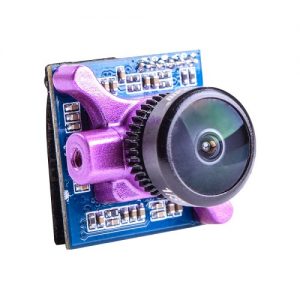 |
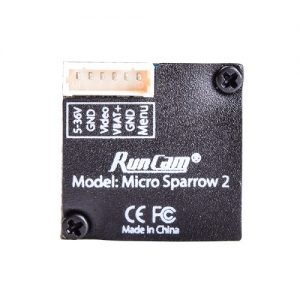 |
Was released in March, 2018.
Discontinued and replaced by Micro Sparrow 2 Pro
Specification:
Model RunCam Micro Sparrow 2
Image Sensor: Super WDR CMOS Sensor
Horizontal Resolution: 700TVL
Lens: 2.1mm ?(M8)? FOV150°
Screen Format: 4:3
Signal System NTSC / PAL (option)
Mirror/Flip Available
Integrated OSD Yes
One Touch Scene Setting: Personal / Lightrax / Outdoor / Indoor / Cloudy / Twilight
S/N Ratio >50dB
Electronic Shutter Speed Auto
Min. Illumination 0.01Lux@2.1F
WDR Super WDR
Day/Night Auto
Power: DC 5-36V
Current 120mA@5V / 50mA@12V
Housing Material ABS
Weight: 4.5g
Dimensions L19mm*W19mm*H17mm
RunCam Micro Sparrow 2 Pro
Updated version of the Micro Sparrow 2 Pro. The internals are the same as previous Sparrow 2 camera, but the Pro version has fully enclosed body and the full size M12 lens (instead of M8). Of course this increased the weight from 4.5 to 9.9 grams.
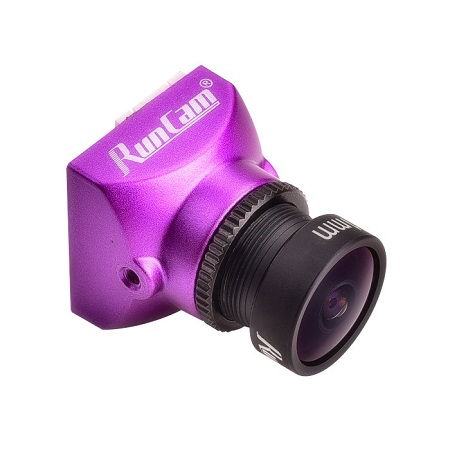 |
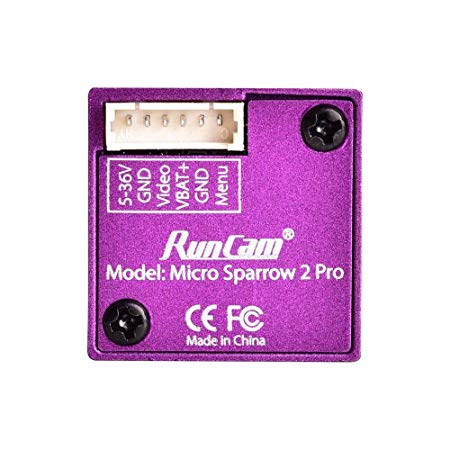 |
Available @
RunCam: https://shop.runcam.com/runcam-micro-sparrow-2-pro/
RaceDayQuads: https://www.racedayquads.com/products/runcam-micro-sparrow-2-pro-fpv-camera-4-3-2-1mm-lens
Specification:
Model: RunCam Micro Sparrow 2 Pro
Image Sensor: Super WDR CMOS Sensor
Horizontal Resolution: 700TVL
Lens: 2.1mm (M12) FOV150°?
Screen Format: 4:3
Signal System: PAL/NTSC
Mirror/Flip: Available
Integrated OSD: Yes
One Touch Scene Setting: Personal / Lightrax / Outdoor / Indoor / Cloudy / Twilight
S/N Ratio: >50dB
Electronic Shutter Speed: Auto
Min. Illumination: 0.01Lux@1.2F
WDR: Super WDR
Day/Night: Auto
Power: DC 5-36V
Current: 40mA@12V / 110mA@5V
Housing Material: ABS
Net Weight: 2.1mm – 9.9g
Dimensions: L19mm*W19mm*H25mm
RunCam Micro Swift 3
Third generation on the famous Swift camera. It is CCD camera with all the goodies from the previous models – 600TVL, OSD, voltage sensing, D-WDR, one key scene change system. Runcam Micro Swift 3 comes in two lens size options M8 and M12 size lens from the bigger brother camera RunCam Swift. Have in mind that camera with M12 lens is significant bigger (25mm) versus the M8 micro sized lens camera (18mm), so your camera lens can be exposed out of the frame and unprotected from the impacts.
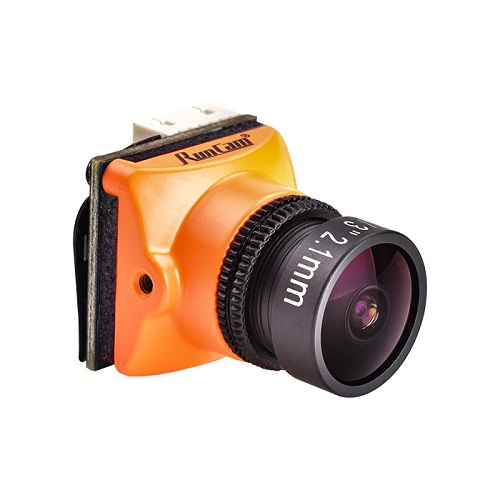 |
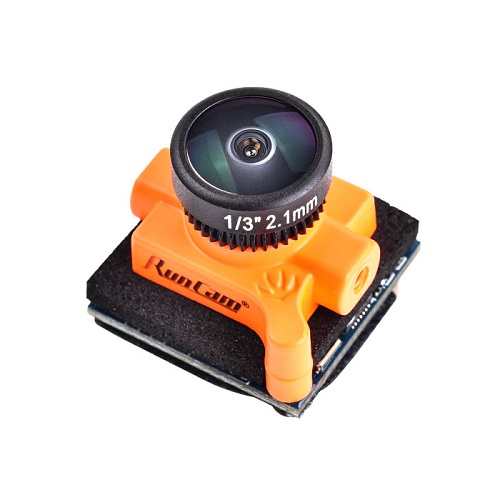 |
 |
3rd generation of Swift camera introduced UART camera control instead of the dedicated joystic controller.
Was replaced by RunCam Swift 3 V2 (see below).
Available @ Banggood: https://www.banggood.com/Runcam-Micro-Swift-3-600TVL-CCD-Mini-Camera-2_1mm2_3mm-165150-Degree-PALNTSC-OSD-Configuration-p-1280720.html
RunCam: https://shop.runcam.com/runcam-micro-swift-3/
RunCam Swift 3 User manual: https://www.runcam.com/download/MicroSwift3-Manual.pdf
Specification:
Model: Micro Swift 3
Image Sensor 1/3″ SONY Super HAD II CCD
Horizontal Resolution: 600TVL
Lens: 2.1mm ?(M12)? FOV165° / 2.3mm(M12) FOV 150°
2.1mm ?(M8)? FOV160° / 2.3mm(M8) FOV 145°
Signal System: PAL / NTSC
Integrated OSD: Yes
One Key Scene Personal / Lightrax / Outdoor / Indoor / Cloudy / Twilight
S/N Ratio >60dB (AGC OFF)
Electronic Shutter Speed PAL: 1/50~100,000; NTSC: 1/60~100,000
Auto Gain Control (AGC) Yes
Min. Illumination: 0.01Lux@1.2F
WDR D-WDR
DNR 2DNR
Day/Night Color/Auto/B&W
Remote Control Flight Controllers : BetaFlight 3.3 / ButterFlight 3.4 / Cleanflight 2.2
Power DC 5-36V
Current 60mA@12V / 120mA@5V
Net Weight 9g(2.3mm) / 11g(2.1mm) / 5.6g(M8)
Dimensions L19mm*W19mm*H25mm(M12) / L19mm*W19mm*H19mm(M8)
RunCam Micro Swift 3 V2
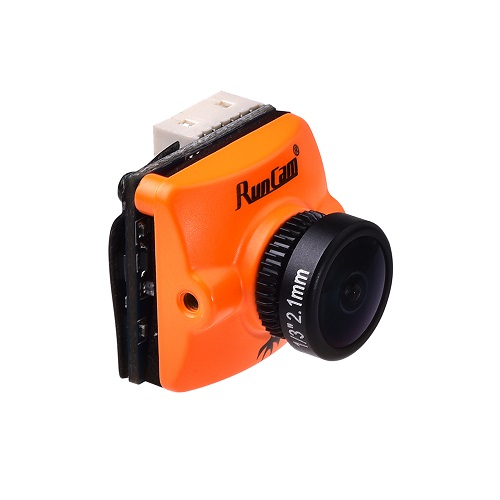 |
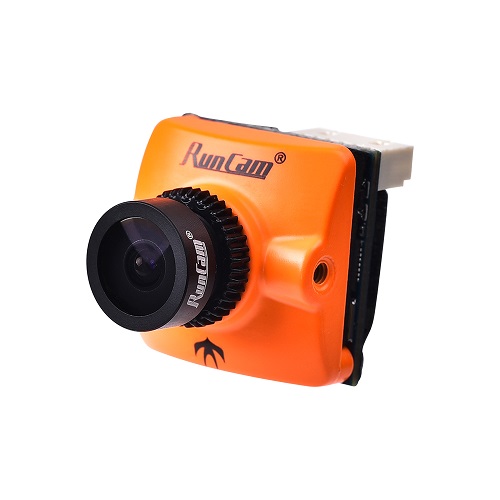 |
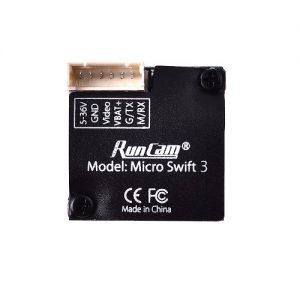 |
Release date – February, 2019
This is the slightly updated version (V2) of the third generation of the famous Runcam Swift camera. It is CCD camera with all the goodies from the previous models – 600TVL, OSD, voltage sensing, D-WDR, one key scene change system. Runcam Micro Swift 3 V2 comes only in M8 size lens and with F2.1 or F2.3 options. The main diffrence between the V1 of Swift 3 is the ability to switch between Joystick and UART camera control.
To switch between the modes, you need to short the two camera control pins
Then power on camera and it will automaticaly switch between the two modes, indicating the mode on the OSD.
UART Control works with Flight Controllers:BetaFlight 3.3 or above / ButterFlight 3.4 or above / CleanFlight 2.2 or above / Kiss Flight RC36 or above
RunCam website: https://shop.runcam.com/runcam-micro-swift-3/
RunCam Swift 3 V2 User Manual: https://www.runcam.com/download/MicroSwift3-Manual-V2.pdf
Description:
RunCam Racer
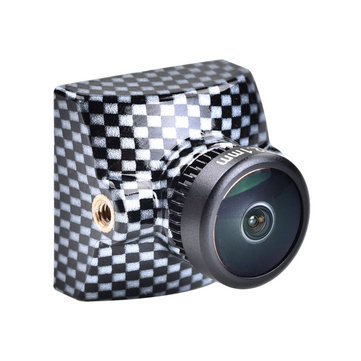 |
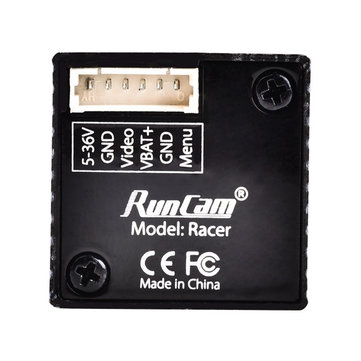 |
You can already guess by the name that this camera is designed for racers. Its main feature is ultra low lattency of only 6ms. It is micro sized (19x19mm) camera with 700TVL CMOS sensor. You can switch between 4:3/16:9 aspect ratio and between NTSC/PAL in the camera OSD menu.
Discontinued. Was replaced by RunCam Racer 2 .
Specification:
Image Sensor: Super WDR CMOS Sensor
Horizontal Resolution: 700TVL
Lens: 2.1mm (M8) FOV 140°
Screen Format: 4:3 / Widescreen (Switchable on OSD menu)
Signal System: NTSC / PAL
Mirror/Flip: Available
Integrated OSD: Yes
One Touch Scene Setting: Personal / Lightrax / Outdoor / Indoor / Cloudy / Twilight
S/N Ratio: >50dB
Electronic Shutter Speed: Auto
Min. Illumination: 0.01Lux@1.2F
WDR: Super WDR
Day/Night: Auto
Power: DC 5-36V
Current: 110mA@5V / 40mA@12V
Housing Material: ABS
Net Weight: 5.5g
Dimensions: H19mm*W19mm*L18mm
RunCam Racer 2
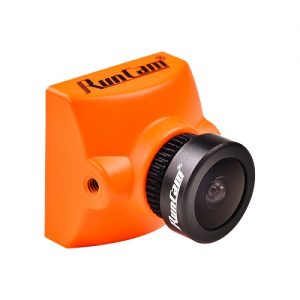 |
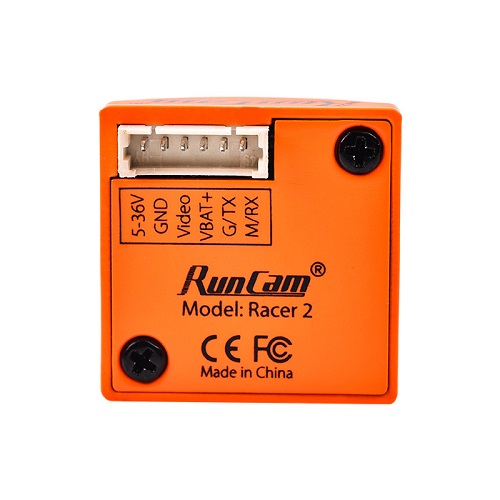 |
Release date – December, 2018
Upgraded RunCam Racer camera with the same ultra low lattency of only 6ms. It is micro sized (19x19mm) camera with 700TVL CMOS sensor. You can switch between 4:3/16:9 aspect ratio and between NTSC/PAL in the camera OSD menu. The main difference from the previous version is ability to switch between the Joystic and UART camera control.
RunCam Racer 2 has two lense options – FOV° 160 (1.8mm lens) and FOV 145° (2.1mm lens).
Available @
RunCam: https://shop.runcam.com/runcam-racer-2/
RunCam Racer 2 User Manual: https://www.runcam.com/download/Racer2-Manual.pdf
Specification:
Image Sensor: Super WDR CMOS Sensor
Horizontal Resolution: 700TVL
Lens: 1.8mm FOV160° / 2.1mm FOV145°
Screen Format: 4:3 / Widescreen Switchable
Signal System: NTSC / PAL Switchable
Mirror/Flip: Available
Integrated OSD: Yes
One Touch Scene Setting: Personal / Lightrax / Outdoor / Indoor / Cloudy / Twilight
S/N Ratio: >50dB
Electronic Shutter Speed: Auto
Min. Illumination: 0.01Lux@1.2F
WDR: Super WDR
Day/Night: Auto
Menu Control: Joystick Control / UART Control Switchable
Power: DC 5-36V
Current: 110mA@5V / 40mA@12V
Housing Material: ABS
Net Weight: 5.5g
Dimensions: L19mm*W19mm*H18mm
RunCam Racer 4
Upgraded RunCam Racer 3 camera with the added support of the DJI digital FPV system. Actually it supports the both Analog and Digital FPV systems. Just like the Caddx Nebula. This similarity is not the accidental (see below).
This is the first RunCam digital camera. However, Caddx has accused the RunCam of blatantly copying their Nebula camera. Read the whole RunCam Racer 4 story here.
The analog part of the camera is almost exactly the same as RunCam Racer 3. It has the same 1000TVL Super WDR CMOS Sensor, only it comes with one lens option of 1.8mm FOV160°.
In order to use with the DJI module, you need to unscrew the back of the camera and plug in the ribbon cable to the MIPI interface. Additional back cover for the digital cable is supplied with the camera.
Release date – September, 2020
Available @ RunCam: https://shop.runcam.com/runcam-racer-4/
Banggood: https://www.banggood.com/RunCam-Racer-4-Camera-1000tvl-720P-…-1732281.html
Model: RunCam Racer 4
Image Sensor: Super WDR CMOS Sensor
Resolution Analog: 1000TVL Digital: 1280*720@60fps
Lens: 1.8mm FOV160°
Shutter: Rolling Shutter
One Touch Scene Setting: Personal / Lightrax
Menu Control: Cable Control / Remote Control Switchable
Power Analog: DC 5-36V, Digital: DC 3.3V
Current Analog: 110mA@5V, Digital: 350mA@3.3V
Housing Material: ABS
Net Weight: 6g
Dimensions: L19mm*W19mm*H20mm
RunCam Robin
RunCam Robin is one of the cheapest Runcam cameras and targeted for the budget builds. Robin is CMOS 700TVL sensor camera. Low latency (6ms) and and Extremely Wide Dynamic Range makes this camera competitive in the lower price range camera group.
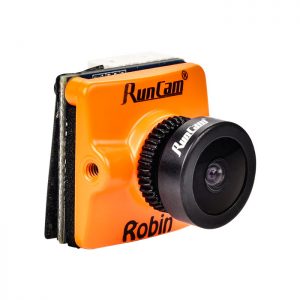 |
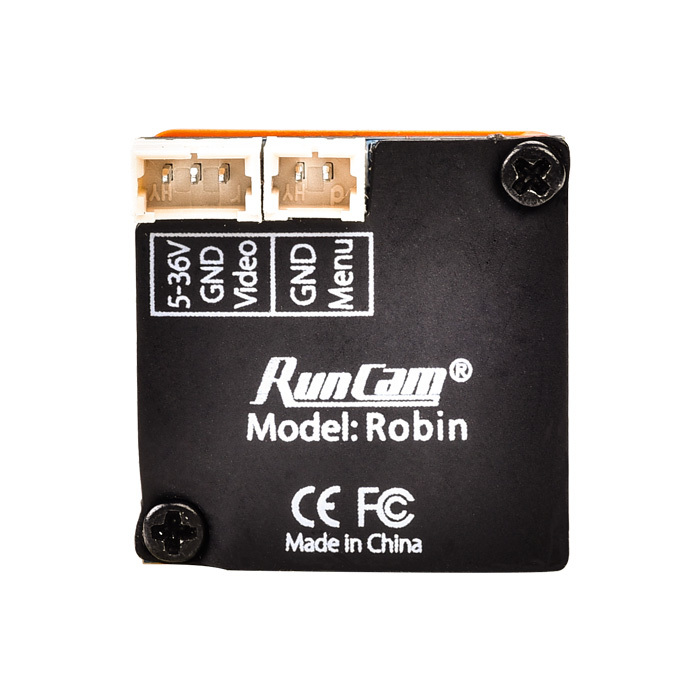 |
Release date – January, 2019
RunCam Robin can be purchased in two lens options: 1.8mm (M8) FOV 160° and 2.1mm (M8) FOV 145°.
Available @
RunCam: https://shop.runcam.com/runcam-robin/
RunCam Robin User Manual: https://www.runcam.com/download/Robin-Manual.pdf
Specifications:
Image Sensor: 1/3″ 120dB WDR CMOS
Horizontal Resolution: 700TVL
Lens: 1.8mm (M8) FOV160° 2.1mm(M8) FOV 145°
Mirror/Flip Available
Signal System: NTSC / PAL Switchable
S/N Ratio >50dB
Electronic Shutter Speed Auto
Auto Gain Control (AGC) Auto
Min. Illumination: 0.01Lux@1.2F
WDR: 120dB
DNR: 2DNR
Day/Night Color/B&W
Menu Control: JOYSTICK
Power: DC 5-36V
Current: 120mA@5V, 50mA@12V
Housing Material ABS
Net Weight: 5.5g
Dimensions: L19mm*W19mm*H18mm
Latency: 6ms
RunCam Nano 2
RunCam has totally redesigned first version of their Nano camera and upped the performace to be on pair with the RunCam Racer 2. Nano2 camera is aimed at the TinyWhoop and micro quads market. RunCam Nano2 has 1/3 CMOS 700TVL sensor and is available in 2.1mm and 1.8mm lenses options. It has 4:3 aspect ratio and is NTSC/PAL switchable.
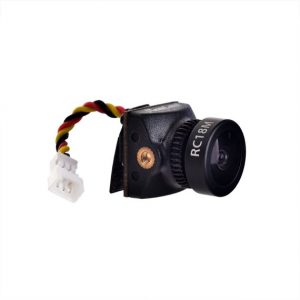 |
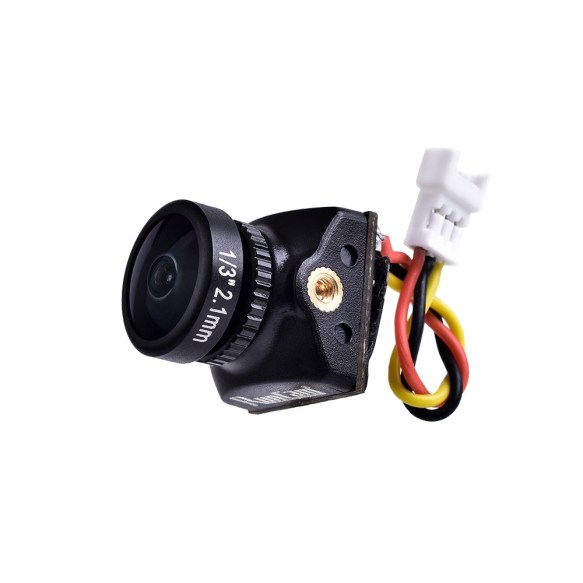 |
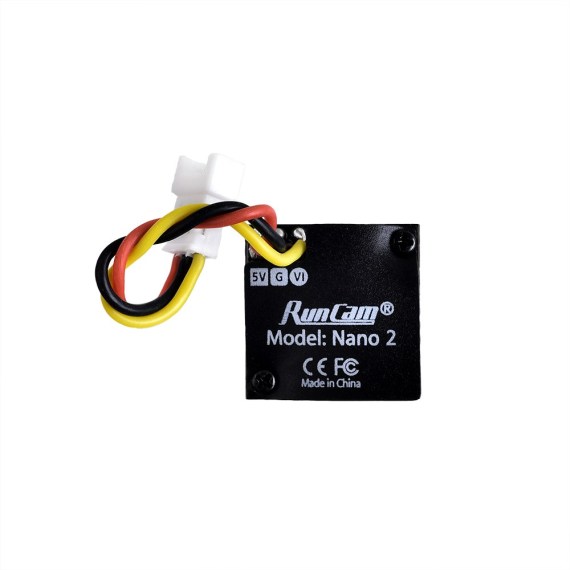 |
Release date – April, 2019
Available @ RunCam: https://shop.runcam.com/runcam-nano2/
Specifications:
Model: RunCam Nano 2
Image Sensor: 1/3″ CMOS
Horizontal Resolution: 700TVL
Lens: 2.1mm(M8) FOV 155° / 1.8mm (M8) FOV 170°
Signal System: NTSC / PAL
S/N Ratio: >50dB
Electronic Shutter Speed: Auto
Auto Gain Control (AGC): Auto
Min. Illumination: 0.01Lux@1.2F
D-WDR: Auto
Day/Night Color
Power: DC 3-5.5V
Current: 110mA@5V 120mA@3.3V
Housing Material: ABS
Net Weight: 3.2g
Dimensions: L14mm*W14mm*H16mm
RunCam Nano 4
RunCam has again redesigned the Nano camera. This time it weights 2.9g and has the same 2.1mm lens from Nano2 camera. RunCam Nano 4 has 1/3 CMOS 800TVL sensor and is available in 2.1mm lenses options. It has 4:3 aspect ratio and is NTSC/PAL switchable.
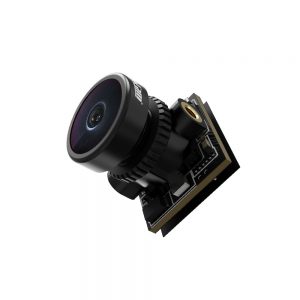 |
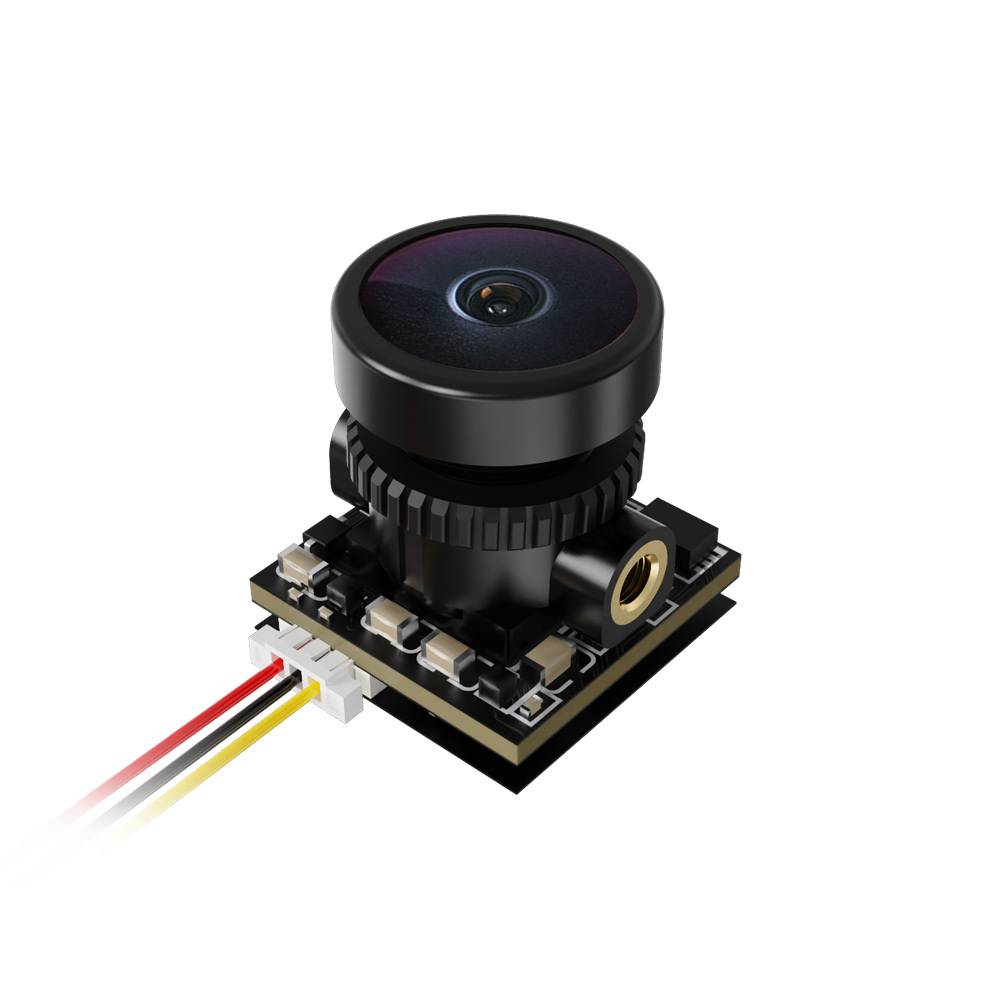 |
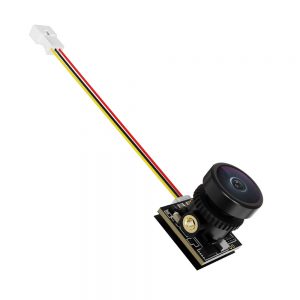 |
Release date – September, 2020
Available @ RunCam: https://shop.runcam.com/runcam-nano4/
Banggood: https://www.banggood.com/RunCam-NANO-4-1-or-3-inch-CMOS-…-1737647.html
Specifications:
Model: RunCam Nano 4
Image Sensor: 1/3″ CMOS
Horizontal Resolution: 800TVL
Lens: 2.1mm(M8) FOV 155°
Signal System: NTSC / PAL
S/N Ratio: >50dB
Electronic Shutter Speed: Auto
Auto Gain Control (AGC): Auto
Min. Illumination: 0.01Lux@1.2F
D-WDR: Auto
Day/Night: Color
Power: DC 3.3-5.5V
Current: 160mA@5V, 180mA@3.3V
Housing Material: ABS
Net Weight: 2.9g
Dimensions: L14mm*W14mm*H14mm
RunCam Racer Nano 2
RunCam Racer Nano 2 camera is upgraded RunCam Racer Nano. Nano 2 camera is aimed at the TinyWhoop and micro quads market. Racer Nano 2 has got 1/3 CMOS 1000TVL sensor (vs 700TVL in the Racer Nano) and is available in 2.1mm and 1.8mm lenses options. Camera chipset and the lens are as same as the famous RunCam Racer 2, so it also has super WDR with racing-level 6ms low latency. It has switchable 4:3 and 16:9 aspect ratio and is also switchable NTSC/PAL. Racer Nano 2 weights 3.6 grams and has connector sockets instead of the presoldered wires. There are debates whether it is good or bad. Ones say presoldered wires save weight and space, others say it is uper convenient to change the broken camera in the field using the connectors.
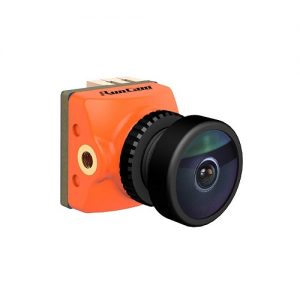 |
 |
Release date – November, 2019
Available @
RunCam: https://shop.runcam.com/runcam-racer-nano-2/
Specifications:
Model: RunCam Racer Nano 2
Image Sensor: Super WDR CMOS Sensor
Horizontal Resolution 1000TVL
Lens: 2.1mm (M8) FOV 145° / 1.8mm (M8) FOV 160°
Screen Format: 4:3 / 16:9 Switchable
Signal System: NTSC / PAL Switchable
Mirror System: Available
Integrated OSD: Yes
One touch Scene Setting Personal / Lightrax / Darkness
S/N Ratio: >50dB
Electronic Shutter Speed: Auto
Min. illumination 0.01Lux@1.2F
WDR: Super WDR
Day/Night Color
Menu Control Gesture Control / Joystick Control
Power: DC 5-36V
Working Current 100mA@5V / 40mA@12V
Housing Material ABS
Net Weight: 3.6g
Dimensions: 14*14*16mm
Caddx Turbo SDR2 Plus Freestyle & Race
Updated SDR2 camera in two options – Freestyle and Race. Freestyle version offers more resolution and details in the picture, while Race version offers super low latency in the video feed. Both cameras use SONY Exmor-R STARVIS sensor with back-illuminated pixel technology and provides higher sensivity (hence the name STARVIS) in the low iluminated environment (0.0001 Lux). Freestyle version uses 1200TVL and Race version uses 1000TVL resolution SONY sensors.
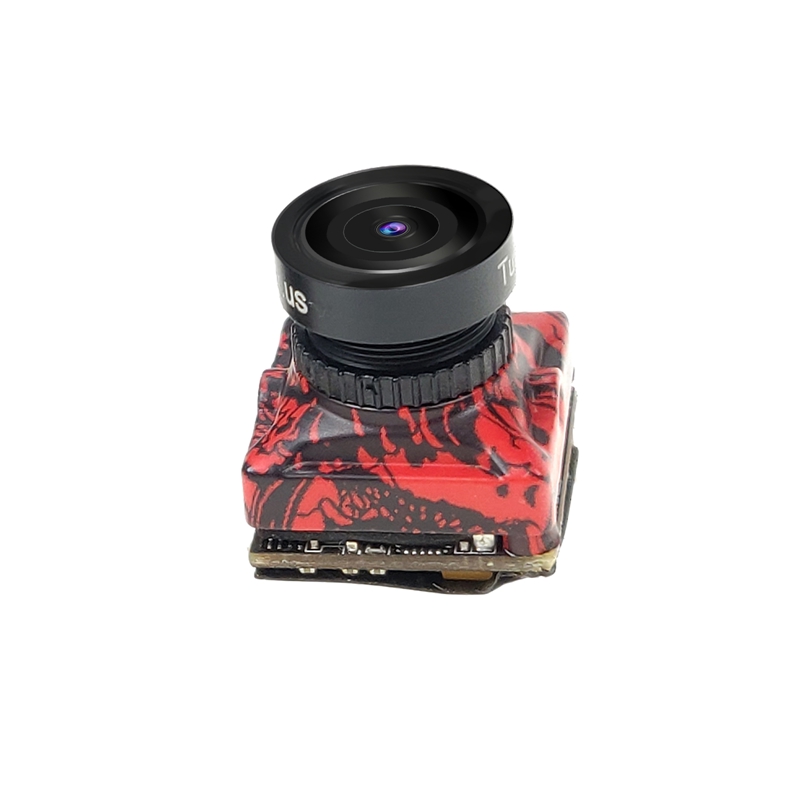 |
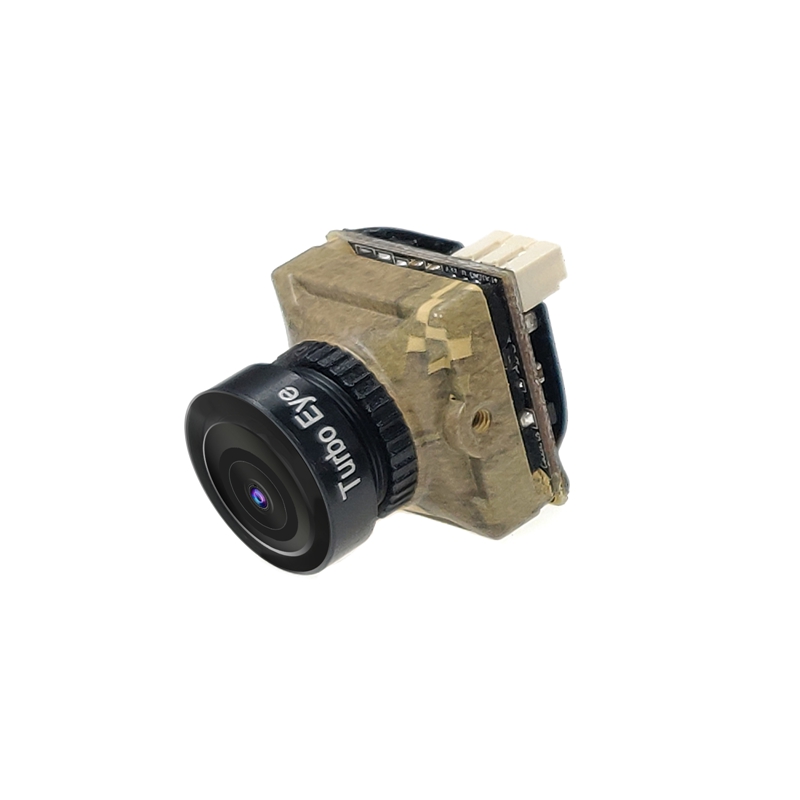 |
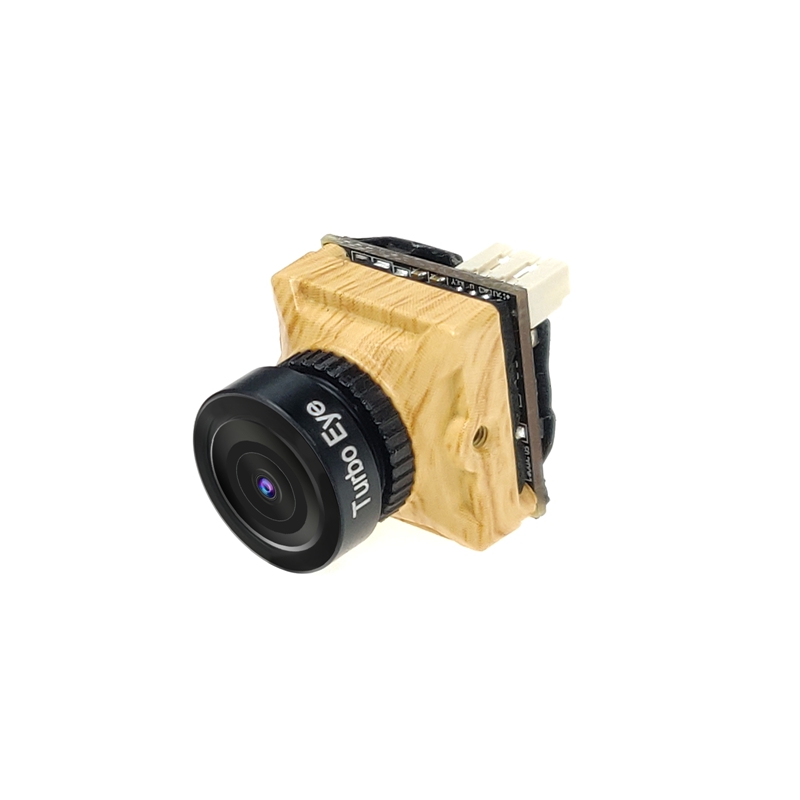 |
Available @ Banggood
Release date: September, 2018
Specifications
Model: Turbo micro SDR2 plus (Freestyle version)
Image Sensor: 1/2.8″ SONY Exmor-R STARVIS sensor
Horizontal Resolution: 1200TVL (freestyle), 1000TVL (race)
TV System NTSC & PAL (changeable)
IMAGE: 16:9 & 4:3 (changeable)
WDR Super WDR (Double Scan)
Min. Illumination: 0.0001 Lux@F1.8 (Starlight)
Lens: Full Size (M12) Turbo Eye Lens, with F1.8 focal distance
Synchronization Internal
Electronic Shutter PAL: 1/50~100,000; NTSC: 1/60~100,000
S/N Ratio >60dB (AGC OFF)
Video Output CVBS
Camera: OSD ADVANCE MENU
DNR 3-DNR
LANGUAGE ENG/FRANCE/RUS/SPA/PU/KOREA/CHN/JAPAN
Day/Night Auto/Color/B&W/EXT
Dimensions: 19mm*19mm*19mm (freestyle), 19mm*19mm*17mm (race)
Wide Power Input DC 5-40V
Work Temperature -20℃~+60℃
Work Humidity 20%~80%
Weight 5.5g (freestyle), 6.4g (race)
Caddx Ratel
Ratel has big 1/1.18 inch Starlight CMOS sensor. Horizontal resolution is 1200TVL and the minimum illumination is only 0.0001lux. Camera for low light applications.
Camera is availabe in F1.66 mm, F2.1 mm or F2.1 mm+ND filter lens options.
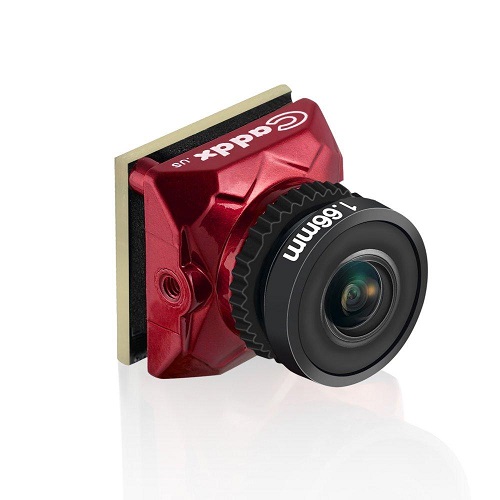 |
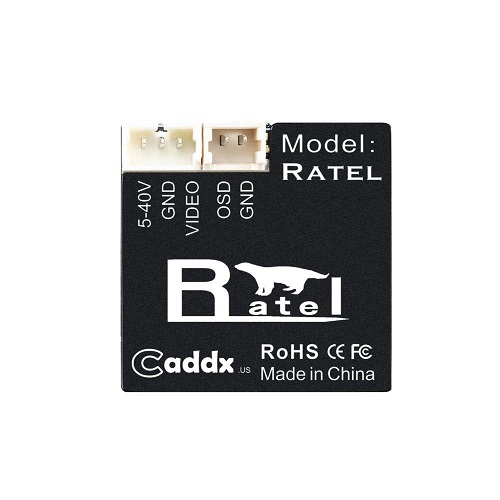 |
Available @
Caddx: https://caddxfpv.com/products/11
Release date: March, 2019
Specifications:
Name: Caddx Ratel
Color: Red, Yellow (optional)
Lens: 1.66mm, 2.1mm (optional)
Image Sensor: 1/1.8″ Inch starlight HDR sensor
Horizontal Resolution: 1200TVL
FOV: 180 Degree
Min. Latency: 8ms
TV System: NTSC & PAL (changeable)
Image: 16:9 & 4:3 (changeable)
WDR: Super WDR (HDR)
Min. Illumination: Starlight 0.0001lux
Synchronization: Internal
Electronic Shutter: PAL: 1/50~100,000; NTSC: 1/60~100,000
S/N Ratio: >60dB (AGC OFF)
Video Output: CVBS
Camera OSD: Separate OSD
DNR: 3-DNR
Language: ENG/FRANCE/RUS/SPA/PU/KOREA/CHN/JAPAN
Day/Night: Auto/Color/B&W/EXT
Dimensions: 19mm*19mm*19mm
Wide Power Input: DC 5-40V
Work Temperature: -20℃~+60℃
Work Humidity: 20%~80%
Weight: 8g
Caddx Kangaroo
Kangaroo camera has Sony Starvis 1000TVL CMOS sensor. Its the same sensor as in Caddx Turbo SDR2 Plus Race camera. The main difference is Kangaroo is nano sized camera with the 14mm x 14mm dimensions. Camera has the adapter to make the camera mountable into 19mm x 19mm frame.
Camera weight is only 3.5 grams. Camera is availabe in F2.1 mm or F2.1 mm 7G (7 glases) lens options.
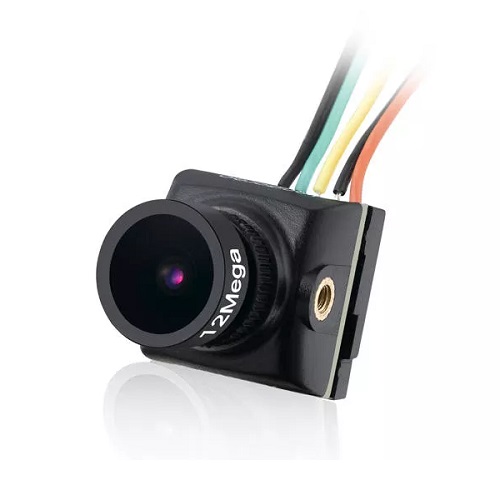 |
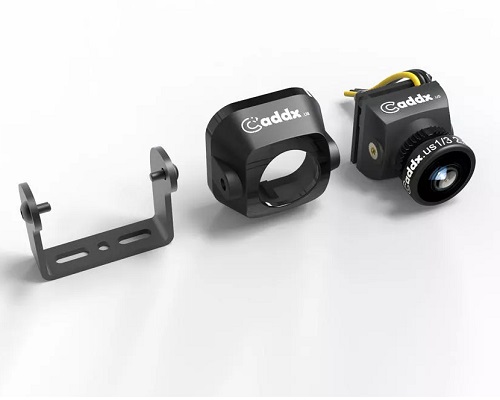 |
Available @
Caddx: https://caddxfpv.com/collections/fpv-camera/products/caddx-kangaroo
Banggood: https://www.banggood.com/Caddx-Kangaroo-1000TVL-2_1mm-…-camera-For-RC-Drone-p-1544336.html
Release date: August, 2019
Specifications:
Name: Caddx Kangaroo
Image sensor: SONY STARVIS sensor
Horizontal: 1000TVL
TV system: NTSC & PAL changeable
WDR: Super WDR
Lens: 12M 78G lens/ 2M 2.1mm Lens
Mini Illumination: 0.001lux@F1.8
Sychronize: Internal
Electronic shutter: PAL: 1/50~100,000; NTSC: 1/60~100,000
Signal to noise ratio: >60dB (AGC OFF)
Video output: CVBS
Camera OSD: Progress menu
Fly OSD: Support
DNR: 3-DNR
Language: ENG/ Frange/ RUS/ SPA/ PU/ Korea/ CHN/ JAPAN
Morning and evening: Auto/ Color/ Black & White/ EXT
Dimension: 14*14mm (expand to 19*19mm)
Wide power input: DC 3.3-5.5V
Operating temperature: -20℃~+60℃
Working humidity: 20%~80%
Net weight: 3.5g (more or less)
Color: Black, White (Optional)
Aspect Ratio: 16:9 & 4:3 changeable
No jello, Extemely low latency 4ms
Built-in OSD
Caddx Ant
Caddx Ant Camera is nano sized camera with the 14mm x 14mm dimensions. It has 1200TVL CMOS sensor, Global WDR and can be configured with OSD menu. There are optional 16:9 and 4:3 image formats and Black/White colors. Camera has the adapter to make the camera mountable into 19mm x 19mm frame.
Camera weight is only about 2g. Camera is available in F1.8 mm lens.
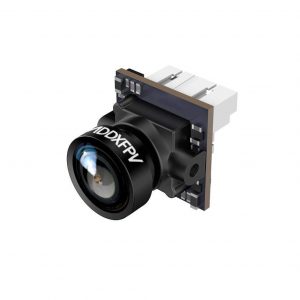 |
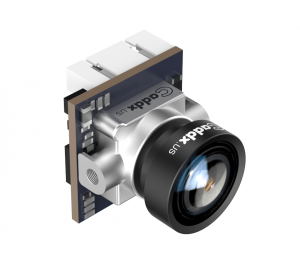 |
Caddx Ant has pin connector for Video Out ant OSD control board.
Available @
Banggood: https://www.banggood.com/Caddx-Ant-1_8mm-1200TVL-16-9-or-4-3-Global-WDR-…-1680599.html
Release date: June, 2020
Specifications:
Model: Caddx Ant
Image Sensor: 1/3″ CMOS Sensor
Horizontal Resolution: 1200 TVL
TV System: NTSC or PAL
OSD menu: Support
Image format: 16:9 or 4:3
Synchronization: Internal
Electronic Shutter: PAL: 1/50~100,000; NTSC: 1/60~100,000
S/N Ratio: >52dB (AGC OFF)
Video Output: CVBS
Lens: 1.8mm
Min. Illumination: 0.001Lux@F1.2
Auto Gain Control: YES
BLC: YES
WDR: Global WDR
DNR: 3D DNR
Dimensions: 14*14mm(with bracket to 19*19mm)
Wide Power Input: DC 3.7-18V
Work Temperature: -20℃~+60℃
Work Humidity: 20%~80%
Weight: 2g (N.W.)
Eachine White Snake
Eachine has released their own (probably not) White Snake FPV camera. It has huge 1/1.8′ sized image sensor and thus minimal starlight illumination capability. Eachine White Snake is available in 1.8mm and 2.1mm lens options.
There are guesses that this camera is actually produced by Caddx.
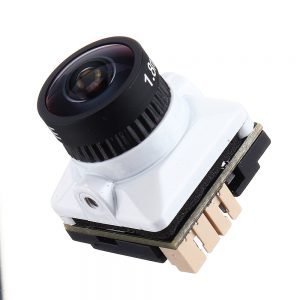 |
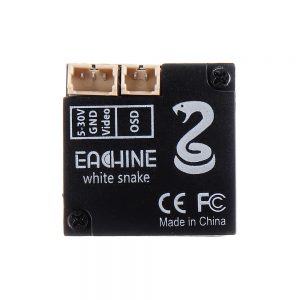 |
Available @
Release date: July, 2020
Specifications:
Name: Eachine White Snake
Horizontal resolution: 1500TVL
Light-sensitive chips: 1/1.8'star level HDR sensor
Lens: 2.1mm FOV130°/1.8mm FOV160°
Video formats: PAL/NTSC (OSD swappable)
Image scale: 16:9/4:3 (OSD swappable)
Wide dynamic: Super advanced wide dynamics (HDR-WDR)
Minimum illumination: Starlight illumination
Synchronous type: The synchronous
Electronic shutter: PAL:1/50-100.000. NTSC:1/60-100.000
Signal to noise ratio:>60db (Automatic gain off)
Video output: CVBS
To switch between day and night: Automatic/ color / Black and white
Camera parameter adjustment: Independent OSD
Digital noise reduction: 3-DNR
Language: English/Chinese/French/Russian/ Spanish/Portuguese/ Korean/Japanese
Working voltage: DC 5V-40V
Net weight: 8g
Size: 19mm*19mm*19mm
2018-09-25 – Article created
2019-01-04 – RunCam Racer 2 added
2019-01-21 – Runcam Robin added
2019-02-26 – Runcam Micro Swift 3 V2 added
2019-03-14 – Foxeer Falkor, Caddx Ratel added
2019-04-07 – RunCam Nano2 added
2019-09-19 – Caddx Kangaroo, Foxeer Falkor 2, RunCam Sparrow 2 Pro added
2019-12-14 – Foxeer Razer Micro & Mini, Runcam Racer Nano 2 added
2020-09-10 – RunCam Racer 4, RunCam Nano 4
2020-10-10 – Foxeer T-Rex, Eachine White Snake
The frame type of the Leader 3 is more like deadcat configuration with the front arms stretched to the sides, than the normal X. Frame size is 130mm. Frame baseplate is 3mm and the side plates are also 2mm, just like in the Leader 120. Leader 3 frame weights 24 grams without and 31 grams with TPU canopy versus 18 grams Leader 120 frame. Leader comes in two versions Leader 3 and Leader 3 SE and the the difference is only 3D printed canopy that is available in different colors. Price difference between the SE and regular version is about $5.
You can buy the printed canopy as a spare part.
Leader 3 has got new upgraded FullSpeed SZ-Speed 1106C2 4500KV motor that are capable to work with the 2S, 3S and even 4S battery.
Inside the Leader 3 there is FullspeedRC FSD428 28A F411 Flight Tower stack, capable of the 2-4S battery input.
Lets look at the Leader 3 stack in details.
Flight Controller FSD F411
Specification:
Brand Name:FullSpeed FSD F411 Flight Controller
Input Voltage: 2-4S Lipo
Built-in Betaflight OSD to adjust PID
BEC Output: 5V@3A
Size: 27.5×27.5mm board, 20x20mm mounting holes (M2)
Weight: 3.4g
Support SBUS/PPM/DSMX receiver
Usage: Original Parts for FullSpeed FSD428 FSD435 Series Flytower
Connection diagramm of the FSD F411Flight Controller
4-in-1 ESC FSD 28A 2-4S
Brand name:Full speed
Product Size: 27 x 27 x 5mm
Mount hole: 20 x 20mm
Firmware version: BLHELI_S
Input voltage: 2-4S
Consant Current: 28A
Peak Current: 35A (10S)
BEC output: No
Video Transmitter TX600
Leader 3 has got new FSD TX600 video transmitter that outputs from 25mw up to 600mW and supports SmartAudio.
FullSpeed FSD TX600 25mW-600mW VTX FPV Transmitter
Output power: PIT/25mW/100mW/200mW/400mW/600mW switchable
Control mode: BFOSD control(RX)/button
Video system: NTSC/PAL
Antenna: IPEX
BAT: 5V Recommended
Frequency: 5.8GHz 6 bands 48 channels, with Raceband: 5362-5945 MHZ
(TX600’s factory set up is on lock mode (5733-5866MHZ unlock). Please follow your local laws and regulations
if you need to unlock the frequency.)
Size: 26*26mm(L*W), 20*20mm mounting hole
Weight: 2.3g
FullSpeed TX600 VTX connection diagram
Connecting the receiver
If your receiver SBUS signal don’t need to be inverted, use the D/S/P port on the top side of the FC.
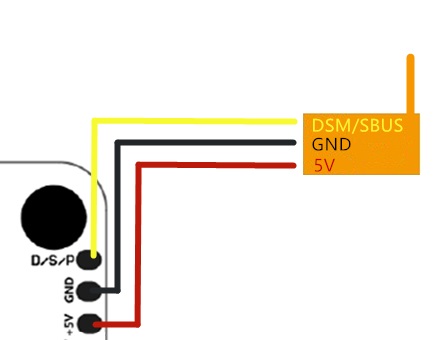
If your receiver SBUS signal needs to be inverted, use the SBUS port on the opposite side of the FC.
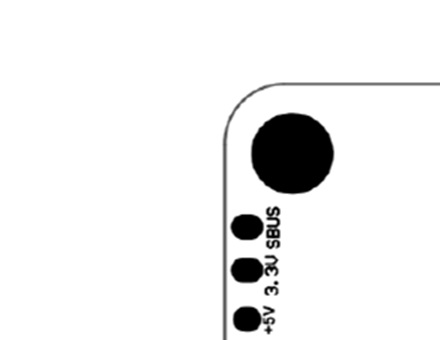
FrSky XM and XM+ receivers have standart SBUS signal that needs to be inverted to connect it to F4 MCU based Flight Controllers. So the SBUS wire (yellow) from receiver goes to the inverted SBUS input from the bottom side.
Receiver can be attached to the inner side of the canopy by double sided tape.
Receiver antennas can be installed in the dedicated holes in the canopy.
The motor wires are not fixed and can be cut by the prop or the branch in the case of the crash.
It is good idea to fix and protect them with the tape.
Setting up the Leader 3
Need to be noted that FSD F411 flight controller boar use customized Betaflight/Butterflight firmware – FULLSPEEDF411. It is not in the official Betaflight/Butterflight released firmware lists and must be downloaded from FSD F411 product page on the FullSpeed web site:
http://www.fullspeedrc.com/fsd-f411-flight-controller-for-fsd428-fsd435_p0162.html
The FSD F411 flight controller will support a gyro loop rate of up to 32khz however maximum pid loop frequency is limited to 16khz. To run at this speed you will need to overclock the CPU by entering the code: Set cpu_overclock = 120mhz in CLI.
Leader 3/3SE comes almost completely preconfigured. There is not much what to change. Here are my changes:
Ports
You should leave as it is – Serial RX on the UART1 and Tramp VTX control on the UART2.
Configuration
Change Arming angle to 180 degrees to be able to arm after the crashes.
I am also enabling the permanent AIR mode.
PID Tuning
Modes
My modes setup is Arming with AUX1, Horizon on the middle of AUX2 and Beeper on the top AUX2. Flip Over After Crash (turtle mode) is on AUX3. Your modes setup can be totaly different – everone has its own liking.
OSD
Links: Leader 3/3SE is available @
https://www.banggood.com/FullSpeed-FSD-Leader-3-…-1325019.html
https://www.banggood.com/FullSpeed-Leader-3SE-…-1332592.html
http://www.fullspeedrc.com/fsd-leader-3-3se-fpv-racing-drone-…_p0163.html
Spare parts:
Motors @ https://www.banggood.com/FullSpeed-1106C2-4500KV-2-4S-Brushless-Motor-…-1388637.html
Canopy @ https://www.banggood.com/FullSpeed-Body-Cover-Canopy-Drone-Body-Shell-…-1366570.html
Gallery
History:
2018-11-30: Article published
2019-05-10: Updated
Here are all the parts, that were gathered for the build.
Parts List
This is the list of the components I will be using this build:
Banggood
Happymodel CrazyBee F3 Pro (with FrSky/Flysky/DSM RX) – $39.00
Happymodel SE0802 1-2S 16000KV 19000KV Brushless Motor – x $8.71
Happymodel Mobula7 Frame V1 – $2.99, Frame V2 – $3.59, Frame V3 – $4.59
Happymodel Canopy – $3.66
Happymodel Propellers – $2.55
Turbowing TWC25 1/4 CMOS 700TVL Camera – $11.21
Turbowing VTX 25mW – $10.36
Total cost: $101.62
Bind-N-Fly Mobula7 price is $89, so DIY version of the Mobula7 will be no cheaper, also taken into consideration that with the BNF version you’ll also get 4 batteries and the charger. If you already have a charger and some spare 1S batteries then you can look at this DIY Mobula7 kit from XT-Xinte. It is only $72 for FrSky receiver version. Other possible DIY build kits are listed on XT-XINTE.
I had the Mobula7 frame was purchased some time before this build and it is V1 frame. I have decided to build with this frame and replace it with the V2 frame once it will break to the point it could not be fixed.
The weight of the frame is 4.7 grams, canopy – 2.2 grams, 40mm propellers – 3.2 grams.
For the filght controller I have purchased Happymodel CarzyBee F3 AIO FC
The weight of the Flight Controller, pigtail, rubber grommets and screws is 5.4 grams.
CrazyBee F3 flight controller package includes two battery pigtails. Double connector pigtail is for connecting two 1S batteries as 2S battery, and single connector is for 1S battery. If you will use double connector pigtail you’ll still be able to fly with 1S battery by shoritng on of the connectors with jumper plug.
Motors are Happymodel 0802 16000KV brushless motors.
The weight of the motors is 7.6 grams (1.9g one motor)
The camera is Turbowing 700TVL CMOS small size camera and VTX is Turbowing 25mW transmitter. It has no SmartAudio, so I will have to set the channel and band via push button.
Weight of the FPV components is 3.9 grams, but we can strip the wires and change the antenna into simple wire to reduce the weight.
Now let’s assemble everything into Mobula7.
Build step-by-step
Please refer to the CrazyBee F3 PRO flight controller connection diagram before the soldering the wires.
First step is soldering the power leads.
I have soldered the 2S power pigtail, but also have made a small power jumper plug to be able to power from the single cell battery. At least to try if the Mobula7 can actually fly with 1S battery.
Diy battery jumper is made from spare 2pin 2mm JST PH-Style plug.
First test – power on single FC – passed.
Second step is soldering the VTX +5, GND and VIDEOin to the FC, Camera +5, GND to the VTX and Camera VIDEOout cable to FC.
Now power this FPV + FC system by 1S battery – passed. 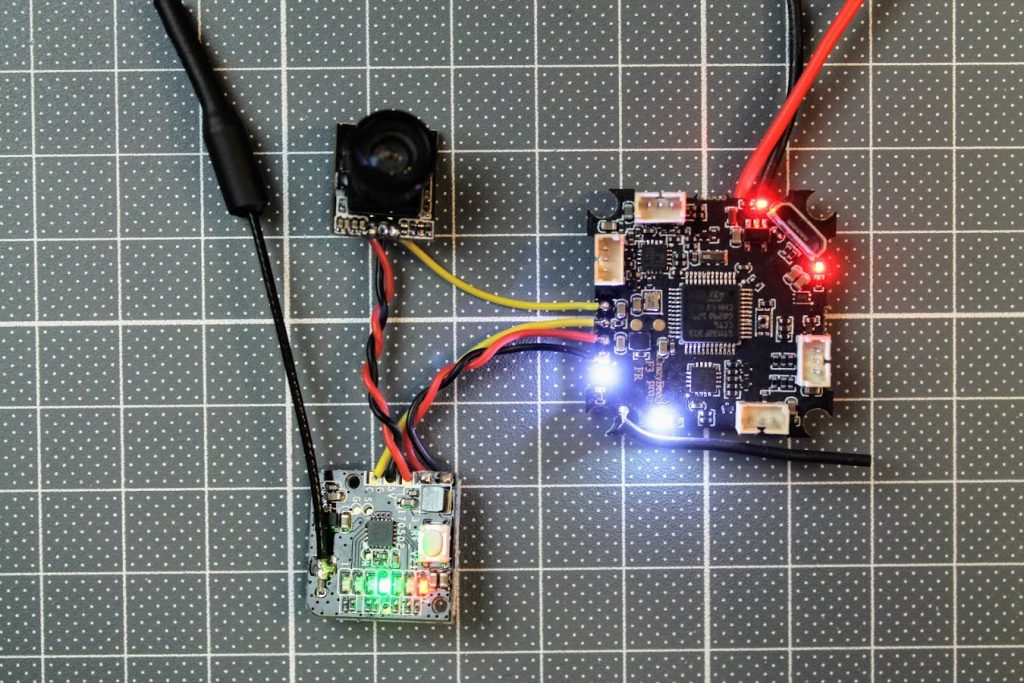
Video is clear, no interferences seen in the picture.
VTX was heat-shrinked and attached to the FC by double side adhesive tape. Camera was installed into adjustable front part of the canopy and secured with a dab of super glue.
Next step was attaching the motors to the frame by three screws. It is advised to add small amount of loctite on the screw thread to ensure they will not unscrew in the middle of the flight.
FC should be mounted on the rubber grommets by inserting the FC into grommet slots first and then pushing them down on the standofs.
The motors and FC is installed in the place, now canopy should be installed next.
Canopy is attached to the frame by two screws on the sides. Somehow the third rear screw does not fit into the slot.
Total weight without the battery is 28.4 grams.
Final result.
Setting up the Mobula7
CrazyBee F3 PRO flight controller comes already preconfigured. Almost plug and play. It even has aircraft name set to Mobula7!
Special notes fo the receiver setup. CrazyBee F3 PRO has on board integrated FrSky receiver, connected via the SPI bus. There are optional variants with FlySky and DSM receivers, but the DSM receiveris not connected via SPI and should be configured as regular serial receiver. SPI RX configuration has many differnt protocols to select.
If you want to use FrSky D8 protocol, then choose FRSKY_D option.
If you want to use FrSky D16 protocol, then choose FRSKY_X option.
You can bind the receiver by pushing the bind button for a few seconds and then selecting the bind function on the transmitter.
Alternatively you can enter the onboard SPI RX receiver into the bind mode via CLI command “bind” (works in betaflight 4.0). You will not get any response in the CLI command window, but the receiver does enter into Bind mode.
[To be continued]
]]>Specifications
Frame
Wheelbase: 130mm
Material: 3K carbon fiber
Top plate thickness: 2mm
Bottom plate thickness: 3mm
Artist: hydrographics transfer printing
4in1 Brushless ESC
Continuous current: 20A
Peak current (5S): 25A
Input voltage: 2-4S
Supports Dshot600, Dshot300, Dshot150
Size: 27x27mm
Weight: 3.3g
Omnibus F4 Flight Controller
CPU: F4STM32 F405 SCM
Input voltage: 3-4S
Sensor: MPU6000 SPI
Built in OSD
Built in 5V 2A BEC
Size: 25x25mm
Weight: 2.3g
TS1507 4100KV Brushless Motor
KV: 4100
NO.OF cell: 2-4S
5.8G 40CH VTX
Input voltage: 7-24V
Dimensions: 20x20mm
Size: 27mm×27mm×4.5mm
Adjustable 25mw / 100mw / 200mw
Supports smart audio (remote OSD parameter adjustment)
Camera
FOXEER Arrow MICRO PRO Camera
Sensor: 1/3” Sony SUPER HAD II CCD+Nextchip 2040 DSP
Resolution: 600TVL(color) 650TVL(B&W)
Min. Illumination: 0.01Lux
WDR: support
OSD programming board: support
DNR: 2D DNR
OSD: Edit Name, Power, Flying time
Input Power: 5-40V
Power Consumption: 70mA
Low voltage alarm: Support
Preset mode: DEF, VIVID, SUNNY, CLOUDY,LED TR,USR1
Size: 18.5*19mm (bracket excluded)
Weight: 5.3g (bracket excluded)
Components
Quadcopter package contents: TS130 quad, 4 pairs of the Dalprop 3056 propellers, 3M battery non slip mat, protective battery holder and battery strap, spare screws, zip ties, two carbon fiber wrenches that can be used to tighten the prop nuts or to be hanged on the key ring as a decoration.
Frame size is 135 mm between the motor axis.
Frame thickness is 3 mm.
Frame height between the lower and upper plates is 25 mm.
Frame itself looks like the shrunken version of the TS215 frame.
TS130 quadcopter weight is only 139 grams.
Weight with XM+ receiver is 140 grams.
Camera is FOXEER Arrow MICRO PRO, which is nice, but a little outdated and not the best choice for this quad.
Motors are 1507 sized 4100KV. They are rated for 2-4S battery.
Inside the frame there is 3 level stack with 20A 4in1 ESC, F4 FC and VTX.
All three boards are stacked one on another by 10pin connectors. The whole stack can be disassembled easily – all components are plugged in, except the motors are soldered to the 4 in 1 ESC.
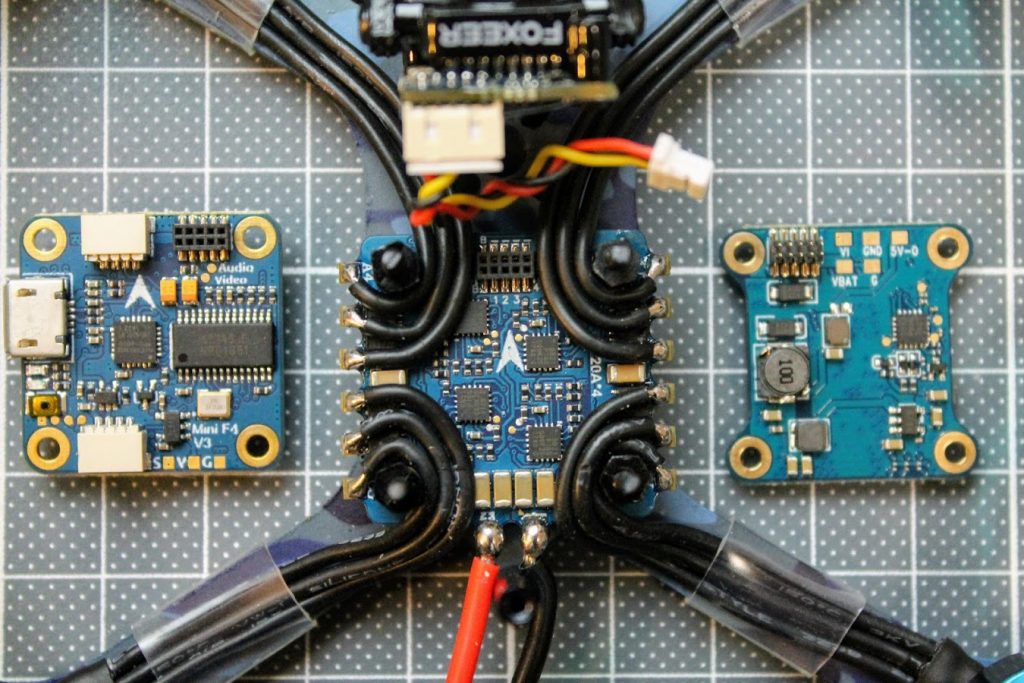 The VTX has minimun controls – one button and 3 LED for displaying the status. Antenna is connected by the uFL (iPEX) connector.
The VTX has minimun controls – one button and 3 LED for displaying the status. Antenna is connected by the uFL (iPEX) connector.
FC has F4 MCU and MPU-6000 SPI gyro on board.
FC has OSD Interesting that FC has Video and Audio inputs and VTX also transmits the supplied audio together with the video feed.
I have found out that the stack is actually the LDARC/KingKong 20x20mm 20A Flytower. It is either manufactured by LDARC or it is a cloned stack. Except the VTX it is unique and not seen before, but also possible has just redesigned PCB.
Here are the photos side by side of the Wizard TS130 stack and LDARC Flytower stack. Notice the same placement of the components and the orientation arrow in the middle in the 20A 4in1 ESC photos.
Flight controllers looks like the twins.
Wizard TS130 VTX (on the right) is different from the Kingkong/LDARC Flytower VTX, but the specs are the same and the firmware is probably the same, just redesigned PCB.
LDARC Flotower user manual can also be used as Wizard TS130 stack user manual: http://15736572.s21d-15.faiusrd.com/61/ABUIABA9GAAg8rC31gUo_Nrp3wI.pdf
Connection diagrams
[To be continued]
Available @ Banggood: https://www.banggood.com/Eachine-Wizard-TS130-FPV-Racing-Drone-PNP-Omnibus-F4-OSD-20A-Dshot600-40CH-Smart-Audio-200mW-VTX-p-1356738.html
All spare parts list: https://www.banggood.com/search/ts130.html
]]>Parts list
- FC Whoop PRO from GearBest ($18.17): https://www.gearbest.com/esc/pp_1625685.html
- 7x16mm motors from Banggood: https://www.banggood.com/716-Motor-17600KV-…-1282508.html or EBAY: https://www.ebay.com/sch/i.html?_nkw=tiny+6x+716+motors
- Frame kit from Banggood: https://www.banggood.com/Frame-Kit-…-1275067.html or EBAY: https://www.ebay.com/sch/i.html?_nkw=tiny+6x+frame+kit
Also we will need:
- AIO BS2-OSD Camera from AKK: https://www.akktek.com/products/micro-aio-cameras/akk-bs2-osd.html
Frame kit comes in in carton box. If your box was abused during the shippment and your frame was defomed you can easily reshape it by submersing it into hot water.
Frame kit contents: The frame itself.
4 pcs various colors canopy
A tiny led PCB
That goes into slot on the back of the frame.
4 sets of various color propellers (total 16pcs)
Rubber rings, grommets and screws. This is very handy as flight controllers comes without any mounting accessories.
Flight controller
Flight controller was selected a cheap F3 Whoop Pro board. It comes with 2.0mm JST pigtail (aka Power whoop plug) for connecting battery and 1.25mm pitch sockets to solder onto PCB for motor connection.
Socket orientation for soldering should be this way:
Motors
Original motors for KingKong/LDARC 7x are 7x16mm sized 17600KV ones:
You should buy two sets (2 CW and 2 CCW rotation).
Camera
We need a micro AIO camera with OSD support – camera should have Video Out and Video In wires. AKK BS2-OSD camera has the right pinout so it will fit perfectly.
Last updated: 2018-04-18
[To be continued]
]]>
